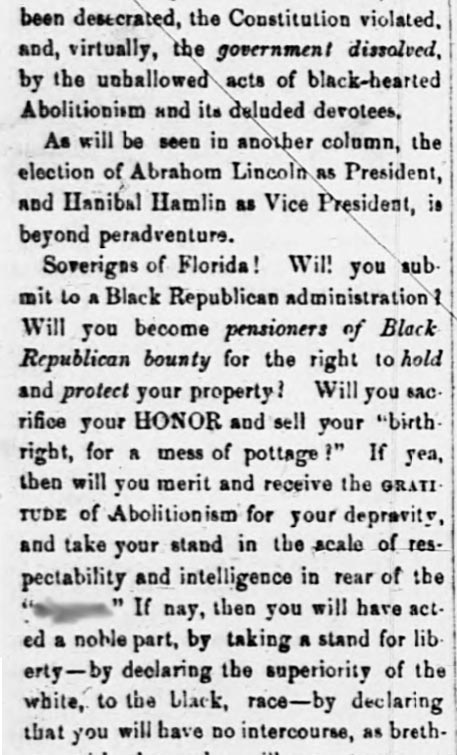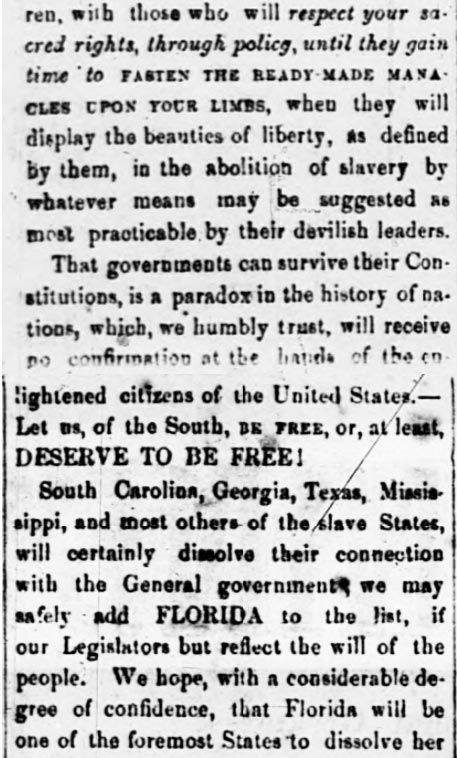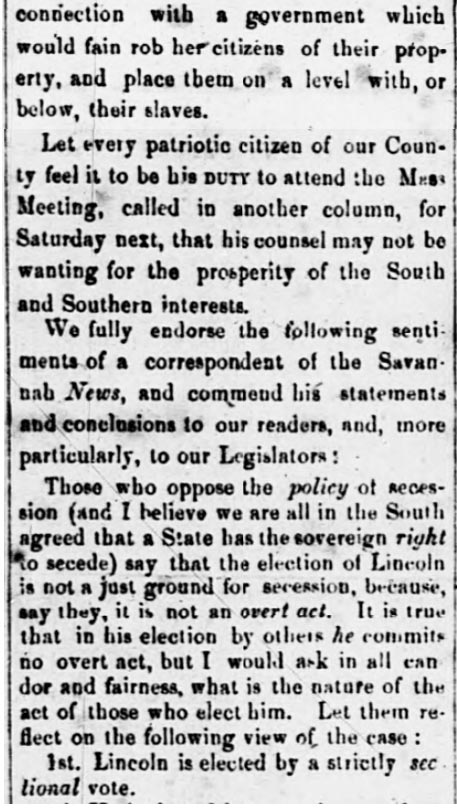|
 TampaPix
is grateful to the Judges of the
1oth Judicial Circuit (Hardee, Highlands, and Polk Counties),
namely, Hon. Judge Peter F. Estrada and Hon. Judge Michael E.
Raiden, who both share an enthusiasm for Florida History and
especially the local history shared by Hillsborough and Polk
Counties. They assisted TampaPix in obtaining the pertinent
material from D. B. McKay's "Pioneer Florida" (a 3-volume
work), and suggested other sources on Judge Magbee (named below),
as well as providing other research advice. TampaPix
is grateful to the Judges of the
1oth Judicial Circuit (Hardee, Highlands, and Polk Counties),
namely, Hon. Judge Peter F. Estrada and Hon. Judge Michael E.
Raiden, who both share an enthusiasm for Florida History and
especially the local history shared by Hillsborough and Polk
Counties. They assisted TampaPix in obtaining the pertinent
material from D. B. McKay's "Pioneer Florida" (a 3-volume
work), and suggested other sources on Judge Magbee (named below),
as well as providing other research advice.
Also, special thanks
to Prof. James M. Denham, Professor of History and Chair of
Florida Southern College, and to E. Canter Brown, Jr., historian,
professor and author, for their assistance in attempting to locate
a portrait of Judge Magbee. Prof. Brown has written many
great works pertaining to the Civil War era of this area,
including Tampa Before the Civil War, Florida's Peace River
Frontier, Tampa in Civil War and Reconstruction, Ossian Bingley
Hart, Florida's Loyalist Reconstruction Governor, and many
more.
According to Prof. Brown, a portrait of Judge Magbee
was among those hanging in the old Hillsborough County Courthouse
that was demolished in 1952. The portraits were then stored
somewhere, but the whereabouts are currently unknown.
Many more resources
are listed throughout and at the end of this feature. |
|
Throughout this feature are
boxes such as this one, which describe events taking place in Tampa as told by James McKay, Jr.
His accounts offer a unique view of Tampa's history
as he lived it. James McKay, Jr. was born in Mobile, Ala.
in 1842 and moved with his parents to Tampa in 1846. In his
later years he wrote two articles about the early history of
Tampa and Hillsborough County. The first was printed in the
Tampa Times, Dec., 20 1921, and was later reprinted in D. B.
McKay’s Pioneer Florida. The second article (the one used in
this feature) appeared
in the Tampa Times, Dec. 18, 1923.
|
|
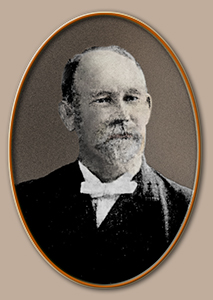 |
"There
have been many articles published by the press of the
early days of Tampa, composed by those who obtained their
information from hearsay and not personal knowledge, that
were only partly correct.
I will, to the best of my memory, relate what I know
from the late 1840s and 1850s of what Tampa was then,
and its slow but substantial growth to the 1870s...Our
family came to Tampa from Mobile, Ala. in 1846." |
|
|
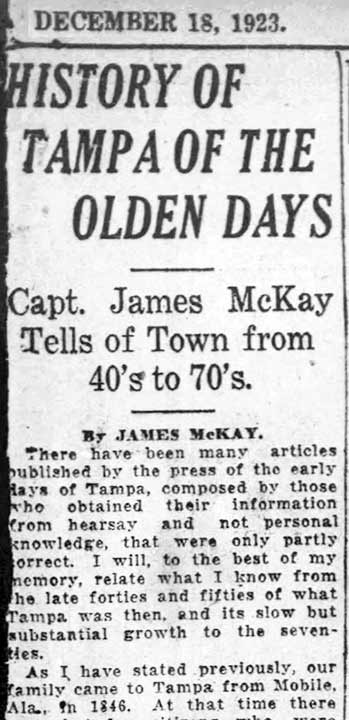 |
|
The photo of James McKay, Jr. above is an enhanced
newspaper photo used on June 5, 1902 when he was
elected mayor of Tampa. It was used again in the 1921 article
and another one in 1923 when he was head of the Old
Timers Society. The artist
attributes his sketch to a 1902 photo. |
|
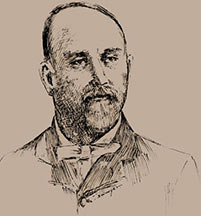
Captain James
McKay, Jr., 1902
34th mayor of Tampa
Sketched by Philip Ayers Sawyer in 1938.
State Archives of Florida
Florida Memory |
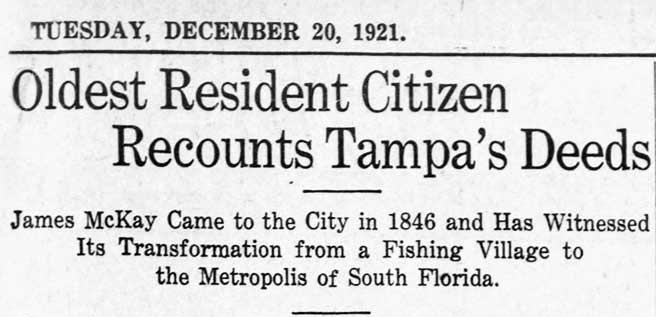 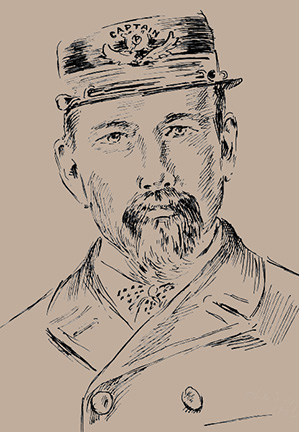
Read more about the
sketch on the left, and this one on the right which
online sources say is James McKay ,Sr. But
TampaPix believes that this is also a sketch of
James McKay Jr.
See why. |
|
Many of the events of the
senior James McKay's life are presented here on
this page and more about him on
these separate related TampaPix pages:
|
|
|
The life of James T. Magbee is
presented here primarily as the late Kyle S. VanLandingham
wrote in James T. Magbee: “Union Man, Undoubted
Secessionist, and High Priest in the Radical Synagogue”
which appeared in
The Sunland Tribune, Journal of the Tampa Historical
Society, Volume XX November, 1994, of which
VanLandingham was the Editor in Chief.
The text in
blue
in this feature is from that work; some details have been
omitted.
The late Kyle VanLandingham, 1996,
while President of the Tampa Historical Society.
|
| D.B. McKay presented a chapter on Magbee in his 3-volume book,
Pioneer Florida published in 1959, which is also
used in this feature. |
Donald Brenham McKay
Editor in Chief of the Tampa Times
Four times Tampa Mayor
Author and Historian
Grandson of Capt. James McKay,
Sr.
38th, 39th, 40th & 42nd Mayor of
Tampa
Photo from
City of Tampa Previous Mayors
|
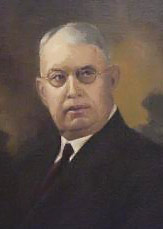 |
Born: July 29, 1868
Died: September 8, 1960
1st term - 2 yrs.
Jun 10 ,1910 - April 10, 1912
2nd term - 4 yrs.
Apr. 10, 1912 - Apr. 18, 1916
3rd Term - 4 yrs.
Apr. 18, 1916 - Jun. 1O, 1920
4th Term
- 4 yrs.*
Jan 4, 1928 - Oct 27, 1931
*This
term
was to end on Jan. 4, 1932, but he resigned early to tend
to business interests. |
| |
|
|
|
|

The history of the railroad coming to Tampa is
presented in context with the life of James T. Magbee, in
sections in the style of this one.
The railroad history is from Canter Brown, Jr's Tampa and the
Coming of the Railroad, 1853-1884, as presented in
The Sunland Tribune, Volume XVII November, 1991 Journal
of the Tampa Historical Society. Some info comes from
Tampa, A History of the City and the Tampa Bay Region of
Florida, by Karl H. Grismer, edited by D. B. McKay, 1950.
|
| |
|
Text in
GREEN is opinion, comments or corrections by TampaPix.
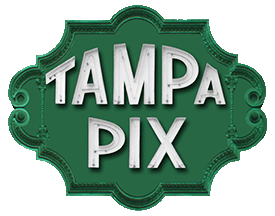 |
A WORD ABOUT WORDS--What did it
mean during the
19th Century? |
|
&c |
etc. / et cetera |
|
instant / inst. |
Used after a date to refer to a
recent occurrence in the current month |
|
communicated |
Usually found at the beginning or
end of an article, indicates it was written by someone
other than a staff writer and sent (communicated) to the
paper, such as a letter to the editor. |
|
proximo / prox. |
Used after a date to indicate that
date of the next month |
|
ultimo / ult. |
Used after a date to indicate that
date of the previous month. |
|
Colonel / Col. |
This is often used as a title of
respect, social status or wealth, even if the person
never even served in the military. According to
Wikipedia, There is an aristocratic tinge to the
social usage of the title "colonel", which today
designates the southern gentleman, and is archetypal of
the southern aristocrat. (For example,
"Col. Sanders" of fried chicken fame was never a
colonel.) |
|
row |
A fight, usually fistfight but not
limited to one. |
|
carpetbagger |
1. A political candidate who seeks
election in an area where they have no local
connections. 2. A person from the northern states who
went to the South after the Civil War to profit from the
Reconstruction. 3. A person perceived as an unscrupulous
opportunist. |
|
scalawag |
1. A white Southerner who
collaborated with northern Republicans during
Reconstruction, often for personal profit. The term was
used derisively by white Southern Democrats who opposed
Reconstruction legislation. 2. A person who
behaves badly but in an amusingly mischievous rather
than harmful way; a rascal. |
|
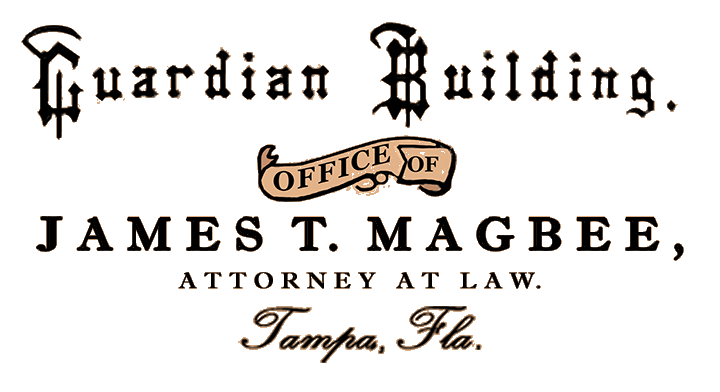 |
|
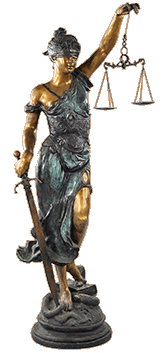 |
Introduction
 ames T. Magbee, at age 26, was the first attorney admitted to
practice law in Tampa and was elected to serve as State
Representative in the Florida House of Representatives by the age
of 28, serving three terms from 1848 to 1854. He was
appointed twice as the Deputy Collector of Customs and Inspector
of the Port of Tampa, first in 1855 and again in 1883. He
served as Senator in the Florida State Senate by age 40, from 1860
to 1862, and was appointed by Gov. Harrison Reed as Judge of the
6th Judicial Circuit of Florida in 1868. ames T. Magbee, at age 26, was the first attorney admitted to
practice law in Tampa and was elected to serve as State
Representative in the Florida House of Representatives by the age
of 28, serving three terms from 1848 to 1854. He was
appointed twice as the Deputy Collector of Customs and Inspector
of the Port of Tampa, first in 1855 and again in 1883. He
served as Senator in the Florida State Senate by age 40, from 1860
to 1862, and was appointed by Gov. Harrison Reed as Judge of the
6th Judicial Circuit of Florida in 1868.
But he was notorious for public drunkenness, brawling, and his
unconventional behavior on the bench, and he was despised by many
in Tampa and the surrounding area for being a
scalawag during the post-Civil War Reconstruction period.
|
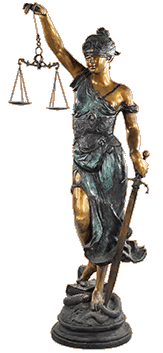 |
|
In 1870,
he was the first Florida official ever to face impeachment for
judicial misconduct, and after having his trial dismissed in 1871,
and receiving an honorable discharge, he faced impeachment again
in 1875, on charges all based on his drunken behavior. He
resigned rather than go to trial, and went on to publish The
Guardian newspaper in Tampa until his death in Dec. 1885.
He was married three times, for a total of 35 years, having
outlived his first two wives, and had no children of his own. But
he wasn't devoid of some good will or charity; he and his 2nd wife
adopted an orphaned boy from Scotland, donated land to the city
for Oaklawn Cemetery, and at least once made a donation of gold
coins to help a family who had lost their home and possessions in
a fire.
Ever since his arrival in Tampa in the winter of 1845-46, he was
at the forefront of controversy, and after he died suddenly in
Tampa, there was even more controversy over his will and his
estate.
The header image
above is a rearrangement of actual letterhead Magbee used.

Image from
James T. Magbee: “Union Man, Undoubted
Secessionist, and High Priest in the Radical Synagogue”
by Kyle VanLandingham
|
~~~~~~~~~~~~~~~~~~~~~~~~
|
Where was James T. Magbee born?
|
 |
|
Location of Butts County |
D. B. McKay on why Magbee left his home in Georgia:
Mrs. Mary Caldwell once asked me, "Why didn't you talk to me
before you wrote that incomplete story about old Judge Magbee? (Referring
to a story McKay had written for the Times.)
I could have told you where he came from, and why he left home.
I had an uncle living in Georgia who was a brilliant lawyer and
the state historian. When I was a little girl, my uncle
told me that J. T. Magbee left his birthplace in a south Georgia
county at the invitation of his neighbors, that the action was
taken because of Magbee's bad conduct."
It
was a polite way of saying his neighbors ran him out of town.
McKay knew Magbee personally; he
referred to the time when he was
a young boy working in Magbee's print shop during the time Magbee
was publishing his newspaper,
The Guardian, in the 1880s:
"As an apprentice in the printing
business, I worked in the Guardian office several months, and to
me the old fellow was always kindly and generous. I was
working in the printing business the day the first train on the
South Florida Railroad arrived--Jan. 25, 1884..."
WAS MAGBEE BORN IN SOUTH GEORGIA?
Mrs. Caldwell
said that Magbee "left his birthplace in a south Georgia
county". Numerous sources researched for this feature
claim that
James T. Magbee was born in Butts County, Ga. in 1820. Those
who have researched his ancestry say he
was a son of Hiram and Susanna (Wooten) Magbee (married Oct 6,
1816). The
basis of his birthplace being Butts County appears to be due to the
presence of his father on the 1830 census of Butts County. (The
1830 census recorded the name of the head of house only, with
others enumerated as a count of males and females separately in
several age ranges.)
James T. Magbee could not have been born in Butts County because
it didn't exist in 1820; it was formed on
December 24, 1825 from
portions of Henry County and Monroe County.
To further
complicate matters,
Henry County also didn't exist in 1820, it was
created in 1821 from Creek Indian lands. The state legislature
later divided land originally set aside as Henry County into
Butts, Clayton, DeKalb, Fulton, Newton and Spalding counties and
large portions of present day Rockdale and Fayette counties.
Monroe County also didn't exist in 1820. It
was created in 1821 from Creek Indian lands, later divided to make
Pike and Lamar counties along with parts of Spalding, Butts, Upson
and Bibb counties.
So was James born in
the area that became Monroe or Henry County, which then became Butts
County by the time of the 1830 census? As for what Mrs. Caldwell
said about Magbee's birth place, none of these counties can be
considered "south Georgia."
Henry & Monroe Counties, early
1820s
Before formation of Butts County
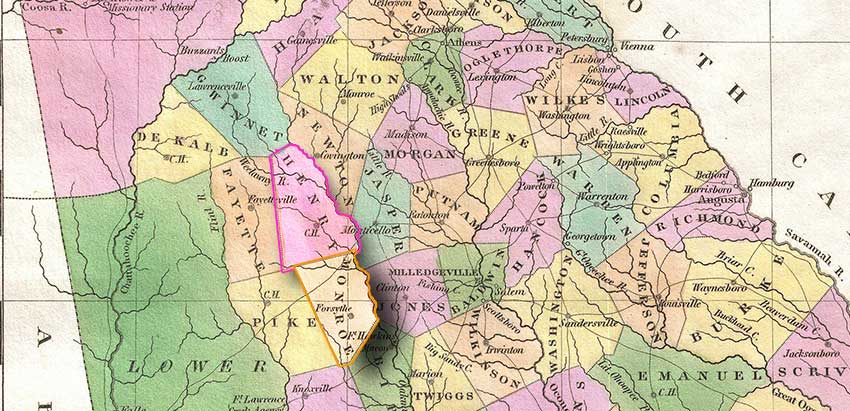
Present day Georgia Counties Map
Location of Butts County
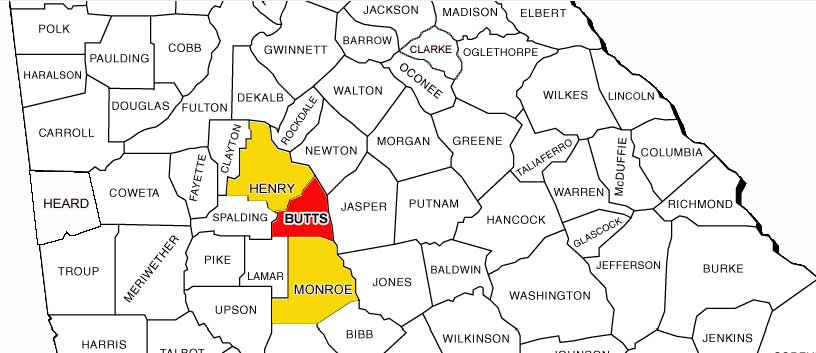
1830
Census, Butts Co., GA
Censuses
before 1850 only showed the name of the head of house, with
the rest of the family counted in age groups.

In 1830, the Magbees
are found in Butts County. The one male
age 30 to under 40 would be Hiram, and the one female age 20
to under 30 was his wife, Susan. James would have
been around 9 or 10 years old (depending on his birth month
and the date of the census) so he should be one of the two males listed in the age 5 to under 10
column. If he was 1o he would have been counted in the
next column and there is no entry there.
There is one more
male in the age group
with James, and
another under 5 years old which means James had two
brothers born from 1820 to 1830. The child under 5
would have been his brother Samuel, born 1830, so this leaves one
male age 5 to under 10 (born after 1820 to 1825) unaccounted for. The one female under 5 would have been
James's sister Penelope Adeline.
Evidence presented
below will show that James was more likely born in Clarke County.
1820 Census, Salem, Clarke Co., GA

This census lists
three households as "Mcbee" but the names suggest these are Magbee family members. The first 6 columns
count males (notice there is overlap with columns 3 and 4), the last 5 columns count females.
The age groups for males are: Under 10, 10 to under 16, 16
to 18, 16 to under 26, 26 to under 45, and 45 & over. Rachel is
45 or over 45 and the only member of her household. This is
a clue that she was Laban & Hiram's mother and widowed. Living on each side
of her would be her sons, Laban and Hiram. (See the
Last Will and Testament
of Rachel Magby.)
Laban has two males
under 10, and he himself is age 27 to under 45. Females
include one under 10, two age 10 to under 16, and one age 26 to
under 45 (Laban's wife).
Hiram has one male
under 10--this would be his newborn son James T. Magbee. Hiram himself
was age 18 to under 26. There is only one female in this household,
who would be Hiram's wife Susanna, also under 26. Hiram would
later name a daughter for his mother; Rachel Elizabeth Magbee.
This is evidence that James was
more likely born in Clarke County and that
Hiram and his family came to Butts County by the time of the 1830
census.
Georgia Counties
Early 1820s
Below, the location of
Clarke County along with Henry and Monroe counties before Butts
County was created.
This shows that Clark County wasn't involved with the
Henry/Monroe/Butts County creations and that after James was born,
the Magbees moved to Butts County in time for the 1830 census.
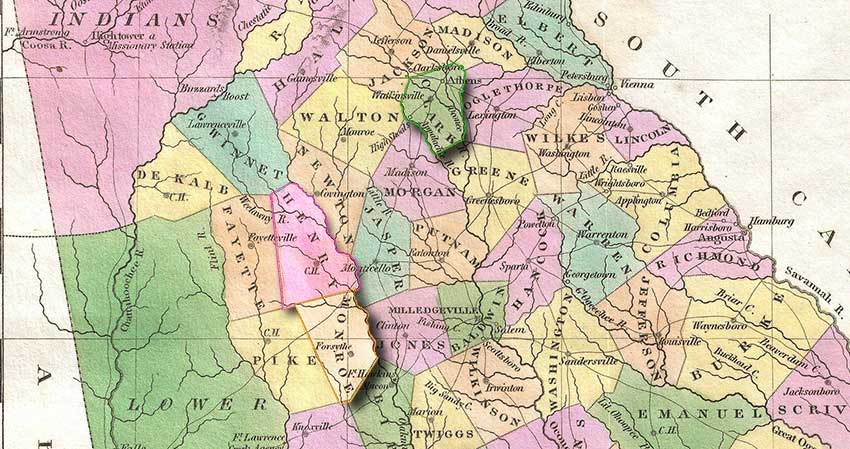
|
|
Present Day Georgia Counties
For 1840 and later, the Magbees were
in Heard County.
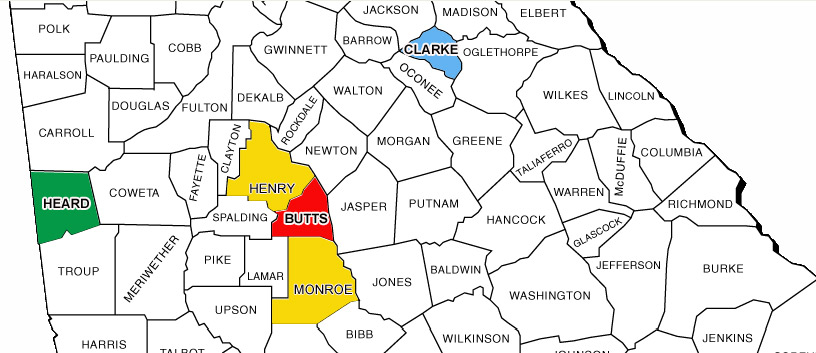
The Heard
County 1840 Census of this family shows Hiram and Susan with 8 others in the household.
Five are definitely their children, the other 3 could be any
combination of cousins or white farm hands/servants. There
was a total of
four males in the household younger than James. One
of the four would have been James's brother Samuel who would
have been around 10. Another was William, who would be
around age 2 or 3 (as you will see on their
1850 census). This leaves TWO males age 15 to
under 20 who are unaccounted for.

The female age
10 to under 15 would be Penelope Adeline. There are
TWO new females in the household. One under age 5
would be a new daughter born into the family (Rachel
Elizabeth) and an unknown female at age 20 to under 30.
It is not clear if this is a "1" and then marked out.
If this is indeed a "1", this could be a cousin or a
housekeeper who moved in sometime after 1830 and was gone by
1850.
1850 Census, Heard Co., GA |
|
Below, the 1850 census
of Heard County, Ga. shows Hiram Magbee and his wife
Susan, with children (Penelope) Adaline, Samuel,
(Rachel) Elizabeth and William, ages
20, 19, 14, and 12, respectively. James was not
present because he was living in Tampa by this time.
Missing are the two unknown males who were age 15 to
under 20 in 1840, who would now be age 25 to under 30. |
Below, the 1860 Census
of Heard County, Ga., Post Office Franklin, shows
Hiram and Susan with daughters Elizabeth and Adeline,
apparently still single. William Magbee would
have been around 22, is now missing. |
|
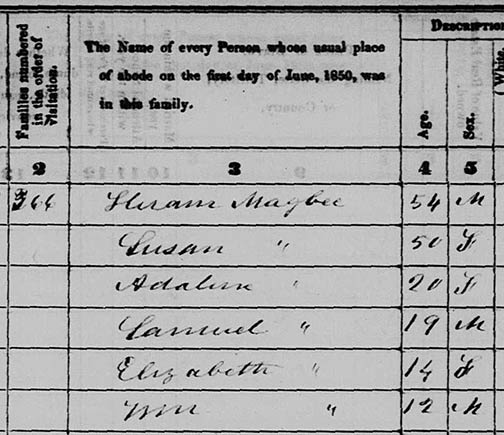 |
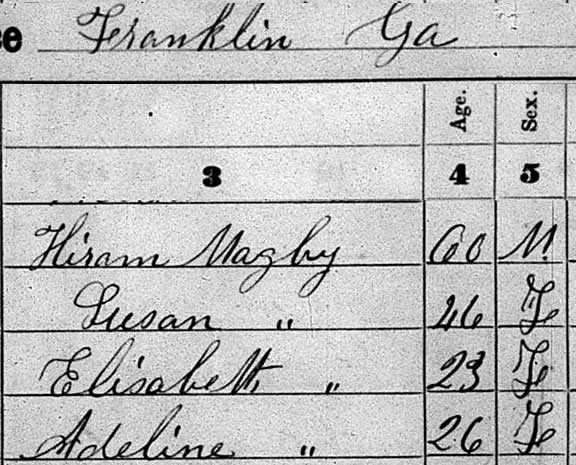
Their ages are rather
inconsistent with their 1850 census ages--Susan became
4 years younger than her previous census; Hiram and
Adeline only aged 6 years from 1850 to 1860.
The whereabouts of William Magbee are not known at
this time. |
|
|
Born |
|
|
Hiram |
c1796 |
|
|
Susan |
c1800 |
|
|
James
T |
1820 |
|
|
unknown male1* |
1820-1825 |
|
|
unknown male2* |
1820-1825 |
|
|
unknown female1* |
1820-1829 |
|
|
Penelope
Adeline |
1829 |
|
|
Samuel
B. |
2-14-1830 |
|
|
Rachel Elizabeth |
c1836 |
|
|
William |
c1838 |
|
James was one of at least five children, and as many as eight.
*The unknown persons
are those who only appeared on one or two censuses before 1850,
and so their names are not known.
See Magbee Census
Analysis and Last Will and Testament of Rachel
Magbee (James's paternal grandmother; Hiram's
mother)
at
the end of page 3.
|
|
|
1845:
Florida becomes a state
On March 3, 1845, Florida
became the 27th state of the Union and William Dunn Moseley
became the first state governor.
Born in Lenoir County North
Carolina in 1795, Moseley pursued a legal career in his
native state before moving to Florida. He
graduated from the University of North Carolina Chapel Hill
in 1818 and received a Master’s degree in 1821. He served in
the North Carolina Senate from 1829-1832 before moving to
Jefferson County, Florida in 1835.
Moseley served in both
the territorial House and Senate before winning the hotly
contested 1845 gubernatorial race against former territorial
governor and popular Florida politician Richard Keith Call.
As governor, Moseley
supported the expansion of agricultural endeavors,
especially the planting of citrus, avocados, tobacco, and
cotton. He was a strong supporter of states' rights and
favored the establishment of state-funded public schools.
The state capitol was completed and fully occupied in the
first year of his administration.
He served only one term as
governor then moved to Palatka in 1851 where he became a
planter and raised citrus on his plantation
until his death on January 4, 1863. |
|
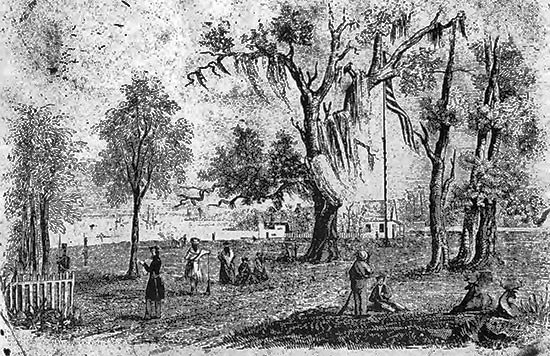 |
1840s: James T. Magbee studied law in Georgia, then moved to
Tampa
It is assumed that James studied law in Georgia, probably under
the supervision of a practicing attorney, which was the standard
of the time. After receiving his "frontier education" in rural
Georgia, James Magbee came to Tampa.
In
the winter of 1845-46, soon after Florida became a state, James
Magbee appeared at
Fort Brooke and was admitted to the law practice in 1846. He
was around 26 years old.
Burgert Bros. photo of an illustration of Ft. Brooke in 1846
courtesy of the Tampa-Hillsborough County Public Library.
|
|
 By James McKay,
Jr. in "Reminiscences
- History of Tampa in the Olden Days" Dec. 18,
1923 By James McKay,
Jr. in "Reminiscences
- History of Tampa in the Olden Days" Dec. 18,
1923
At that time there were but
few citizens who were civilian and but few houses outside of
the government reservation. The military post was known as
Fort Brooke, garrisoned by the Fifth Infantry, and commanded
by Colonel Waite. There was but one store on the
reservation, owned and operated by W. G. Ferris.
He was known as the
sutler for
the post. These stores are now called post exchanges at army
posts.
|
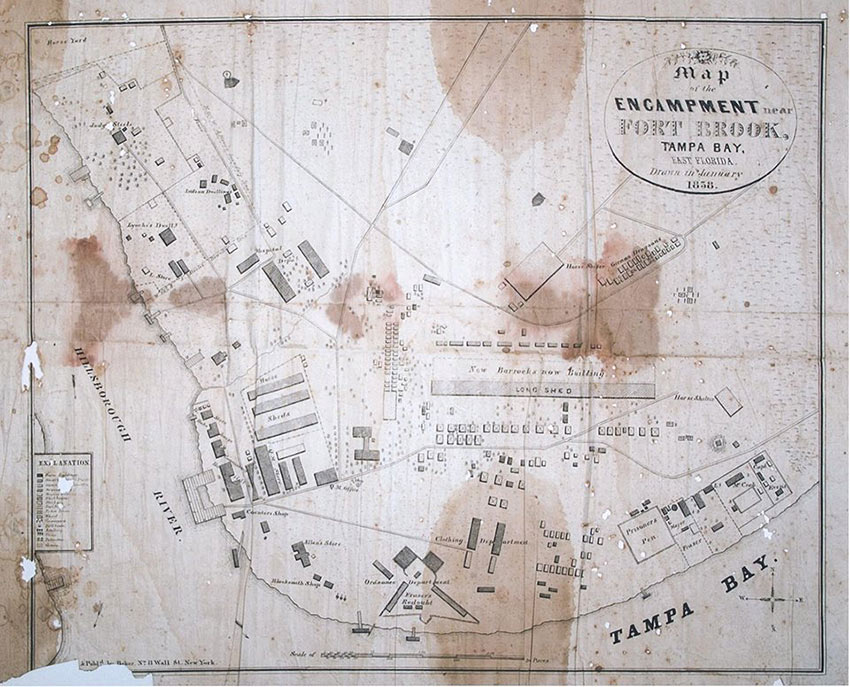
This 1838 map shows Fort Brooke at its pinnacle, when it was the
headquarters for the U.S. Army of the South.
Matheson History Museum
Map from this Tribune 2016 article by Rodney Kite-Powell
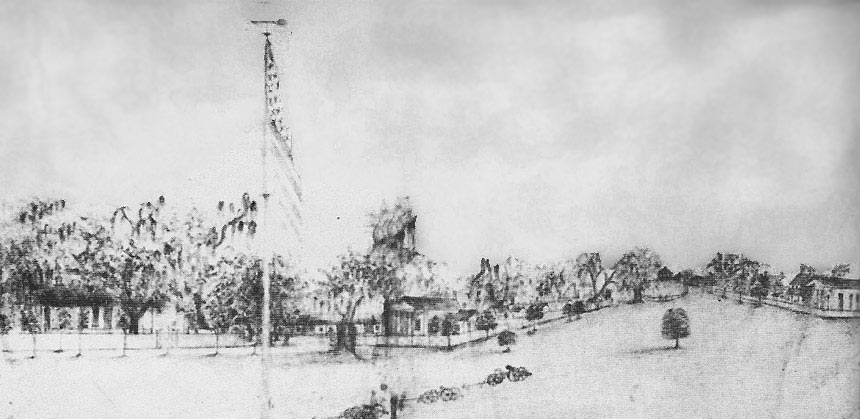
General view of Fort
Brooke and parade grounds, 1845. Thanks to the artistic talents of
Juliet Lay Axtell, one of the Army Chaplain Axtell's daughters,
who at the age of 12 sketched this view of Fort Brooke. At the
time, the garrison consisted of 20 whitewashed buildings with Col.
Wm. G. Belknap in command. The large building at the left of the
flagpole was the commanding officer's headquarters. The small
buildings to the right at a distance were the soldiers' quarters.
The line of buildings from the Adjutant's office to the Indian
mound was known as "Bachelor's Row" because the buildings were
occupied by unmarried officers of the post. The mound with the
Chinese pavilion on its crest and encircled by a fence appears to
the right of the large oak tree. The Captain's quarters and the
post chapel are at the right. The flagpole and cannons mark the
parade grounds where the mounting of the guards were held every
morning and the site of many grand parades.
|
1845: FORT BROOKE RESERVATION REDUCED
On January 21, 1845, Colonel William Worth
reduced the military reservation to four miles square and, after approval
by President James Polk, Hillsborough County obtained 160 acres to the
north of the reduced military reservation to be used as the county seat. Although Fort Brooke was not to
be abandoned for 30 years, it would steadily decline in use by the
military from that time.
Below is a crop of the county
survey of Township 29 south, Ranges 18 east and 19 east showing the
entire area of the military reserve by surveyor Charles F. Hopkins
in March, 1852. Outlined in blue are the original limits of
the military reserve. The ladle-shaped area outlined in green
shows the reduced Ft. Brooke reservation, with the "handle" portion of which was
the property on which the road to the government spring in
today's Ybor City was located. The dotted line shows
the road going on to Fort Dade.
The red outline shows the 160 acres obtained by Hillsborough County
for the county seat. Being drawn in 1852, it shows a rough
sketch of the southern boundary of the village of Tampa which was
surveyed and drawn by John Jackson from 1847 to 1853. See
section further below on Jackson and his plan.
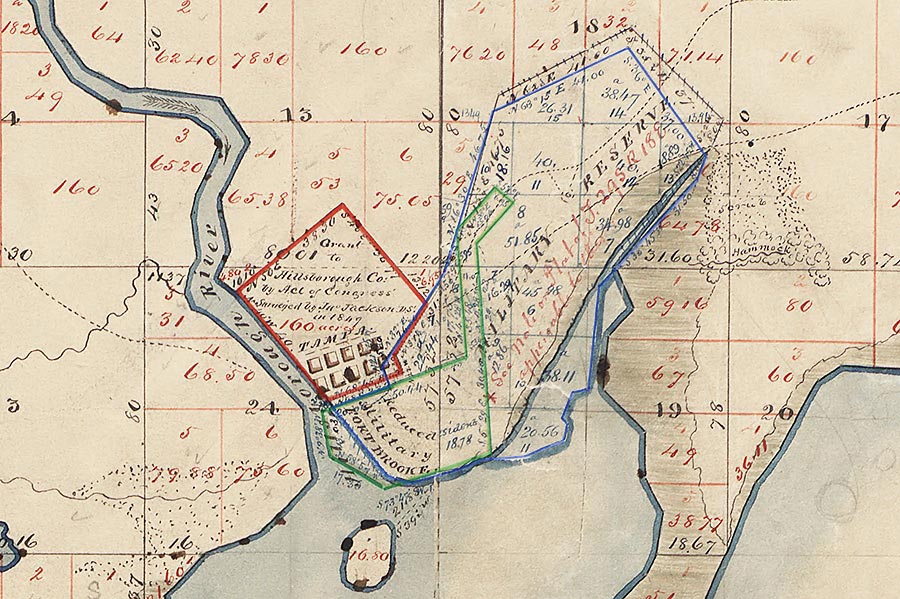 |
|
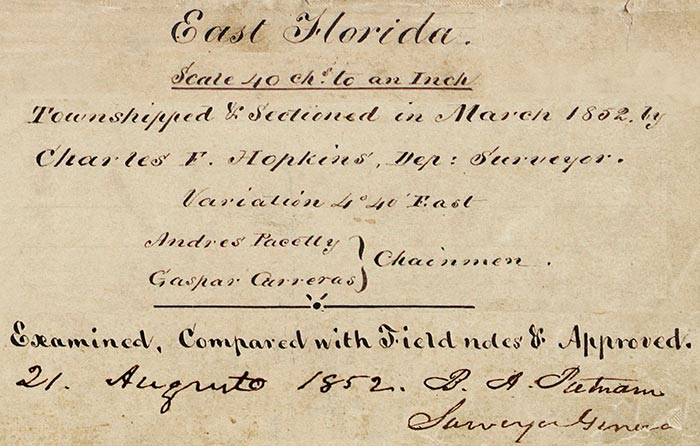 |
The small 16.8-acre island in
the bay was the smaller of two mud flats which would later
play a role in the Civil War and eventually, with the larger
one not seen here ("Depot Key"), become the foundation for
Davis Islands in 1926. |
|
1845 - 1846:
Magbee is quickly considered troublesome
Becoming a resident of Tampa around this time, young James T.
Magbee was immediately embroiled in a long-standing controversy
between the settlers on the Ft. Brooke military reservation and
the army commanders.
Capt. John H. Winder had assumed command at Fort Brooke in
November, 1845. He soon ran into trouble with Indian agent Thomas
P. Kennedy and decided to close the local trading post.
Also, hogs owned by the settlers were "running at large" on the military
post and if they were killed by the soldiers the settlers would
prosecute the guilty parties. Winder considered building a fence
to keep out the hogs but preferred “...to kick out Thomas P.
Kennedy, M. C. Brown, J. T. Magbee, and such others as from time
to time may prove troublesome.”
[Winder may have found Magbee troublesome if
he provided legal counsel to the settlers in the prosecution
of the soldiers. Perhaps they were his first clients.]
|
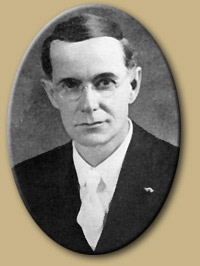 1846: The earliest
existing records of Hillsborough Co.
Commissioner meetings 1846: The earliest
existing records of Hillsborough Co.
Commissioner meetings
History
of Hillsborough County, Florida, Narrative and
Biographical, 1928" by Ernest L. Robinson,
Director of High Schools of Hillsborough County, Formerly
Principal of Hillsborough
County High School.
1846 - Jan. 5: The
board members, the lost book of 1845, pay and taxes
The first meeting
(for which records still exist) of the Hillsborough County
Commissioners was held. The board consisted of William
Hancock, M.C. Brown, Benjamin Moody, Simon Turman, and James
A. Goff (not present). Simon Turman was Judge of Probate and
President of the Board. At this meeting, a small
record book of the previous year's proceedings was turned
over to the board by Manuel Alvilla, former Clerk of the
County Court. This book has never been found.
Also at this meeting, pay was established for the board at
$2 per day while in session. The county tax for 1846
was established at 50% of the amount assessed for the State.
S.L. Sparkman was the tax assessor and John parker the tax
collector. |
| 1846
- April 7: Treasury balance, build a courthouse
At this meeting, Thomas P.
Kennedy was the Treasurer of the County and reported the
balance to be $267.63. The commissioners were appointed to
"superintend the building of a court house and other public
buildings in the Village of Tampa" and instructed to "select
the spot of ground for the said public buildings, make a
plan to start the building and finish them as soon as
practicable taking into consideration the funds on hand..."
|
| 1846
- May 23: Establish a ferry, build a road
At this
meeting, Thomas Piper was granted "the privilege of
establishing a ferry across the Hillsborough River at
Tampa." The grant was to last four years and he was to
pay five dollars per year for the last three years.
The ferry fees were fixed at five cents per man and
proportionately higher for vehicles. A road was authorized
to be extended as well.
|
|
1846 - Oct. 19: Contract to Ledwith to build courthouse,
get bids from surveyors to plat the town At this meeting, the
Board of County Commissioners ordered "...to continue the
contract with Michael Ledwith for building the Court House
provided he enter into bonds to have the house completed by
the first Monday in next April."
[Michael
Ledwith and his wife, Margaret Wyatt, were residents of
Tallahassee.]
Also at this meeting, the
Board ordered the President of the Board to get bids from
''two or more competent surveyors for laying off 40 acres
into suitable sized lots and streets for a Town or Village
at this place."
The Federal Government had
donated these 40 acres just north of the garrison line to
Hillsborough County for a county-seat.
|
| 1846
- October 27: Taxes collected, contract to John Jackson
to survey Tampa At this
meeting the tax collector reported that the amount of county
taxes collected for the year 1846 was $148.69. The Board
received bids from several surveyors for the survey of the
forty acres granted for a town and gave the contract to
John Jackson, former assistant City Engineer of New
Orleans.
|
|
 By James McKay,
Jr. in "Reminiscences
- History of Tampa in the Olden Days" Dec. 18,
1923 By James McKay,
Jr. in "Reminiscences
- History of Tampa in the Olden Days" Dec. 18,
1923
The
north side of the government reservation ran east and west
along Whiting street. The village was situated north of this
line, and was a bed of sand and thick growth of what was
called the scrub. The post office was on the reservation. At
the time our family came to Tampa, the postmaster was Dr.
John M. Palmer. He constructed a small hotel on the north
side of Whiting street near the river and named it the
Palmer hotel. This was a building containing 10 or 11 rooms,
with a dining room the entire length of it on the back, and
about 15 feet wide, which was used later on as a dance hall
for the young people. Colonel Hugh T. Fisher was the
manager of this hotel. He became the postmaster on June 10,
1850. Colonel Fisher was the grandfather of our present
deputy sheriff, Mr. Brooks.
In
1846 Darling & Griffin opened a store at the corner of
Whiting and Tampa streets. Later on the name of this firm
was changed to Kennedy and Darling. My father also opened a
small store in 1850, at the corner of Washington and
Franklin street, where the Tampa Daily Times is now
published.
[The McKay
family arrived in Tampa in 1846]
|
|
1846: Magbee
takes the spotlight in Hillsborough County
politics
Magbee quickly assumed a leadership role in Hillsborough County
politics. Writing to Gov. William D. Moseley in July 1846, he
complained that local officials had not received "the acts of the
last legislature" which was required by law. This made it
difficult to properly conduct county elections.
Governor William Dunn Moseley
First governor under statehood
June 25, 1845 to October 1, 1849
From Dept. of State website
|
 |
|
|
|
John Jackson - Surveyor, Merchant,
Short-term Mayor
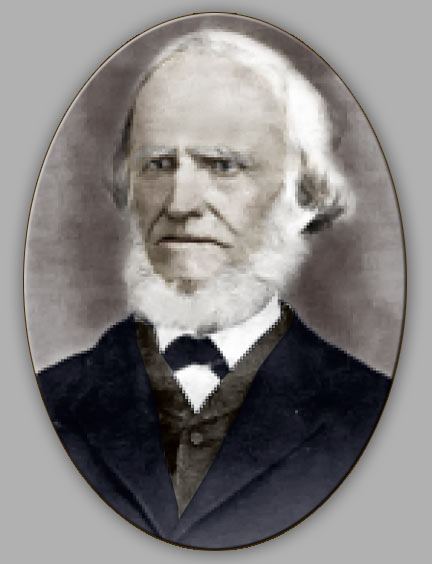 Born
in County Monaghan, Ireland, Jackson immigrated with his
brother Thomas to the United States in 1841. The brothers
traveled to New Orleans where John worked as an Assistant
City Engineer for two years. Born
in County Monaghan, Ireland, Jackson immigrated with his
brother Thomas to the United States in 1841. The brothers
traveled to New Orleans where John worked as an Assistant
City Engineer for two years.
In 1843, the
federal government hired Jackson to survey a large land
grant in present-day Palmetto, Florida. After completing the
assignment, the federal government gave Jackson a permanent
position as a federal surveyor. He accepted this appointment
and then moved to Hillsborough County with his brother
Thomas to begin work. In addition to his salary, the federal
government gave Jackson a large land grant in Hillsborough
County.
Jackson's
work also took him to various regions of Florida and it was
on an assignment in St. Augustine that he met and married
Ellen Maher on July 22, 1847 with whom he had four children:
Thomas, James, Kate and John. Several weeks later,
Hillsborough County hired Jackson to survey and map Tampa
which had been designated the county seat in 1846. Jackson
named the streets of Tampa after U.S. Presidents, military
figures and one local individual, William Ashley, the first
city clerk of Tampa.
[See "What's
in a Name" feature at TampaPix.]
After
completing his assignment, Jackson returned to surveying but
in 1849 he and his wife decided to move to Tampa where he
established a general store on the corner of Washington and
Tampa Streets. Jackson also became involved in Tampa's civic
activities.
Jackson's ad shows he didn't sell on credit. "He is
convinced that no system of business affords the same
facilities for the satisfaction of both buyer and seller, as
does the cash system." Elected 9th
Mayor of Tampa on February 3, 1862, Jackson has the dubious
distinction of serving the shortest term as an elected mayor
in Tampa history: 19 days. On February 22, 1862, the
Confederate Military Commander dismissed the mayor, city
council and other employees.
City of Tampa, Previous Mayors
|
1846 - December 30:
Survey received, fee paid, "Village of Tampa" streets laid
out and named
History
of Hillsborough County, Florida, Narrative and
Biographical, 1928" by Ernest L. Robinson,
Director of High Schools of Hillsborough County, Formerly
Principal of Hillsborough
County High School.
The Board of County
Commissioners ordered the survey of John Jackson received
and the plan to be recorded immediately. The section
surveyed was called the Village of Tampa. One hundred
dollars was paid for this survey. In this first survey only
the outlines of the town were laid out and a portion of the
blocks subdivided. Mr. Jackson built a house on lower Tampa
street on block 19, in 1847, and settled down here.
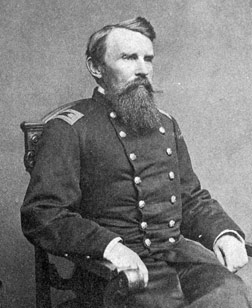 At
this time the government was commanded by Lt. Col.
Charles Jarvis Whiting, who aided in the initial survey
work, and the first street laid out was named in his honor.
Jackson named most of the other streets after presidents,
also one for Franklin, one for Lafayette and
one for his friend, Tampa's first City Clerk William
Ashley who settled in Tampa in 1830, and whose residence
was located on the west half of the block on the southwest
corner of Lafayette and Tampa streets. The blocks were laid
out in one-acre squares. Those between Franklin street and
the river front were each divided into six lots 70 feet by
106. The blocks east of Franklin street were divided into
four lots. each, 106 feet square. The streets were given a
width of eighty feet. At
this time the government was commanded by Lt. Col.
Charles Jarvis Whiting, who aided in the initial survey
work, and the first street laid out was named in his honor.
Jackson named most of the other streets after presidents,
also one for Franklin, one for Lafayette and
one for his friend, Tampa's first City Clerk William
Ashley who settled in Tampa in 1830, and whose residence
was located on the west half of the block on the southwest
corner of Lafayette and Tampa streets. The blocks were laid
out in one-acre squares. Those between Franklin street and
the river front were each divided into six lots 70 feet by
106. The blocks east of Franklin street were divided into
four lots. each, 106 feet square. The streets were given a
width of eighty feet.
Photo of Lt. Col. Charles Whiting from CivilWarCavalry.com
See "What's in a
Name" at TampaPix
Up until this
time, the buildings of the
village were nearly all within the limits of what was known
as the reservation, the northern boundary of which coincided
with Whiting street. The business part of Ft. Brooke was
near the river, extending in an irregular manner from the
Palmer House, at Whiting and Water streets, to a point near
where the phosphate works used to be. W. G. Ferris, the army
sutler, had a large store fronting both east and west, along
the wharf, about 300 feet south of the Palmer House, and the
same distance north of the commissary, which was situated at
the north end of the wharf.
|
|
1847 -
January: The original plan for the village of Tampa
The plan
shown below was published in the Tampa Times on Jan. 25,
1935 as part of an article about John Jackson and his son,
Thomas. It shows the plan as originally drawn, with
only the blocks subdivided. The significance of the
large X's are yet to be determined. They might
signify that structures had already been built there.
Notice the
location of "Court House Square;" it was two blocks east
of where the actual courthouse was built. Monroe St.
became Florida Ave. in the 1880s.

|
|
1847: James McKay's bid accepted to build the courthouse
&
the 1st authorized sale of lots in Tampa
When permission had been given to Hillsborough County
officials to erect a courthouse on land formerly occupied by the
troops, a meeting of the board of county commissioners was called
on January 11, 1847 for the purpose of receiving proposals for the
building of a courthouse. "The proposal of James McKay to build
and finish a two-story house 20 by 45 feet in the clear according
to specifications named in his proposals for the sum of $1368 was
accepted by the board."
Also at this meeting, in order to raise funds to pay McKay,
it was ordered that a sale of lots in Tampa should be made
on the first Monday of next April and that public notice be
given in the Jacksonville News and the Southern Journal,
published in Tallahassee.
(At the meeting of
the previous October, the Commissioners of Public Buildings
had been ordered to have the courthouse built by Michael
Ledwith if he could meet conditions demanded. The contract
had evidently not been carried out, and so we find this
contract entered into with James McKay.)
Accordingly, the sale of lots with prices
ranging from $25 to $83 a lot was held on April 5, 1847. This sale
would represent the first legal transaction from government to private
ownership of the Fort Brooke land.

History
of Hillsborough County, Florida, Narrative and
Biographical, 1928" by Ernest L. Robinson,
Director of High Schools of Hillsborough County, Formerly
Principal of Hillsborough
County High School. |
|
See the later section below about the
courthouses. |
1848 - Magbee Elected State Representative
Within two years of arriving in Tampa, by 1848, Magbee had
established himself sufficiently to run for the House of
Representatives of the General Assembly of Florida. He
defeated the incumbent William Hancock by a vote of 114 to
27. Magbee was around 28 years old.
An 1847 legal notice
in the Jacksonville "The News" shows he was handling
the estate of Felix Ortis. |
|
1848 - Magbee Appointed Guardian at Age 28
On
February 15, 1848,
according to Hillsborough County records,
James T.
Magbee was appointed guardian of the person and estate of George
Wanton, a free mulatto man.
|
The Hurricane of 1848
|
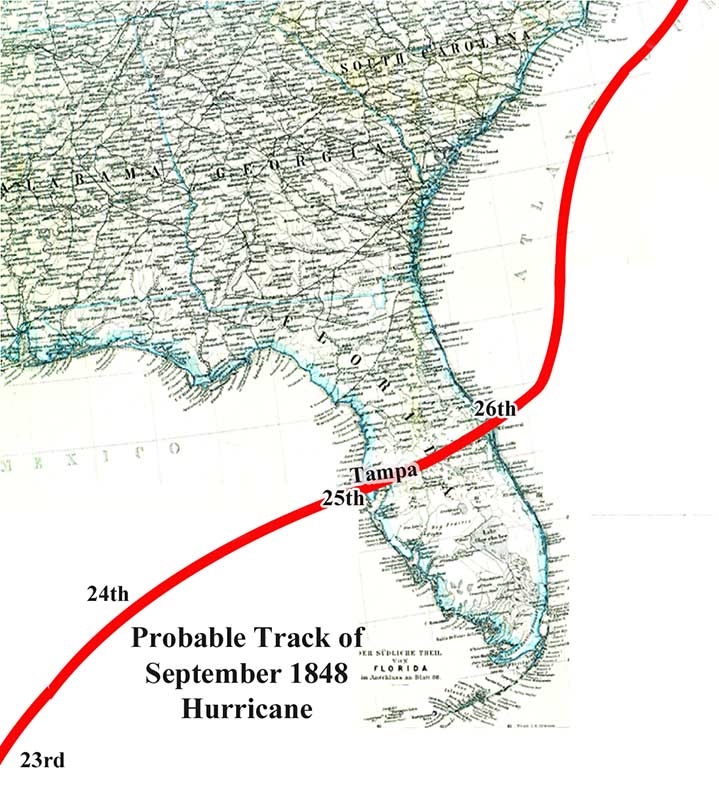 |
|
1848 map from
Exploring Florida Maps; a part of Maps ETC and
Exploring Florida websites. Produced by the Florida
Center for Instructional Technology College of
Education, University of South Florida. |
The 1848 Tampa Bay
hurricane, also known as the Great Gale of 1848, was the
most severe hurricane to affect the Tampa Bay area and is
one of only two major hurricanes to make landfall in the
area, the other having occurred in 1921. It affected the
Tampa Bay Area September 23–25, 1848, and crossed the
peninsula to cause damage on the east coast on or about
September 26. It reshaped parts of the coast and destroyed
much of what few human works and habitation were then in the
Tampa Bay Area. Although records of its wind speed
are unavailable, its barometric pressure and storm surge
were consistent with at least a Category 4 hurricane. A
survivor called the storm "the granddaddy of all
hurricanes."
The storm appears to have
formed in the central Gulf of Mexico before moving northeast
to make landfall near Clearwater, Florida. It then crossed
the Florida peninsula and exited near Cape Canaveral.
After moving into the extreme western Atlantic, the cyclone
continued to the northeast just offshore of the East Coast
of the United States to the Grand Banks of Newfoundland.
Fort Brooke recorded peak
winds of 72 miles per hour, and a barometer at the fort
measured a minimum pressure of 28.18 inches of mercury (954
mb), though the winds were still blowing at the time that
reading was made. The storm produced the highest storm tide
ever experienced in Tampa Bay. The water rose and fell about
15 feet in six to eight hours. The tide inundated Pinellas
County “at the waist,” covering all low-lying elevations,
and reportedly submerged most of the Interbay Peninsula,
where South Tampa and MacDill Air Force Base currently
reside. “The bays [Hillsborough and Old Tampa] met.” General
R. D. A. Wade, commanding at Fort Brooke, reported the
destruction of the wharves, public buildings, and
storehouses. B. P. Curry, the fort’s assistant surgeon,
reported the hospital destroyed. Only five houses were left
standing in Tampa, and they were all damaged. The water rose
twelve feet higher than had been noted in the past, and
strong winds downed many old trees.
On the Pinellas Peninsula,
the storm destroyed the fishing rancho of Antonio Máximo
Hernández, reputedly lower Pinellas’ first white settler,
forcing him to emigrate permanently. The storm almost
obliterated the citrus crop and destroyed the main house at
St. Helena plantation—now part of Safety Harbor—forcing the
residents to shelter on an elevated Tocobaga mound. Even so,
they nearly drowned as the storm tide eroded part of the
shell mound. Winds also felled almost all of the trees along
what is now Indian Rocks Road in Largo.
The storm completely
altered the coastal geography of the Tampa Bay area, cutting
new inlets, filling in others, and altering the shape of
bays and keys, thereby making navigational charts useless to
mariners. Allen’s Creek was widened from less than 200 feet
to about half a mile at its mouth. Passage Key, between
Egmont Key and Anna Maria, was obliterated but reformed
later. The storm created what would become known as
“Soldier’s Hole” at Mullet Key, so called because soldiers
at Fort De Soto used it as a swimming hole. John’s Pass was
opened but has since shifted north. After the storm
destroyed the lighthouse on Egmont Key, the keeper (Marvel
Edwards) rode out the storm in a rowboat tied to a palmetto
tree. The end of the rope was later found 9 ft. off the
ground, which had an elevation of about 6 ft.
The Great Gale of 1848 at Wikipedia |

By James
McKay, Jr. in "Reminiscences
- History of Tampa in the Olden Days" Dec. 18,
1923 and "Oldest Tampa Citizen Recounts Tampa's Deeds,"
Dec. 20, 1921, Tampa Times.
In 1848, the town was visited
by a terrific hurricane causing the tide to rise above 15
feet above low water mark, washing away the W. G. Ferris
store and the house we were living in; in fact, most of the
houses that were located on the river bank.
At this time, my father was
absent at New Orleans with his schooner, the Wm. H. Gotzmer,
this vessel at that time being the only means of
transportation with the outside world in securing supplies
for the small colony of Tampa.
Our family was
moved to the Palmer hotel, and when driven out of there on
account of the tide, to the Darling and Griffin store, and
then to the military hospital on the reservation.
The Palmer Hotel withstood the hurricane, although the water
rose two feet over the main floor.
After the hurricane, the
military authorities issued my mother tents to house our
family, which, with their assistance, was placed on the
block now occupied by the Knight & Wall Hardware Co., that
block at the time being owned by my grandmother, Sarah Cail.
When my father returned
in his vessel, he had some logs cut and hauled in and a
house built, where we lived for some 20 months, until he
could bring lumber from Mobile and build a house on the
block now occupied by the Almeria Hotel.
As soon as Mr. Ferris could obtain material he erected a
small building on the south side of Whiting street near the
intersection of Franklin, which did not extend farther
south, on account of the reservation.
A few years later Mr.
Ferris, having some trouble with the military officials, was
ordered off the reservation, so he moved his store to the
corner of Florida and Washington streets and built his
residence on the same lot. This residence became the old
folks home and later on was moved to the site the home is
now occupying and somewhat improved, or made larger. |
 E. L Robinson's
account of the storm: E. L Robinson's
account of the storm:
The turbulent
weather preceding the great storm of 1848 commenced on
Saturday, September 23. During Sunday the wind came in gusts
from the east accompanied by occasional showers. A number of
men went down the bay on Sunday to assist in bringing in W.
G. Ferris' schooner, the John T. Sprague, due from New
Orleans with a cargo of supplies. Great difficulty was
experienced in towing the vessel against the strong wind,
and it was necessary to "kedge" (move by hauling in a thick
rope or cable attached to a small anchor dropped at some
distance) more than once before reaching the landing. It was
well for the troops and villagers that this cargo was saved,
for it was some time afterward before more supplies came in.
The schooner also brought specie (coins) and currency to be
paid to the soldiers, Mr. Ferris being "acting'' paymaster
at the time.
On the
morning of the 26th, the wind shifted to the south and
finally to the southwest. Then the trouble commenced.
A high tide came in, and the velocity of the wind increased,
driving the water deep into the garrison. Ferris carried his
family to the Palmer House, then waded ·in "water up to his
armpits back to the store, where he succeeded in getting out
the currency and account books. Then upon looking southward,
he saw the commissary building rolling and tumbling straight
toward his warehouse. A moment later there was a crash as
the warehouse was struck and away went the whole structure,
reduced to a mass of wreckage that included $15,000 worth of
goods and a large amount of specie.
The Palmer
House now seemed doomed. Tables began to float around in the
dining room of the old hostelry. Josiah
Ferris, son of the sutler, distinguished himself by swimming
out through the north door with a young girl in his arms.
The refugees retreated to the Kennedy store, thence to still
higher ground at the corner of Franklin and Washington. But
the Palmer House withstood the storm. The scene in the
garrison was now appalling, though sublime in its grandeur,
as the great waves came charging in, and the bay as far as
the eye could reach was lashed to a fury. The islands in the
bay were out of sight under the water, and the tidal wave
rushed across the peninsula west of the river into Old Tampa
Bay. The tremendous pressure of wind and water raised the
river until only the treetops were visible, far north of the
village. The Sprague, with the government specie still on
board, had been anchored up at the ship yard," and during
the worst part of the gale the hull of an old abandoned boat
floated against her and broke her cables, allowing her to
drift out into the pine woods east of the river and
somewhere west of what is now Franklin street with captain
and crew still on board.
During
Monday afternoon the wind died away and the waters receded
somewhat, giving the villagers an opportunity of viewing the
damage. In the garrison they found that the little church on
the beach, the soldiers' quarters near by, C. B. Allen's
boarding house, the Indian agent's office and the Ferris
property had been wrecked, and all other buildings in that
locality more or less damaged. North of Whiting street, the
block house and the Turman and Ashley residences had been
swept away. The roof of W. S. Spencer's house was blown off.
The residence of Capt. James McKay, Sr., was spared.
[Notice McKay says their house was
washed away.]
|
|
On Tuesday
morning the men from the Sprague came down out of the woods
and brought some coffee, hard bread and other needed
supplies. Learning that the food on the vessel was intact,
the commander at the fort sent a detail of soldiers to bring
the supplies to the village and these were divided between
the storekeeper and the troops. Later, the government paid
for these confiscated goods. Ferris' stock was scattered all
the way from Sulphur Springs to Gadsden Point. Several days
later the strong box was recovered by the sutler, the specie
intact.
Whiskey
flowed freely on the evening following the gale, several
barrels of the potent stuff having been salvaged from the
bay and river. Most of the liquor as well as a number of
cases of wine was turned over to the post commander,
however. A number of cedar logs which Ferris had kept
in a "bight" on the Alafia river were scattered along the
shore from a point up the river around to the north shore of
Old Tampa Bay. It is said that the waters of the bay were
phosphorescent during several nights preceding the gale, and
on Sunday night the light from this source was "almost
bright enough to read by."
The village
school, taught by a Mr. Wilson, had been dismissed on the
forenoon of the day of the gale, and Mr. Henderson, who was
one of the pupils, said that the velocity of the wind was so
great the people were forced to hug the ground in order to
get anywhere. During the storm the lighthouse at Egmont was
so badly damaged that a new one was built. No lives were
lost as a result of the gale, but there were many narrow
escapes from death. As to the cause of the inundation,
various theories were advanced. Many were of the opinion
that the east wind had blown great volumes of water into the
gulf, and that the south wind coming on with the tide, drove
the waters of the overtaxed gulf into the bays along our
coast. Of such was the memorable storm of '48.
History
of Hillsborough County, Florida, Narrative and
Biographical, 1928" by Ernest L. Robinson,
Director of High Schools of Hillsborough County, Formerly
Principal of Hillsborough
County High School. |
|
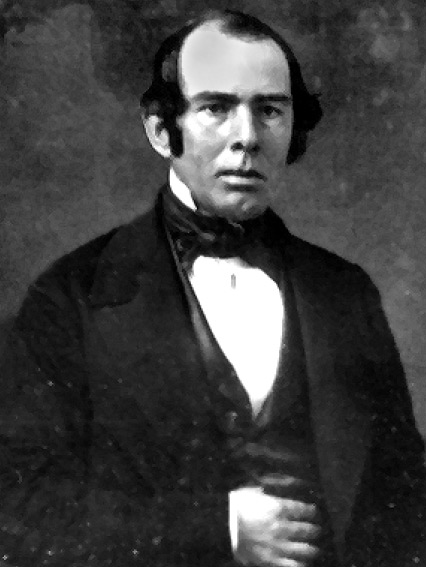 |
|
William Gould Ferris,
Sr.
(1810 - 1895)
Photo from the Ferris family collection at Sunland
Tribune referenced below.
|
|
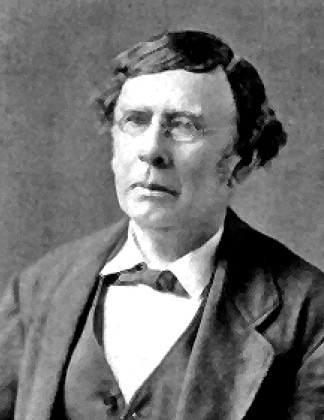 |
 |
|
William G. Ferris, Sr. |
Eliza
(Morris) Ferris
|
|
Photos from the Ferris
family collection at Sunland Tribune referenced
below. |
FERRIS — William Gould Ferris was the founder of
one of Tampa’s leading nineteenth century pioneer
families. Born June 11, 1810 in Ovid, New York, he was
the eldest of five children of Josiah and Lydia
(Bangs) Ferris. As a young man, William went to the
Choctaw Indian Nation Territory (Hempstead County,
Arkansas), and was married there June 4, 1834 to Eliza
Morris, a native of Fort Wayne, Ohio.
William G.
Ferris arrived at Tampa from Arkansas in 1841. He was
employed by the U. S. Army and had received orders while
onboard a ship in the bay when he was transferred to
East Florida. The following year, in 1842, he returned
with his family to settle at Fort Brooke, where he served
as acting paymaster and sutler to the troops. Ferris soon
opened the first general merchandise and clothing store at
Ft. Brooke in 1843. It was a small building that was
washed away during the storm of 1848. He then built
another store on the south side of Whiting Street which he
operated until 1857, when he moved the store to the
northeast corner of Washington and Monroe Streets (now
Florida Ave.). Also in 1857, William G. Ferris constructed
a new two-story home for his family on Washington Street,
just east of the store.
|
 |
In addition
to being a prominent merchant, William was a pioneer in
the shipping business and owned a number of schooners and
steamers. Among them was the fast-sailing schooners
Harrison Jones and the John J. Taylor. Perhaps
the most famous of the Ferris's ships was the steamer
Scottish Chief. |
|
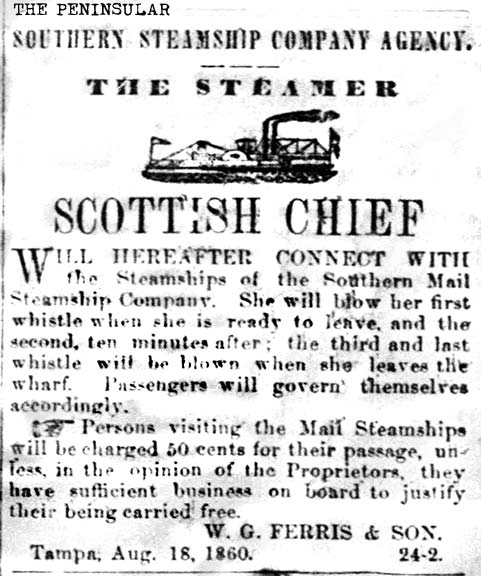 |
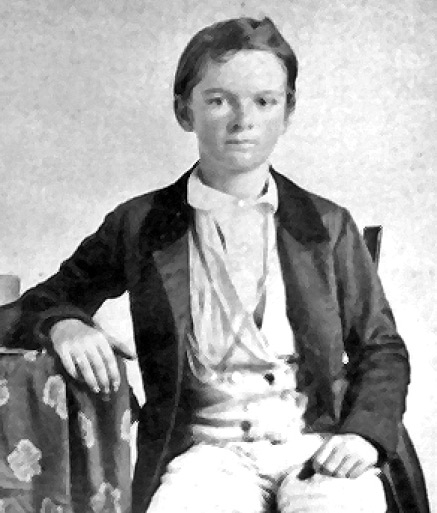 |
|
Ad for
Ferris's business in the Mar 8, 1855 Florida
Peninsular newspaper |
William G.
Ferris, Jr.
1844-1867 Second son of W.G.& Eliza Ferris.
Photo from the Ferris
family collection at Sunland Tribune referenced
below |
The Peninsular reported on July 28, 1860**
that W. G. Ferris and Son had entered the cattle business
and had purchased a small steamer, the Scottish Chief, "a
ship well calculated for the cattle industry." Later
during the Civil War, the Scottish Chief was used as a
blockade runner by Capt. James McKay and was set afire and
sunk by Union forces in the Hillsborough River in October,
1863.
[**The July 28, 1860 Peninsular is missing and isn't
scanned at the UF digital Newspaper collection. Yet,
previous & subsequent issues are available.]
William G.
Ferris was a leader in many fields. He was a founder and
fifth largest stockholder of the Florida Peninsular
Railroad Company in 1859 and was president of the Tampa
Ice Company which erected an ice house on Washington
Street in 1860. On Nov. 24, 1860 when Hillsborough
Countians convened in a mass meeting at the Alafia to urge
secession of Florida from the Union, W. G. Ferris was
among those present who signed the petition calling for a
state convention to consider the matter.
After the
Civil War, the Ferrises resumed their shipping business
and continued to operate their general store.
|
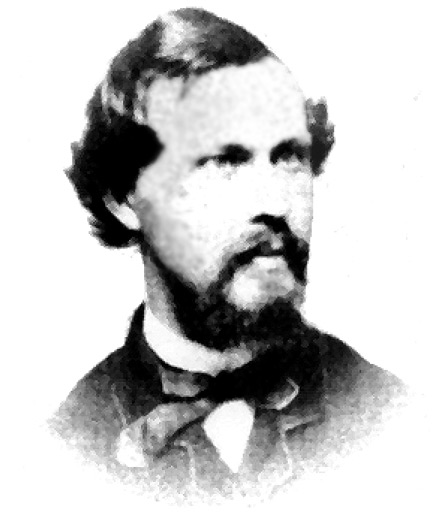
Josiah
Ferris
He and his brother William were members of the Tampa
Cornet Band.
THE SUNLAND TRIBUNE, Nov. 1996,"TAMPA IS THE PLACE OF PLACES”:
The William G. Ferris Family Collection, by Kyle S.
VanLandingham |
The
eldest son, Josiah, who was born in Arkansas in
1836, continued as partner with his father. Josiah
was also in the jewelry and watch and clock repair
business.
In
1866, Josiah was elected to the Tampa City Council.
During his first term on the Council, he was serving
as Council President when Mayor Edward A. Clarke
unofficially left office in December of 1866. As a
result, Ferris served as Acting Mayor from January
1, 1867 until March 1, 1869. This was just before
citizens voted to dissolve Tampa’s government. It
was a tumultuous time in Tampa’s history in which
yellow fever was rampant and the city had few
resources to help its citizens. Ferris
returned to the City Council for another term,
serving from August of 1873 until August of 1874. He
then returned to managing his retail establishments
until 1877, when he was elected as Tampa’s City
Clerk. He served in this position for nine years,
working for six different mayors. He was the
only person to serve in all three positions. |

Josiah
Ferris as Tampa Mayor pro tem, 1869
(Photo from City of Tampa Previous Mayors) |
He and
his father served on the first vestry of St.
Andrew’s Episcopal Church in 1871. Josiah
Ferris died in Tampa on November 24, 1901.
In
1880, William and Eliza's son, Henry Clarke Ferris,
was elected Mayor of Tampa. (No existing photo).
Involved in civic affairs and local politics for
several years, Henry Ferris campaigned for mayor in
the August 1880 municipal election. Ferris won the
election and, at the age of 32, was one of Tampa's
youngest mayors. He was also the second Tampa native
to hold this office.
Henry Ferris served only six months as mayor before
he was compelled to resign on February 19, 1881
because he moved outside the city limits. Tampa's Charter required that the mayor
and other city officials must be residents of the
city while in office. After his departure, city
council president, Matthew E. Haynsworth, served as
acting mayor until a special election was held on
March 22, 1881 in which George B. Sparkman was
elected mayor. |
Always the
trailblazer, Col. Wm. G. Ferris, Sr. was reported by the
Sunland Tribune in June 1879 as converting the lighting of
his residence from kerosene to gas. Col. W. G. Ferris
passed away in Tampa, Aug. 3, 1895, after a long and
productive life.
THE SUNLAND TRIBUNE, Journal of the TAMPA HISTORICAL
SOCIETY, Volume XXII, Nov. 1996,"TAMPA IS THE PLACE OF PLACES”:
The William G. Ferris Family Collection, by Kyle S.
VanLandingham
The City Clerks of Tampa, A Project of the City of Tampa,
Shirley Foxx-Knowles, CMCCity Clerk, City of Tampa
Tampa Blue book and
Pioneers, 1914
at Internet Archive
City of Tampa, Previous Mayors
|
|
In these days, Washington Street was the
principal business thoroughfare of Tampa.
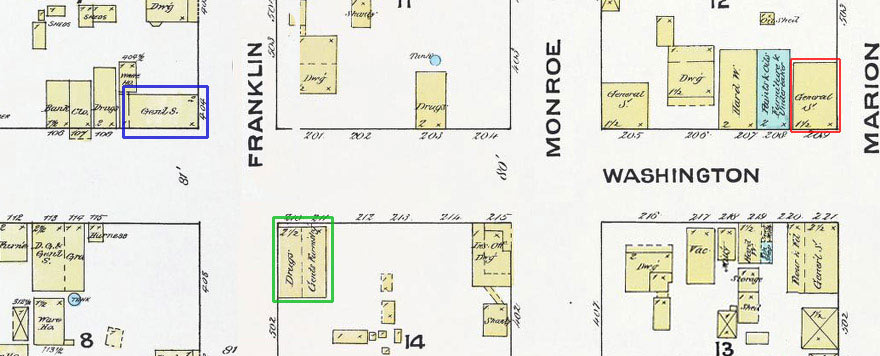
This 1884 map
shows on the south side of Washington St., outlined in
green, the building that housed H.C. Ferris & Co. Gent's
Furnishings and W.A. Givens drugstore seen above.
The location of Billy Wall's mercantile business is
outlined in red. Around 1888, Monroe St. was renamed
Florida Avenue. At the northwest corner of Franklin and
Washington, outlined in blue, is the location where Judge
Wall's son-in-law, Christopher L. Friebele, set up his
general store in the 1850s.
|
|
1846 - 1849 - Seven attorneys admitted to practice in Hillsborough
County
In 1849, court minutes of Hillsborough County listed seven
“attorneys and counselors at law” admitted to practice in the
Hillsborough County Circuit Court. Among these were future Supreme
Court Judge Bird M. Pearson and future Circuit Judge Thomas F.
King. James Gettis and Hardy D. Kendrick later became
solicitors. Those admitted to practice from April 14, 1846
to October 13, 1849 were James T. Magbee, James Gettis, Thomas F.
King, Bird M. Pearson, Alfred Gale, David Provence,
and Hardee D. Kendrick.
|
1849 - January 18
Fourteen men met at the
county courthouse and unanimously vote to incorporate the
village of Tampa with a trustee form of government.
The Mayors of Tampa 1856 - 2015, A project of the City
of Tampa, City of Tampa: Incorporation Timeline |
1849 - January 25
Tampa elected five trustees
with M.G. Sikes serving as president of the governing body. Thomas
P. Kennedy, Jesse Carter, C.A. Ramsey, and William Ross trustees;
James Gettis, first town clerk.
The Mayors of Tampa 1856 - 2015, A project of the City
of Tampa, City of Tampa: Incorporation Timeline |
|
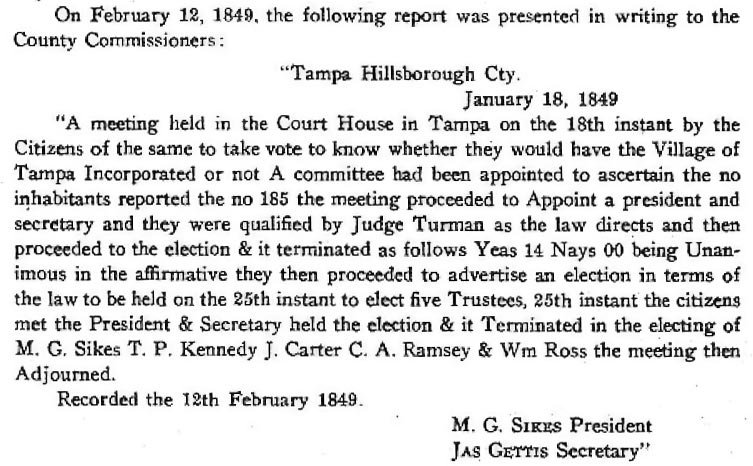 |
 While there is
no definite record of any further ratification of this act of
incorporation, it seems to have been accepted as a sort of working
basis and for several years an organization called the Corporation
of the Town of Tampa remained in existence. There is no
evidence that this corporation did anything or had any important
influence on conditions in Tampa. While there is
no definite record of any further ratification of this act of
incorporation, it seems to have been accepted as a sort of working
basis and for several years an organization called the Corporation
of the Town of Tampa remained in existence. There is no
evidence that this corporation did anything or had any important
influence on conditions in Tampa.
History
of Hillsborough County, Florida, Narrative and
Biographical, 1928 by Ernest L. Robinson,
Director of High Schools of Hillsborough County, Formerly
Principal of Hillsborough
County High School. |
|
|
|
1849 - Magbee Makes an Appeal in
Tallahassee for Protection of
Pioneers
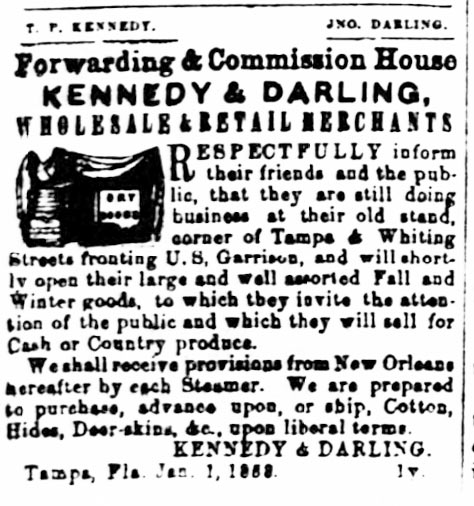
| |
Thomas P. Kennedy,
a Philadelphia native, arrived in 1840 at Fort Brooke where
he gained business acumen while a settler during the Second
Seminole War. The firm of Kennedy & Darling, with its store
and warehouse on the corner of Whiting and Tampa streets,
soon emerged as the financial backbone, not only of Tampa,
but the entire southwest area of the state. He also
served as the county treasurer.
The leader of the Hillsborough County
Know-Nothings was John Darling of Tampa. Born in
New Hampshire in 1808, while serving in the U. S.
Army he had come to Fort Brooke and served there and at
other posts during the Second Seminole War (1835-42) as an
ordnance sergeant. Discharged, he settled in Tampa where in
1848 he became Kennedy's business partner. |
The Indian situation
threatened to erupt into open warfare in the summer of 1849 when a
raiding party attacked the settlement near Fort Pierce on the
Indian River and the Kennedy and Darling store on Peas Creek.
Shortly after the July 1849 raids, Magbee made a "hurried trip to
Tallahassee and made a personal appeal to officials there" for
protection of the pioneer settlements. He was around 29
years old.
Read about the Seminole Wars at the Florida Dept. of State
website.
|
|
The Peas Creek raid in the
news
The
Savannah Daily Republican, Sept. 14, 1849 published
these letters concerning the warfare of July & August.
The editor of the Ocala Argus, having
no news of his own, sends the Savannah Republican the "P.S."
of a letter from a gentleman at Tampa Bay, in order to show
that the news received in Savannah via New Orleans is
incorrect about Billy Bowlegs surrendering.
The Aug. 27th letter from
Tampa mentions the summer raids by the Indians. He
also writes about an apparently friendly Indian named Chi,
and his wife Polly, who came to Fort Brooke and spoke with
Gen. Twiggs. Chi stated he left the Pease Creek store
3 days before it was burned, and had been hunting and
fishing on the coast, not seeing any Indians since he left
the store, and had no knowledge of the war until he came to
Fort Brooke.
"Some think Chi is
a rascal, and others say he is a true friend. I have
no knowledge of him from which to judge, except that he
and his wife Polly get (frequently) gloriously drunk--he
is a strong, athletic, morose looking man."
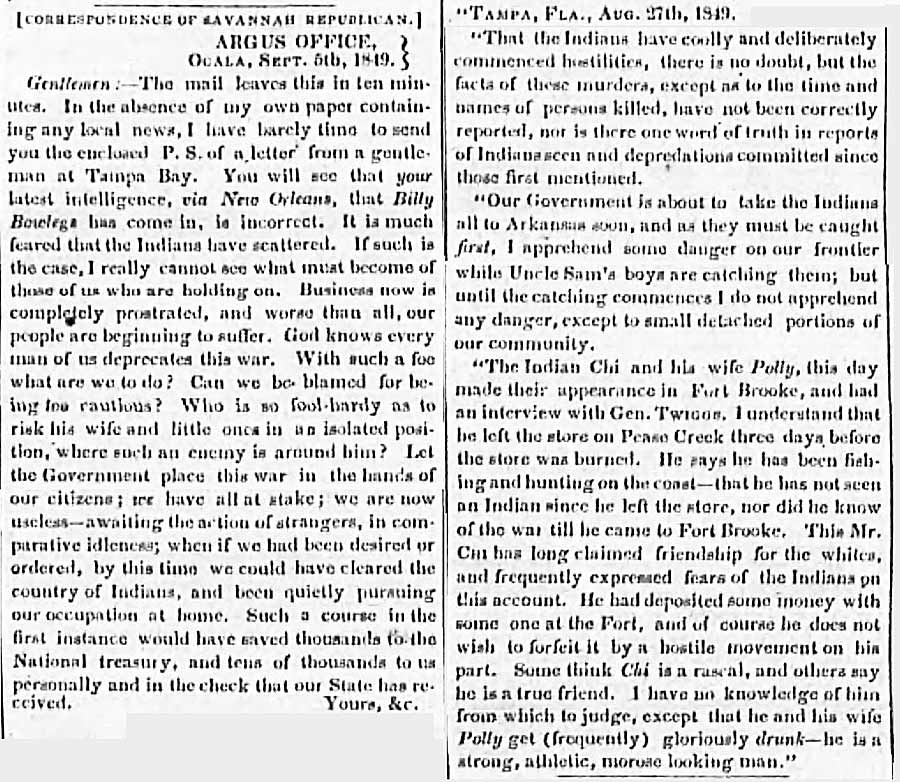
Savannah Daily Republican, Sept. 14, 1849
|
|
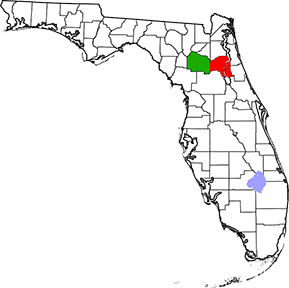 1849
- Magbee buys 160 acres in Putnam County 1849
- Magbee buys 160 acres in Putnam County
On Sept. 1, 1849, William P.
Brooker sold 160 acres of land he had received in a land
patent to James T. Magbee. Although the sale states it
was in Alachua County (green on map), Brooker's land patent
shows it was in Putnam County (red on map). This
difference can be attributed to the fact that Putnam County
was formed out of Alachua County in 1849.
SeeBureau of
Land Management:
Patent to William Brooker
Alachua County Clerk records:
William P. Brooker sells 160 acres in Alachua Co. to
Magbee
|
|
This Indenture
made the first day of September in the year of our Lord
One thousand Eight Hundred and forty nine between Wm
P. Brooker of Hillsboro County and State of Florida,
Laborer and Margaret his wife, of the one part and James
T. Magbee of the County and State aforesaid, a Lawyer,
of the other part; Witnesseth that the said Wm. P. Brooker
and Margaret his wife, for and in Consideration of the
Sum of Seventy five dollars to them in hand paid by the
Said James T. Magbee... Unto the Said James T. Magbee, and
to his heirs and assigns all that messuage and tract of
Land lying and being Situate in the County of Alachua...
Text has been edited, see complete text and image of this
page of original document |
The North East
quarter of Section Thirty two, Township Ten South, Range
Twenty then East, surveyed March Eighteen hundred and
Thirty-five and described by Surveyor as follows to wit- NE
1/4 32.10.23. (the
patent of the same having been issued in the name of William
P. Brooker Upon Permit Under the armed occupation Act, being
numbered 846)... tract of one hundred and Sixty
Acres of Land,...Unto the Said James T. Magbee his heirs
and assigns to the only proper use and behoove of the Said
James T. Magbee his heirs and assigns forever; And we hereby
Covenant with the Said
Signed Sealed &
delivered in presence of Wm P. Brooker (L.S.) W.G. Ferris
her Jas Gettis Margaret x Brooker (L.S.) mark
|
William P.
Brooker's land patent of 1849, numbered 846, was in the NE
quarter of Section 32, Township 10 South, Range twenty
THREE East. The transcription reads "Twenty
then" East.
|
|
 By James
McKay, Jr. in "Reminiscences
- History of Tampa in the Olden Days" Dec. 18,
1923 By James
McKay, Jr. in "Reminiscences
- History of Tampa in the Olden Days" Dec. 18,
1923
In
1848-49-50 my father owned and operated the schooner Sarah
Matilda (named for my mother) between Tampa, Mobile and New
Orleans. With the exception of the government vessels, this
was the only vessel that was being used commercially for
this port. He also constructed a twin wharf at the foot of
Washington street. Cattle were penned between the wharves,
for shipment to Key West, by schooner.
The
Indians having moved to the Everglades and the country being
in a peaceful condition, many settlers came into the country
and some located in Tampa, purchasing lots and building
homes, clearing up the scrub as they would build, putting
down plank sidewalks and in some instances shell, but the
sand remained in the streets making it hard on teams as well
as pedestrians. No lot of 105 feet by 105 feet sold for more
than $25 or $140 for the square. That is what our family
paid for the lots where the Olive hotel is, also The Times
lot, and the Almeria hotel square.
|
|
1850 - Marriage at age 30 to Susan Tatum
The year 1850 was an eventful one in the life of James T. Magbee.
On January 17, 1850, he married Susan A. Tatum in Leon County.
(Tallahassee)
According to Gene Jeffries of the
Orangeburgh German-Swiss Genealogical Society,
Susan's middle name was "Almeria" and was born Aug. 8, 1828 in S.
Carolina. She was one of seven children of Capt. John Tatum
and Phoebe Harriet Cleveland who married in Beaufort District, SC in 1826.
|
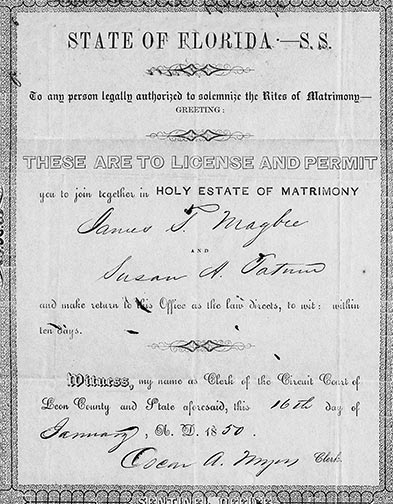
Marriage license of James T. Magbee & Susan A. Tatum from
Florida Marriages
1830-1993, Leon Co.
Familysearch.org |
|
Returning with his bride
to Tampa, he joined other Freemasons in creating the
Hillsborough Lodge No. 25, F. & A.M. Charter members included,
among others, Joseph Moore, Jesse Carter and M. L. Shanahan.
Magbee was also a charter member of the Tampa
Odd Fellows Lodge. |
|
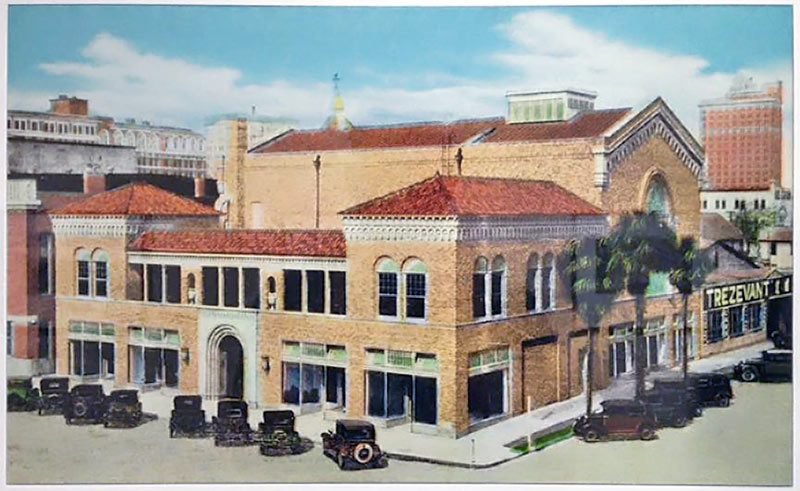 |
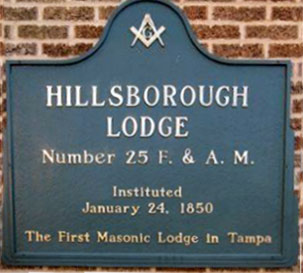
Lodge photos from their Facebook page |
|
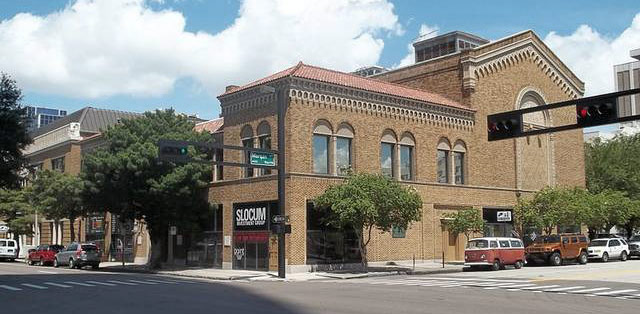 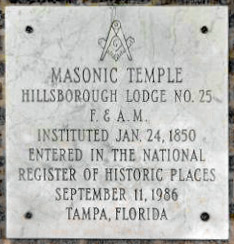
The Lodge in use
today, on the corner of Kennedy Blvd. & Morgan St, was built in
1927. |
|
 By James
McKay, Jr. in "Reminiscences
- History of Tampa in the Olden Days" Dec. 18,
1923 By James
McKay, Jr. in "Reminiscences
- History of Tampa in the Olden Days" Dec. 18,
1923
The first Masonic lodge was organized, I think, in 1850 and
the upstairs of my father’s store was fitted up for holding
their meetings, and later on I think in the later part of
1852, the lodge building at the corner of Whiting and
Franklin street was erected, first a two-story building, the
upstairs for a lodge and the lower floor used principally
for school purposes, and later on an addition of a two-story
building at right angle to the first one, was constructed.
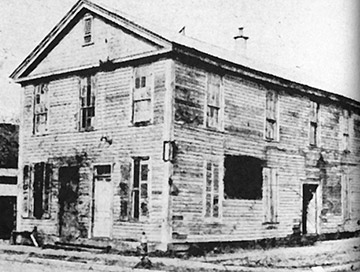 I
am under the impression that my father was one of the
charter members of this lodge, and had as much if not more
than any other citizen in its organization and construction
but later on had a difficulty with one of the members,
withdrawing from the lodge, saying he would never enter it
again as long as this party was a member, and I do not think
that he ever attended a lodge meeting after that. I
am under the impression that my father was one of the
charter members of this lodge, and had as much if not more
than any other citizen in its organization and construction
but later on had a difficulty with one of the members,
withdrawing from the lodge, saying he would never enter it
again as long as this party was a member, and I do not think
that he ever attended a lodge meeting after that.
I am under the impression that he had several hundred
dollars of stock in this organization which he lost for some
reason. If I have made incorrect statements in reference to
this matter and the lodge has records on file in regard to
it, I would be very glad to be put right in the matter. We
children attended school in this lodge building. Rev. J. K.
Glover, a Methodist minister, was the teacher.
[James McKay, Sr. became a member of Hillsborough Lodge
No. 25, F&A.M. Apr. 10, 1850. He was expelled Dec. 15,
1855 due to a dispute with fellow Mason Madison Post.
McKay was reinstated in the lodge, Sept. 5, 1863.]
|
|
1850 Federal
Census of Jas. T. Magbee and Susan A. (Tatum) Magbee, Tampa |
|
 |
|
James would
have been closer to age 30 than age 28 shown here on his
1850 census. His wife Susan was listed as 20, so their
age difference was around 9 to 10 years. His
occupation was "Lawyer" and his real estate property valued
at $1200. His place of birth is shown as "Georgia" and
his wife's "S. Carolina."
|
|
1850 - Magbee Participated in Support of the Nashville Convention
Slavery and the future of the Federal Union were much on the minds
of Hillsborough County residents in 1850. On April 8 and 11,
citizens met at the Hillsborough County courthouse to support the
Nashville Convention, a proposed gathering of delegates from the
Southern states which would enunciate at the convention, the
position of the slave holding states and their relationship with
the Union. Magbee played an active role in these local meetings.
|
The Nashville Convention (1850) was a
two-session meeting of proslavery Southerners in the United
States. John C. Calhoun initiated the drive for a meeting
when he urged Mississippi to call for a convention. The
resulting Mississippi Convention on Oct. 1, 1849, issued a
call to all slave-holding states to send delegates to
Nashville, Tenn., in order to form a united front against
what was viewed as Northern aggression.
Delegates from nine Southern states met in Nashville on
June 3, 1850. Robert Barnwell Rhett, a leader of the
extremists, sought support for secession, but moderates from
both the Whig and the Democratic parties were in control.
The convention ultimately (June 10) adopted 28 resolutions
defending slavery and the right of all Americans to migrate
to the Western territories. The delegates were ready to
settle the question of slavery in the territories by
extending the Missouri Compromise line west to the Pacific.
In September the U.S. Congress enacted the Compromise
of 1850, and six weeks later (November 11–18) the Nashville
Convention reconvened for a second session. This time,
however, there were far fewer delegates, and the extremists
were in control. Although they rejected the Compromise of
1850 and called upon the South to secede, most Southerners
were relieved to have the sectional strife seemingly
resolved, and the second session of the Nashville Convention
had little impact.
Information from
Britannica.com |
|
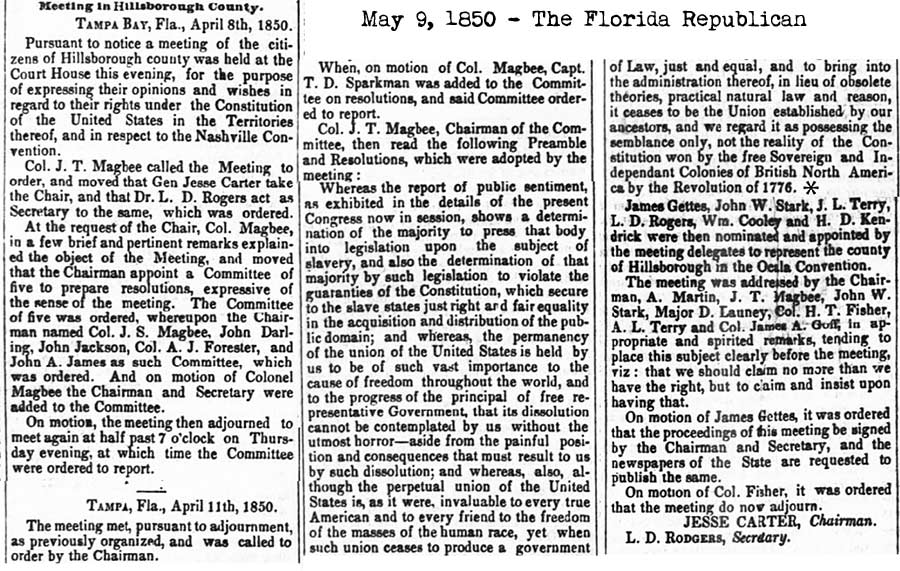
May 9, 1850 The Florida Republican
Meeting in Hillsborough Co, April 8 & 11
Seven resolutions cut from the article, see the whole
article at above link. |
|
1850 - Magbee Narrowly Reelected to 2nd Term in the Florida House
of Representatives
In the fall of 1850, at only about 30 years old, Magbee stood for
reelection to the Florida House of Representatives. It was a very
close race. Running as a "Union man," he defeated fellow Democrat
Lucius D. Rogers by a vote of 93 to 91. Elias J. Hart received 60
votes.
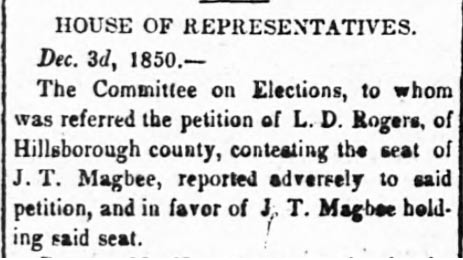 An
angry Dr. Lucius Rogers followed Magbee to Tallahassee to contest
the election. In spite of some "slight irregularities," the
Assembly declared Magbee the winner by a vote of 92 to 88. Rogers
received "$33 for eleven days attendance, and $70 for his
traveling expenses from Hillsborough Co. to this place, a distance
of three hundred and fifty miles." An
angry Dr. Lucius Rogers followed Magbee to Tallahassee to contest
the election. In spite of some "slight irregularities," the
Assembly declared Magbee the winner by a vote of 92 to 88. Rogers
received "$33 for eleven days attendance, and $70 for his
traveling expenses from Hillsborough Co. to this place, a distance
of three hundred and fifty miles."
Jan 2, 1851 Florida Republican
Soon afterward, Magbee, exhibiting a vindictive streak in his
personality, attempted to have legislation passed which would
prohibit the allowance of pay and mileage for candidates
contesting election results to seats in the General Assembly.
That legislation did not pass, 15 for, 21 against.
On Dec. 6, 1850,
Magbee was one of the committee which submitted a bill to provide
for the final removal of the Seminole Indians.
Though considered a "Union man" by his constituents, Magbee voted
along with those attempting to postpone consideration of a strong
pro-Union resolution. But his most important vote at the 1850-51
session was to elect Stephen R. Mallory to the United States
Senate over incumbent David Levy Yulee.
|

By James
McKay, Jr. in "Reminiscences
- History of Tampa in the Olden Days" Dec. 18,
1923
In 1849 Mr. Payne’s store
situated near Peace River, present Hardee County, was burned
by a party of Indians and he was massacred. The Indians
being at peace the government demanded that the perpetrators
of this crime be delivered to the authorities and they
pressed this demand with such force that Billy Bowlegs
surrendered three of his tribe*.
They were placed in jail
and held for some time, when one day about noon, they gave a
war whoop and when the sheriff went to the jail found all
three of them dead, hanging to the bars, by their blankets.
One of them did the hanging and then stood on a bucket,
kicked it from under him, as he was found with his feet on
the floor and his legs bending so as to throw his weight on
his blanket, showing how determined they were. Benjamin J.
Hagler was the sheriff at that time. I was a boy [8] years
of age and I have never forgotten how these Indians looked,
while hanging. This incident was so impressed on my mind
that it has remained with me to this date.
[*McKay combined two memories into one. The three involved at the
Peace River incident were later sent to the Indian
Territory. In August, 1850, Daniel Hubbard, an orphan boy,
was abducted by Indians and murdered. In 1851, Billy
Bowlegs delivered the three alleged murderers to civil
authorities in Tampa. See "The Seminole Indian Murders of
Daniel Hubbard," by Jas. W Covington, Sunland Tribune,
Vol. XV, Nov. 1989.]
|
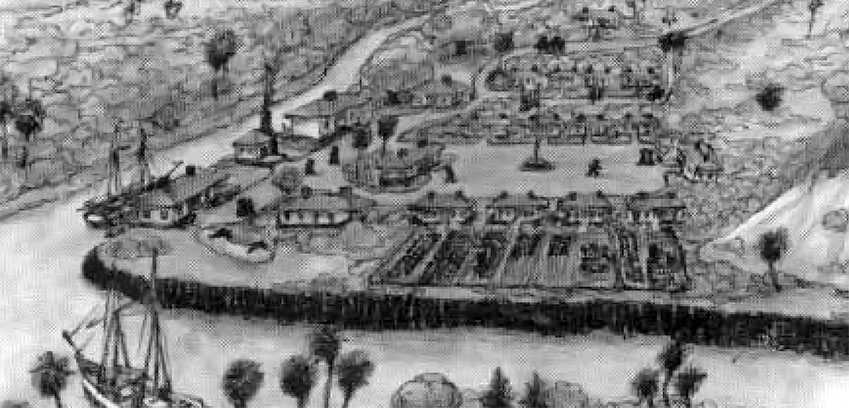
Artist's sketch of
Ft. Brooke as it appeared in 1850
Image from The Mayors of Tampa 1856 - 2015
|

By James
McKay, Jr. in "Reminiscences
- History of Tampa in the Olden Days" Dec. 18,
1923
In 1851 we shipped cedar logs that were cut from up the
Hillsborough river, to Blanchard and Fitch in New York, for
making pencils. In 1851 my father erected a saw mill at the
place where the Tampa Steam ways is now situated, for the
manufacture of lumber. Previous to this, all lumber was
freighted from Mobile. Sawdust from this mill was placed on
the municipal streets to assist teams in hauling. When the
yellow fever appeared in town many of the citizens claimed
it was from decayed sawdust and the practice was stopped.
Fort Myers was established, I think, in 1850 by the
government. My father was appointed
sutler of this post in 1852 and used a small schooner
named Emma to take his goods from Tampa to Fort Myers. He
also opened a store at Fort Denaud, which was on the
Caloosahatchee river some 20 miles above Fort Myers and
chartered a little steamer he owned, named the Woodduck to
the quartermaster department to carry supplies to the troops
at that place. She was operated between Punta Rassa, Fort
Denaud, and Fort Myers.
The mails were brought to Tampa overland from Gainesville by
stage first weekly, then semiweekly, under contract with my
father in 1852. The first court house was constructed in
1848 and the second and larger court house was built by the
Rev. John H. Breaker, being a two-story building in 1854.
|
|
The Location of James McKay
Sr's Sawmill
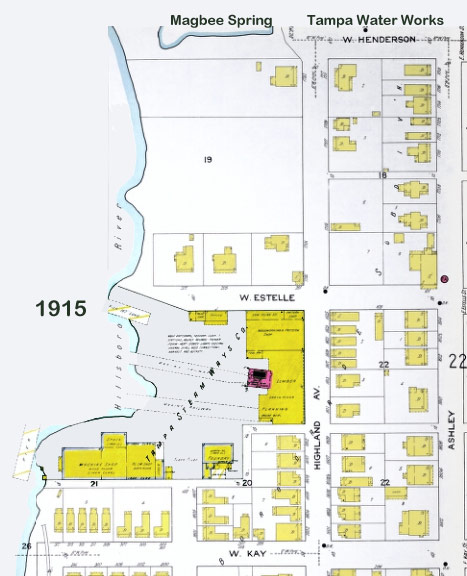
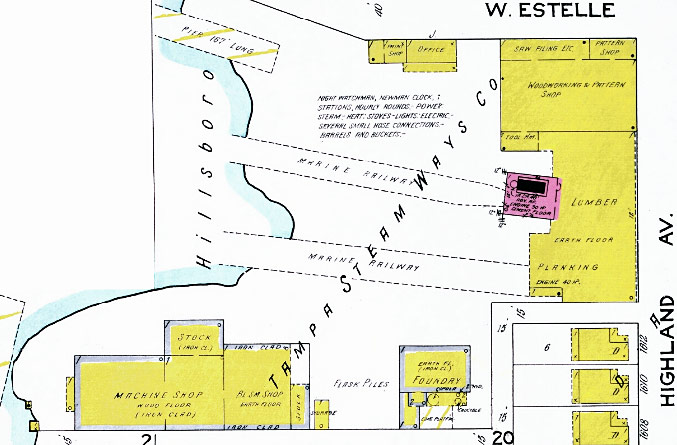 |
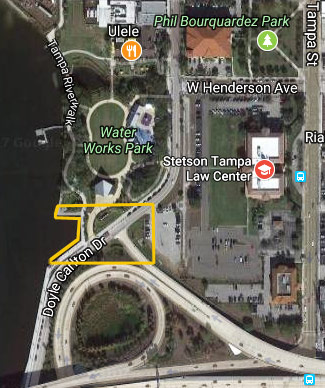 These
two Sanborn fire insurance maps from the University of
Florida Sanborn Maps collection show the sawmill area when
it was Tampa Steam Ways (left) and close up (right) in 1915.
It was located just south of the Magbee Spring and Tampa
Waterworks in the Tampa Heights area along the river.
Today, the area formerly occupied by McKay's sawmill is the
southern tip of Tampa Waterworks Park and part of the
I-275
ramp system downtown. These
two Sanborn fire insurance maps from the University of
Florida Sanborn Maps collection show the sawmill area when
it was Tampa Steam Ways (left) and close up (right) in 1915.
It was located just south of the Magbee Spring and Tampa
Waterworks in the Tampa Heights area along the river.
Today, the area formerly occupied by McKay's sawmill is the
southern tip of Tampa Waterworks Park and part of the
I-275
ramp system downtown.
Tampa Steam Ways Co., formerly
abutting the present day Water Works Park to the south, was
primarily involved in marine repair and boat construction,
but also received shell and sand. Available fire insurance
maps showed two marine ways with marine railways on Tampa
Steam Ways’ property. The Corps of Engineers survey
indicated that the business had “marine ways” capable of
accommodating vessels up to about 120 feet in length with
drafts of 8 to 10 feet. A circa 1899 photograph of Tampa
Steam Ways already showed an active marine repair
business on the site and large boats moored at its wharf. As
late as January 1956, Tampa Steam Ways constructed a
wooden-hulled 73-foot exploratory fishing vessel for the
Department of the Interior’s Fish and Wildlife Service.
Brief Historical Review of Dredging History Tampa Heights
Shore Protection & Docking Facility Project by Land
Assessment Inc., 2006 |
1852 - October 10 - Tampa Village government abolished
Officials learn they
had no legal authority to levy taxes and on this day, the
electors vote to abolish the village government.
The Mayors of Tampa 1856 - 2015, A project of
the City of Tampa, City of Tampa: Incorporation
Timeline
The corporation of the Town of Tampa
was dissolved by an act of the county commissioners and
its assets ordered turned into cash with which to pay its
debts.
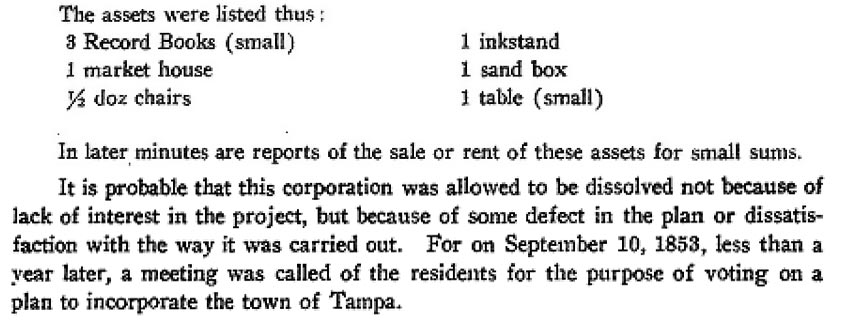
History
of Hillsborough County, Florida, Narrative and
Biographical, 1928" by Ernest L. Robinson,
Director of High Schools of Hillsborough County, Formerly
Principal of Hillsborough
County High School.
|
|
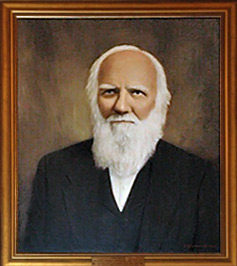 |
|
Leader of the Hillsborough County "Know Nothings," John
Darling. Read more about him at "The
history of John Darling" where this image is from. |

By James McKay, Jr. in "Reminiscences
- History of Tampa in the Olden Days" Dec. 18,
1923
About this time the Know Nothing Party was organized against
the Democratic party. The political excitement reached our
quiet little town, and Rev. Glover advocated the party so
strong, denouncing the Democratic Party, that we were
removed from his school and sent to James Petty as teacher.
Well do I remember the public meeting that was held in the
court house. Rev. J. K. Glover advocating the tenets of the
Know Nothing party and Mr. Alfonso DeLaunay denouncing the
Know Nothing party and defending the principles of the
Democratic party. Their speeches were bitter but the people
believed that Mr. DeLauney was right. The Know Nothing party
was of short life. Mr. DeLaunay was appointed postmaster
Dec. 21, 1852 and served a little more than 8 years, he was
of French descent, very intelligent and a fine talker.
|
|
The Hillsborough County
Courthouses
[Red text from E. L.
Robinson's History of Hillsborough County]
The first courthouse had been erected in Tampa soon
after the County of Hillsborough was organized. Hillsborough
County was created on January 25, 1834, from Alachua and
Monroe counties, during the U.S. territorial period
(1822–1845). The new county was named for Wills Hill, the
Earl of Hillsborough, who served as British Secretary of
State for the Colonies from 1768 to 1772. The County was
created through efforts by Judge Augustus Steele.
That little log courthouse was
burned by the Indians at the outbreak of the Second Seminole
War. At that time, fewer than a thousand people lived
in Hillsborough County and cattlemen came to the courthouse
most often to complain about stolen livestock. And, of
course, judges and attorneys traveled long distances by
horseback or stagecoach to cover their “circuit," a name
still in use today.
When the first County Commissioners met in 1846, the general
topics were taxes, transportation, a new courthouse and
jail, and downtown development. The next year, the
Commissioners accepted the bid of Captain James McKay to
construct a two-story courthouse, which was 20 ft x 45 ft.
at a cost to taxpayers of $1,358. This is the
courthouse most refer to as the "First courthouse" although
it was really the 2nd one.
This
courthouse was completed and accepted from James McKay on
January 3, 1848 and his bill paid; including ten dollars
allowed for additional work.
This, the
"first
court house"
of Hillsborough County, was erected on the block bounded by
Lafayette, Franklin, Madison and Florida. The entrance was
on the south side and there was one large room for a court
room and two small rooms on the west side for offices and
jury rooms. The material for this building was brought to
Tampa from Mobile by Captain McKay who had come to Tampa in
[1846].
This building
was soon outgrown and no longer adequate for the increasing
business of the county. When a new building was ordered this
building was sold to John H. Redbrook who moved it to
Franklin street. Later it was moved to the comer of Zack
street and Florida avenue and used as a store house for the
Peninsular Telephone Company.
A third structure was erected
in 1854, the one in the photos below. It was built at
a cost of $5,000 and was used until 1891. Of
course, it also had a picket fence to keep the animals out
of the courtyard.
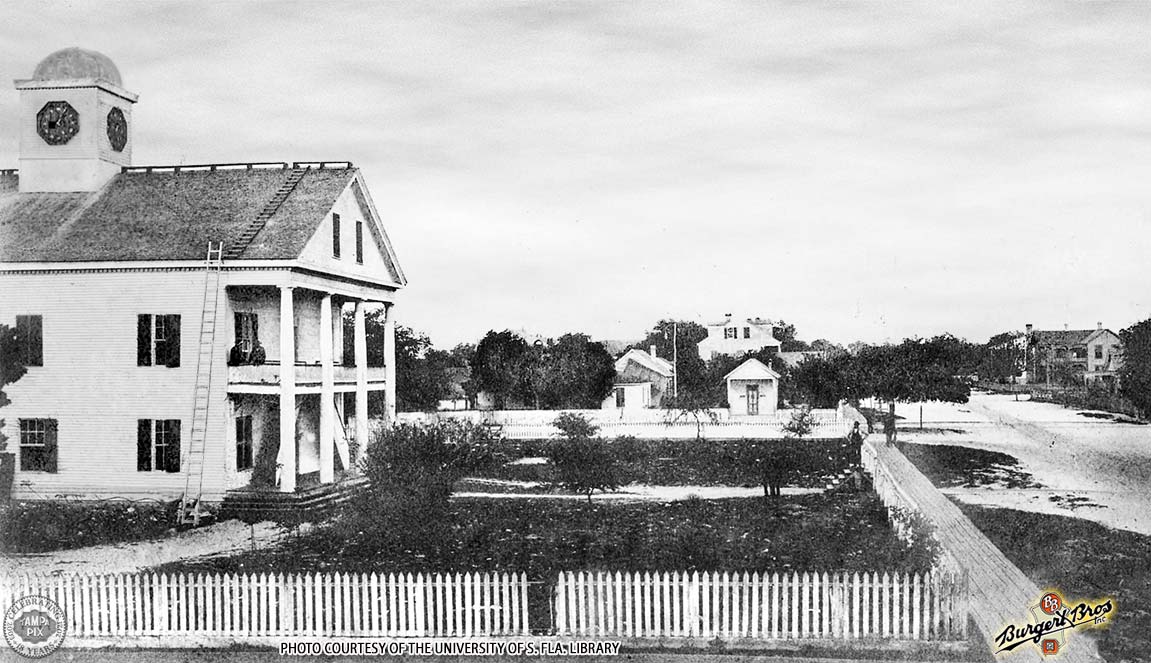 |
|
Hillsborough
County Courthouse, Lafayette Street entrance, looking east
from intersection with Franklin Street, 1886.
This is the courthouse Magbee would have held court in for
Hillsborough County trials.
Burgert Brothers photo from University of South Florida
Digital Collection
|
THE TAMPA HERALD
TAMPA, FLORIDA. WEDNESDAY, JUNE 7. 1854. Our Court
House.
Through the kindness of Mr.[John H.]
Breaker, contractor and builder of this magnificent
Court House, we are enabled to furnish our readers
with a full description of its order, size, various
offices, etcc. etc. The building is 76 ft. long, by 45
wide, and two stories high. The 1st. story is 12 ft.
between joints; the second is 14 1-2 ft. On the 1st
floor is the City Hall, Judge of Probates, Clerks’,
and Sheriff Offices, and Grand Jurors’ room. A
spacious Hall extends from the Southern entrance of
the building, between the four offices to the City
Hall.
On the
2nd floor is the Court Room, 42 by 45 ft., and two
spacious Jury rooms, with a passage extending from the
south entrance, between the jury rooms to the
Court-room. A projecting Portico, an each end, the
whole width of the building supported by heavy Grecian
Columns. A double flight of stairs ascends from each
end of the building, landing - on the 2nd floor of the
porticos. The roof is mounted with a dome and tower,
18 ft in diameter, and 24 ft high, covered with tin,
or zinc.
The
extreme height of the building, from the pinnacle of
the tower to the ground is 68 feet; and the whole is
being beautifully finished in a combination of the
Grecian, Ionic, and Corinthian orders. The plan was
drawn by the contractor, Mr. Breaker, who has engaged
to erect the building, for a sum less than $5000. The
execution of this contract, we are satisfied, will be
attended with considerable loss to the builder, unless
the generosity and liberality of the County
Commissioner’s shall interpose to prevent it, for the
credit of our Town and County, we hope they will, and
not in any stingy manner.
|
Tony Pizzo
states in his James McKay, the Scottish Chief:
"In 1870, a
visitor commented: The first building to attract my
attention was the courthouse, a frame building set in a
clearing in a big scrub. It had a cupola or belfry, and
was the first house I had ever seen built of anything but
logs.”
In 1870,
the visitor would have seen the 1854 "Mr. Breaker"
courthouse. Pizzo goes on to say, "This building
served as the courthouse until 1891, when it was moved to
Florida Avenue near Cass Street (where the Kress Building
stands) and served as Tampa’s first hospital."
It was
bought by J. J. Kinsman in 1891 who had it moved north
on Fla. Ave. between Cass and Polk streets and turned it
into a boarding house. It was after 1900 that it
was turned into a hospital. See "History
Rewritten - Tampa's old City Hall Clock."
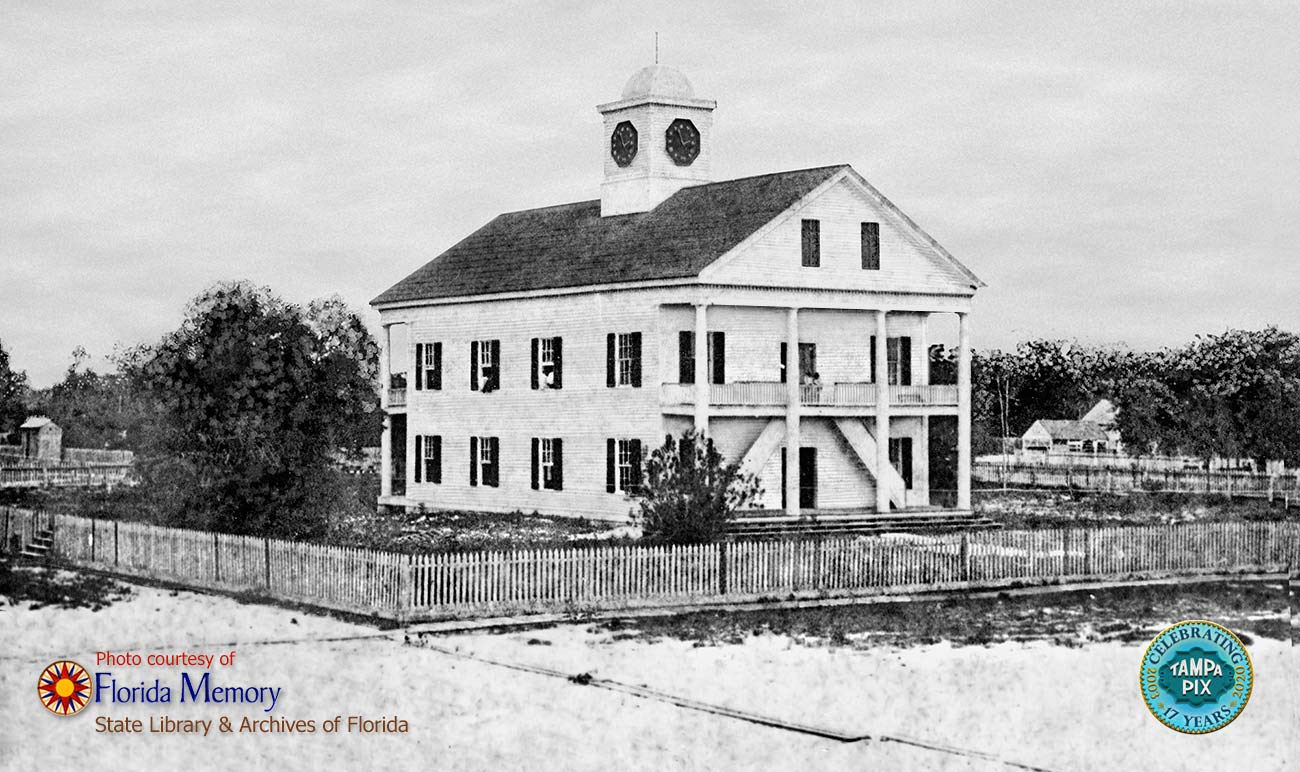
Hillsborough
County Courthouse seen from Lafayette St. and Franklin
Street, circa 1880s.
Image from Florida Memory State Archives and Library
collection.
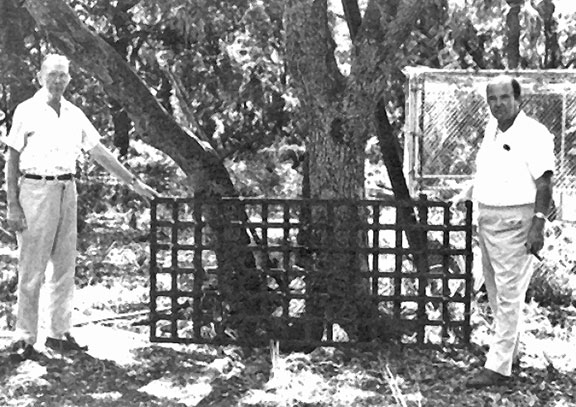
JAIL HOUSE DOOR
The iron door from the jail in the old Court House built in
1848* by Capt. James McKay I is preserved by Dr. Albert
Gutierrez in his bird sanctuary at the mouth of Palm River
and McKay Bay. Shown studying the relic are Robert McKay,
left, son of D. B. McKay and great grandson of the famed
captain, and his cousin, Dr. Gutierrez. Photo by Tony Pizzo.
*It may have been from Mr. Breaker's 1854 courthouse if
they, too, thought McKay's courthouse was the one used until
1891.
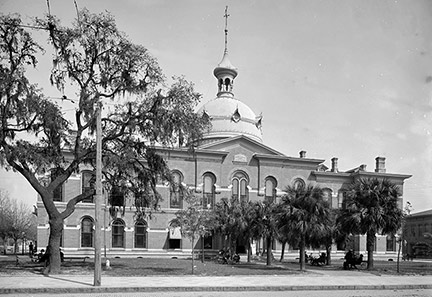
In August 1892, an
ornate, red brick courthouse with a silver dome was built,
occupying the same block in downtown Tampa, but facing west
to Franklin St. The architect, J.A. Wood, also had designed
the Tampa Bay Hotel. This courthouse was demolished in
1952 because of it's poor condition, but mainly because of
the need for parking space. The property became a parking lot
until a horrible, ugly blue-cube building and parking garage
was built there.
Info from the 13th Judicial Circuit Hillsborough County
history website** (Except for the last two sentences and
except where noted.)
**Contrary to
what the judicial website says, this dome is not at Joe Chillura Park Square now,
it
is a scaled down replica there.
|
|
1852 - Magbee's First Client in a Supreme Court Case
Magbee continued
his legal practice and in March 1852 when he was around 32, the
Florida Supreme Court met at Tampa for the first time. During this
brief term, in which
three
cases were decided, Magbee represented his first Supreme Court
client,
Thomas Mitchell,
before the High Court and won. Before the Justices took their
leave of Tampa, a gala dinner was held at the home of Dr. Samuel
B. Todd. Lawyers and laymen feasted "on turkeys, ducks, ham, pies,
etc." and then the endless rounds of toasts began. "Sparkling
vintage" and cake were served, and Magbee and others took turns
hoisting their glasses until several hours later, when the
festivities finally adjourned.
 |
Information from
University of Miami Law Review - "A
History of the Florida Supreme Court" by the Honorable
Joseph A. Boyd Jr. and Randall Reder:In July 1845, the
Florida General Assembly elected the circuit court judges
who would also serve on Florida's first supreme court. The
general assembly elected Thomas Baltzell, George S.
Hawkins, Isaac H. Bronson, and William Marvin to serve
as circuit court judges for the Middle, Western, Eastern,
and Southern Circuits respectively. Two of those elected,
Isaac Bronson and William Marvin, declined the invitation to
serve. Thomas Douglas was appointed to serve in place
of Isaac Bronson, and George W. McCrae was appointed
to replace William Marvin. The first session of the Florida
Supreme Court convened in January 1846, and at that session
Thomas Douglas was selected to serve as chief justice.
In January, 1851 the Florida legislature
created a new supreme court independent from the circuit
courts. The chief justice and the two associate justices of
this new supreme court were each to be elected by the
legislature to serve for a term of eight years.
Walker Anderson was elected as the court's chief
justice, and Leslie Thompson
and A. G. Semmes as the associate justices. These
three men were important in establishing the Supreme Court
of Florida as an independent judicial body.
This legislatively elected supreme court
met for the first time in Tallahassee on January 30, 1851 in
a political atmosphere still flushed with the pride and
excitement of the state's recent admission to the Union.
The difficulties and obstacles that had postponed statehood
were forgotten. The panic of 1837 and the associated bank
failures and economic depression were but a dim memory. Even
the problems with the Indians seemed to wane in the face of
this new state. It was in this vibrant and optimistic
atmosphere that the court began holding sessions in each of
the four circuits, first convening in Tallahassee in
January, then moving to Jacksonville and Tampa, and finally
completing its term in Marianna by March. |
|
Cases Argued
and Adjudged in the Supreme Court of Florida, Term at Tampa,
Southern Division, March 1852
Thomas P.
Kennedy, Appellant, vs. Thomas Mitchell, Appellee.
Gettis and
Pearson for Appellant Kennedy
Magbee for Appellee Mitchell
Justice
Semmes delivered the opinion of the Supreme Court.:
"We are of the opinion that the court below committed no
error in overruling the plaintiff's motion, and in
dismissing the suit upon the verdict of the jury finding
the issue in favor of the defendant.
Per Curiam-Let the judgment of the court below be
affirmed.
Arthur H.
Morse, Appellant, vs. Isaac Garrison, Appellee
Pearson for
Appellant
No counsel for Appellee
Chief Justice
Anderson delivered the opinion of the Supreme Court:
The judgment of the court below dismissing the levy must
be reversed, and the levy re-instated, with directions
to the proper officer to proceed therewith according to
law.
William
Sanders, Appellant, vs. Marshal Pepoon and Robert Olcott,
Appellees
King for
Appellant
Justice
Thompson delivered the opinion of the Supreme Court:
The judgment of the court below must be reversed, with
costs; and inasmuch as it appears by the record that the
amount of the judgment and costs has been paid by the
appellant, let a writ of restitution of the amount so
paid issue from this court, upon the application of the
appellant or his counsel.
Read about these cases in their entirety.
|
|
|
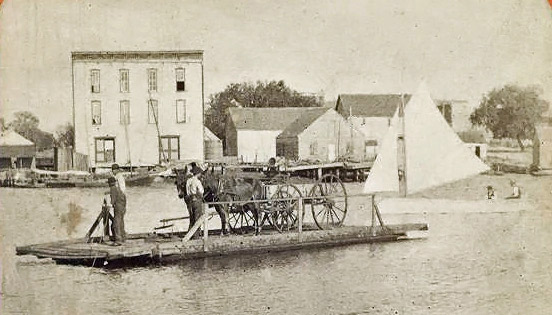 |
|
|
Jesse Hayden's
ferry at the foot of Jackson St., circa 1880s
The Haydens came to Tampa in 1866, bought some
land from General Carter, and filed a homestead claim
for 60 acres. Jesse and Susan’s daughter Mattie
married Donald S. McKay, son of sea captain James
McKay, Sr. The Jacksons and the Haydens were
among the prominent families of Old Tampa, and along
with the Haskins, owned most of what would later
become Hyde Park. The Haskins family, however, sold
their land before Hyde Park was developed because of
the inconvenience of crossing the river with children.
See Lafayette Street Bridge History at TampaPix |
 In
1852 we opened a ferry at the foot of Jackson street, so as
to cross the stage with the mail. It was also used by the
public. Ponds that were located on the east end of Jackson
street caused the city officials as well as the people,
considerable annoyance, especially during the rainy season.
One of these ponds at the corner of Jackson and Marion
street would take in all four corners and prevent
pedestrians from passing in that direction. I have skated
rocks over ice on this pond when it was frozen over during
the winter. In
1852 we opened a ferry at the foot of Jackson street, so as
to cross the stage with the mail. It was also used by the
public. Ponds that were located on the east end of Jackson
street caused the city officials as well as the people,
considerable annoyance, especially during the rainy season.
One of these ponds at the corner of Jackson and Marion
street would take in all four corners and prevent
pedestrians from passing in that direction. I have skated
rocks over ice on this pond when it was frozen over during
the winter.
The
authorities dug a ditch in the center of Jackson street to
drain these ponds, and in some places it was 12 feet deep.
Across Franklin and Tampa streets small bridges were placed
so as to permit passage of teams and the public. This did
not accomplish what was desired so the ponds were filled in
later on.
By James McKay, Jr. in "Reminiscences
- History of Tampa in the Olden Days" Dec. 18,
1923 |
|
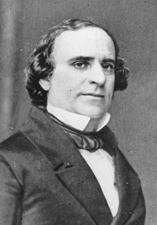 |
1852 - The Florida Senate settles election results dispute
 On
August 27th, the Senate voted to end a contested election between
David Levy Yulee and Stephen R. Mallory of Jacksonville. When
Yulee’s seat came up for reelection in 1851, he lost the balloting
to Mallory by two votes. Yulee contested the election. On
August 27th, the Senate voted to end a contested election between
David Levy Yulee and Stephen R. Mallory of Jacksonville. When
Yulee’s seat came up for reelection in 1851, he lost the balloting
to Mallory by two votes. Yulee contested the election.
|
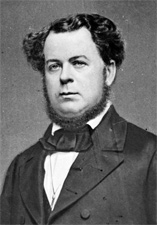 |
|
David Levy Yulee
In 1845 Florida's first two US senators, David Levy Yulee of
St. Augustine and James D. Westcott, Jr., of Tallahassee,
presented their credentials and took their oaths of office.
Senator Yulee, born David Levy in St. Thomas, West Indies,
June 12, 1810, was the first Jewish-American to serve in the
Senate. Taking office as David Levy, at the senator’s
request, the Florida state legislature officially changed
his name to David Levy Yulee in 1846.
See Biographical Directory of Congress for more info. |
On
August 27, 1852, the Senate voted in favor of Mallory. In 1855
Yulee returned to the Senate, and he and Mallory served together
until 1861.
1852 - Magbee wins 3rd
term as State Rep.
In the fall of 1852 Magbee ran for his third term in the Florida
House of Representatives, once again as a "Union man." Out of a
total of 302 votes cast, he received 120 with 99 for John McNeal
and 83 for William Hancock. Magbee's plurality was about 40%. The
ensuing legislative session was marked by action on the railroad
and Indian questions. Magbee was around 32 years old. |
Stephen
R. Mallory
Photo by Mathew Brady from Wikimedia.
Born in Trinidad, West Indies, about 1813; immigrated to
the United States with his parents, who settled in Key West,
Fla., in 1820. See more information at this source:
Biographical Directory of Congress |
|
|
|
1853 - June 4
-
Formation of a Vigilance Committee
A meeting takes place in Tampa to discuss rumors of a large
cow trail found leading from the stock yard toward the
Indian Nation. It is suspected that the Indians have
been stealing their livestock. A proposal for an armed
party to investigate is turned down so as to not stir Indian
hostilities, and they postpone pursuit until next October.
Two committees are set up. The correspondence
committee of 5 men: Magbee (Chairman), Crawford, Sparkman,
Moore, and Turman. The vigilance committee is
comprised of 22 men. Any information obtained by a
vigilance committee member was to report to the chairman of
the correspondence committee, who would report to the
Executive Department.
The July 21 Florida
Republican newspaper (Jacksonville)
|
|
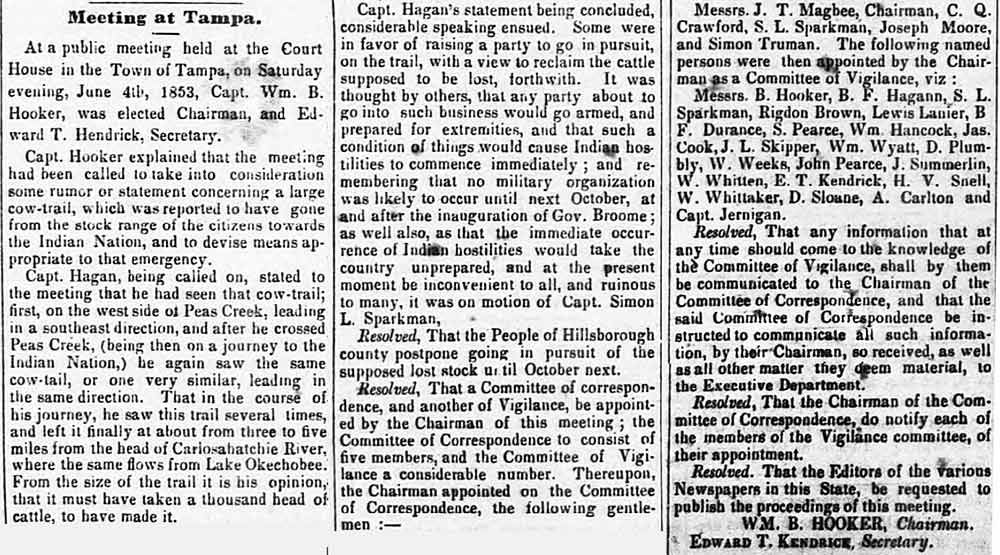 |
|
1853 - Magbee suspended from the Hillsborough Lodge |
|
After returning
from Tallahassee to Tampa in 1853, Magbee got into trouble with his
Masonic brethren. Charges of an undisclosed nature were filed
against him on March 5 by M. L. Shanahan, and on March 19, 1853,
Magbee was “suspended for an indefinite period of time." He
was around 33 years old.
Michael Lucas Shanahan
would become Tampa's city marshal in 1859. Born in 1813 in
Maryland, Shanahan is listed on the
1850 census in Tampa as a "Grog seller" and was living with
his wife and family next to Magbee. Shanahan died in 1863 and is
buried in Oaklawn Cemetery.
|
 Railroad
fever first hit Tampa in 1853. At the time only 500 or so
individuals lived in the tiny town. Barely deserving the
title village, this was a rough frontier settlement. One
unimpressed visitor scornfully noted: Railroad
fever first hit Tampa in 1853. At the time only 500 or so
individuals lived in the tiny town. Barely deserving the
title village, this was a rough frontier settlement. One
unimpressed visitor scornfully noted:
"Tampa
is a small town - inhabited by the most worthless
population in the world. They seem to be the scum, well,
refuse of creation... (There) are three or four lawyers,
as many preachers, three stores - half a dozen grog
shops, and these live on each other. I do not believe
there is a dollar per head among them. They hate the
sight of an honest man.”
Despite his
exaggeration, the visitor properly expressed the town's
poverty. Other than by water, Tampa essentially was cut off
from the well-settled portions of Florida, which lay 120
miles or more to the north. The few roads were little more
than tracks in the wilderness, sand traps in dry weather and
mud holes in wet. When bridges were built, they often were
swept away by hurricane winds and flooding. In 1862 a
traveler noted of a stagecoach ride from Ocala: I arrived in
Tampa, after having travelled on and in that old (coach) for
thirty-two hours continuously through the most dreary
country I ever saw." He added: "You may well imagine I was
tired."
Most Tampa residents had
little hope of overcoming their poverty until Tampa's
transportation isolation was broken. At first, it seemed the
problem might easily be solved. In January 1853 the Florida
legislature approved the building of the Florida Rail Road.
Backed by United States Senator David Levy Yulee, the line
was to run from the area of Fernandina to "some point, bay,
arm, or tributary of the Gulf of Mexico in South Florida.
High
hopes had been aroused when announcement was made that
Senator David Levy Yulee and his associates had received
a charter from the state to build a railroad diagonally
down the peninsula from Fernandina to Tampa Bay.
Inasmuch as the state guaranteed interest payments on
all bonds issued by Yulee's road, and huge grants of
land were promised as a reward for its construction, no
one had any doubt but that Tampa soon would get rail
connections with the north. (Tampa,
A History of the City and the Tampa Bay Region of
Florida, by Karl H. Grismer, edited by D. B. McKay, 1950)
Local
citizens immediately organized to bring the road to Tampa.
A great "railroad convention" was held and delegates were
sent to Yulee for guarantees. Railroad
officials did not disappoint them.
On July 1, 1853 a
Railroad Convention was held in Ocala with representatives
from around the state, for the purpose of beginning to
plan the railroad system in South Florida. The
Hillsborough representatives were Madison Post, C.L.
Frieble, E.J. Hart, H.C. Bellows, and C.Q. Crawford.
After committee appointments and much discussion, the
following resolutions were adopted:
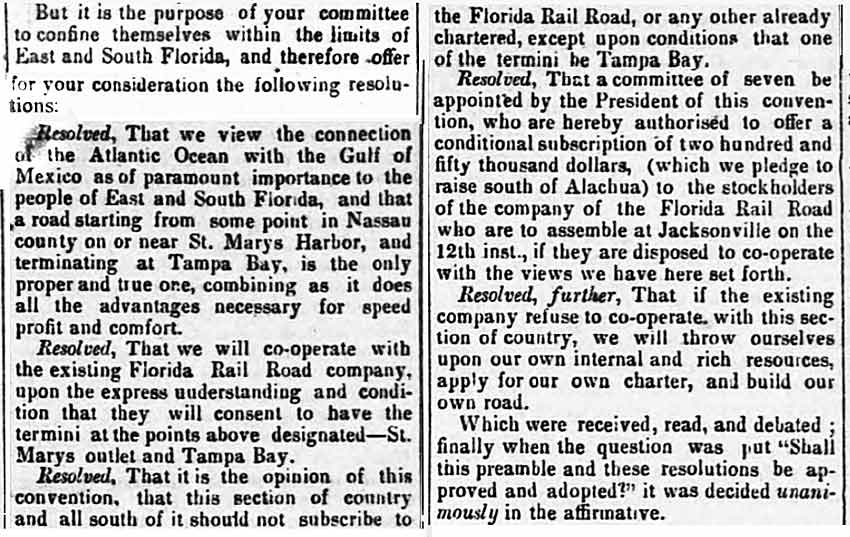
July 21, 1853 Florida Republican (Jacksonville)
The news threw Tampa into a
whirl of growth and development. Scores of new
residents arrived, intent upon expected profits. Among
them were Lake City planter and railroad investor L. Whit
Smith and Judge Joseph B. Lancaster, former mayor of
Jacksonville and speaker of the Florida House of
Representatives. Smith soon founded the town’s first
newspaper, the Herald, which in 1855 became the Florida
Peninsular. Lancaster was elected Tampa’s first mayor the
following year.
Tampa and the
Coming of the Railroad, 1853-1884, by Canter Brown, Jr,
in The Sunland Tribune, Volume XVII November, 1991 Journal
of the Tampa Historical Society. |
| |
|
 By James McKay, Jr. in "Reminiscences
- History of Tampa in the Olden Days" Dec. 18,
1923 By James McKay, Jr. in "Reminiscences
- History of Tampa in the Olden Days" Dec. 18,
1923
It
has been remarked that Tampa had not been visited with a
hurricane since 1848 until the one of 1921, which is an
error, Tampa was visited with a pretty
stiff hurricane in 1853, that I recollect very well. The
schooner John Roalef owned by W. G. Ferris and sons arrived
from New Orleans with a cargo of general merchandise and
just as she had finished discharging this cargo, this
hurricane came along, bringing in a tidal wave with it that
landed this vessel about 100 yards north of the A. C. L.
railroad warehouse where it stands now and about 100 yards
from the river bank. My father bought this vessel, had her
jacked up and repaired, dug a canal to the river and
launched her into this canal, floating her. The tide must
have risen some 10 feet above low water mark as this vessel
was drawing some five feet or more of water, at the time she
went ashore.
|
|
1853 - February: John
Jackson combined previous surveys and expanded the plan of
Tampa After lots
were put on sale for the first time in April of 1847, land
owners apparently began to be written to the original plan
as seen below.
Image from
Judge Steele Left His Mark by Rodney Kite-Powell, Jun. 30,
2013, Tampa Bay Times online. (Read this article to see how Jackson
expanded on the first plan for Tampa by Judge Augustus
Steele.) This image is low resolution so it was extremely difficult to make out the
lot owner names. The more recognizable names have
been added as an overlay. Place your cursor on the
image to see the added names. It is possible that there is some error here.
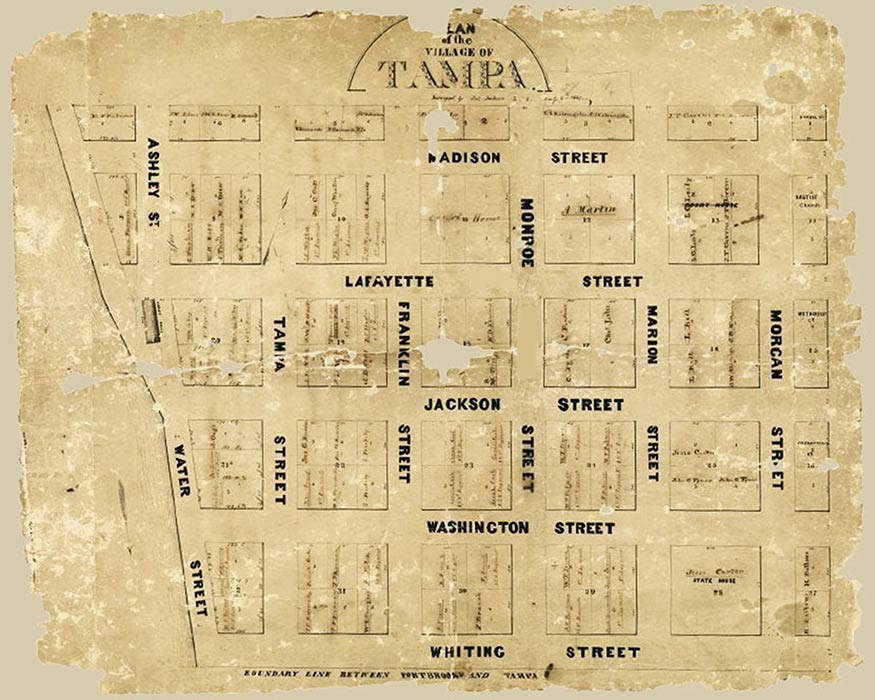
Below is
the new Feb. 1853 survey which shows structures already in
place sketched in red. |
|
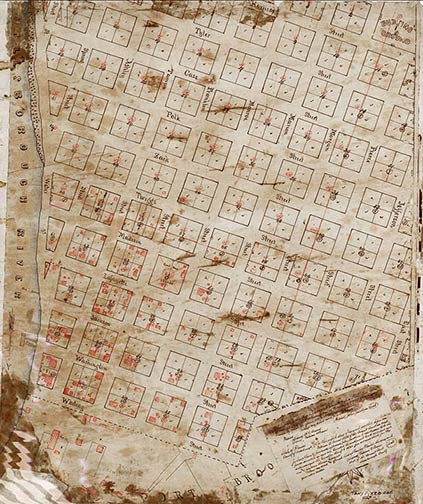 |

1853
plan of Tampa certified by surveyor John Jackson
From the University of South Florida digital map collection
"I hereby certify this map is the original general map or
plat of the Town of Tampa made and drawn by me in February
AD 1853 from surveys made by me in the years 1847 - 1850 and
in January 1853. Witness my hand and private seal.
(Signed) John Jackson
Witness
(Signed) H. C. Crane [Henry Crane]
(Signed) Willam Brown
|
|
Click the map to see it larger, then click the new window
to see full size.
|
1853 - September 10
A meeting was called of
the residents for the purpose of voting on a plan to
incorporate the town of Tampa. The electors vote 23 to
2 to reestablish the government; citizens vote to organize
as the Town of Tampa with a Board of Trustees form of
government. John Darling was elected president and Henry
Evans, Clerk.
The Mayors of Tampa 1856 - 2015, A project of the City
of Tampa, City of Tampa: Incorporation Timeline |
|
1854 - Magbee decides not to run for 4th term in the House
In 1853, railroad meetings were held in Tampa but Magbee
apparently was not actively involved, although he did speak out on
the Indian question. He was reported to have been willing to
be the "candidate of the Whig party" for reelection in 1854, but
he eventually decided not to run.
|
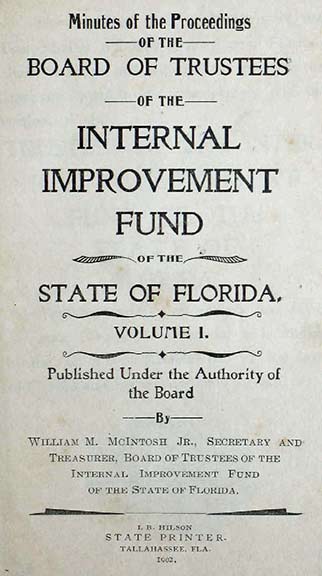 
Despite the town’s
excitement, two years passed, and no railroad
construction had begun. All hopes were not dimmed, though,
for in January 1855 the legislature enacted a comprehensive
program of subsidies for railroad construction.
Known as the Internal
Improvement Act of 1855, it granted railroad companies land
in exchange for new tracks. The state government supported
the railroads because better transportation would help
facilitate a stronger economy for Florida. With state
support, railroad developers began linking East and West
Florida.
It specifically provided
support for a line "from Amelia Island, on the Atlantic, to
the waters of Tampa bay, in South Florida, with an extension
to Cedar Key." The language clearly applied to Yulee’s road.
Within months, however,
suspicions were aroused that Yulee intended to build only
the more lucrative northern portion of his line. Under the
leadership of Hillsborough County politician and lawyer,
James T. Magbee, local citizens held out the possibility of
the county investing in the railroad while demanding that
the company "undertake to construct the road upon the whole
route according to the intent and meaning (of the law).”
Before their efforts could show results, though, the Third
Seminole or Billy Bowlegs War broke out in December 1855.
For a time, the railroad question took second place in the
minds of south Floridians.
Tampa and the
Coming of the Railroad, 1853-1884, by Canter Brown, Jr,
in The Sunland Tribune, Volume XVII November, 1991 Journal
of the Tampa Historical Society.
|
1855 - April 2:
Hillsborough Circuit Court session opens; Press mingles with
the lawyers
"...who know how to
enjoy themselves by indulging in witty satire, brilliant
repartee, brandy smashes, gin cocktails, pungent innuendoes, and
occasional dips into their client's pockets..."
|
|
The position
of Collector of Customs - Responding to the urgent need
for revenue following the American Revolutionary War, the
First United States Congress passed and President George
Washington signed the Tariff Act of July 4, 1789, which
authorized the collection of duties on imported goods. Four
weeks later, on July 31, the fifth act of Congress
established the United States Customs Service and its ports
of entry. As part of this new government agency, a new role
was created for government officials which was known as "Customs
Collector". In this role, one person would have
responsibility to supervise the collection of customs duties
(taxes) in a particular city or region. For over 100 years
after its birth, the U.S. Customs Service was the primary
source of funds for the entire government, and paid for the
country's early growth and infrastructure. Purchases include
the Louisiana and Oregon territories; Florida and Alaska;
funding the National Road and the Transcontinental Railroad;
building many of the nation's lighthouses; the U.S. Military
and Naval academies, and Washington, D.C. |
1855 - Magbee appointed as Collector and Inspector
By early 1855, Magbee had secured appointment to the lucrative
position of Deputy Collector of Customs and Inspector of the Port
of Tampa. He was around 35 years old.
With a salary of $1,095 per year, Magbee greatly supplemented his
income. The position was political and had been granted under
President Franklin Pierce's Democratic administration. Magbee's
immediate superior, Col. Hugh Archer, the Collector at St. Marks,
directed Magbee in March 1855 to “proceed to have the serpentine
course of the channel from Hillsborough River to the Bay, properly
defined by permanent stakes and the navigable courses of the bay
made clearly intelligible by the fixture of iron buoys."
|
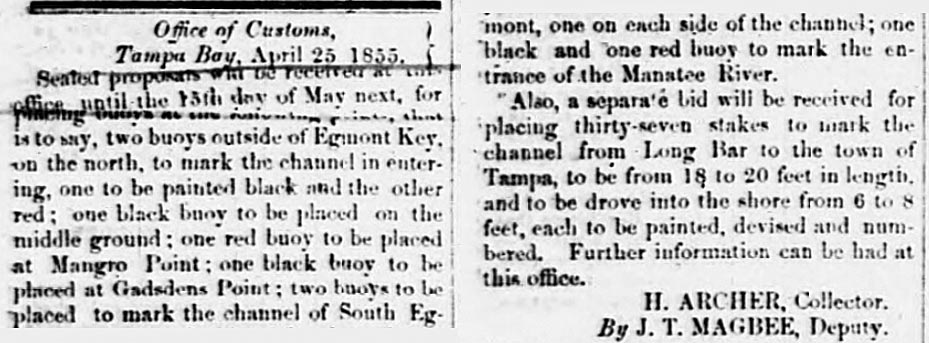
April 28, 1855 - Florida Peninsular
 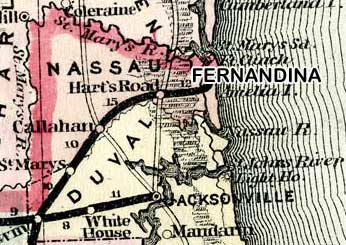
While the Seminole Indian war raged, construction work on the Florida Railroad was started in the
summer of 1855 at Fernandina, slowly progressing
southwest. |
| |
|
 By James
McKay, Jr. in "Reminiscences
- History of Tampa in the Olden Days" Dec. 18,
1923 By James
McKay, Jr. in "Reminiscences
- History of Tampa in the Olden Days" Dec. 18,
1923
In
1855 the
Morgan Steamship Line operated their steamers between
New Orleans and Havana, touching at all the Florida ports
semi-monthly, which also gave the town mails, freights and
passengers.
The
Leonardi brothers conceived the idea of erecting a hotel of
some 25 rooms on the lot occupied by the Scottish Rite
building, naming it the Florida House. This building my
father purchased from them and operated as a hotel until the
beginning of the war. It was full every winter, with
tourists who visited the town for their health.
|
1855 - September 15
Citizens vote to
abolish the town government and establish a city charter.
A majority vote to adopt a city charter, elect a mayor and
council, and have the corporation validated by the state
legislature.
The Mayors of Tampa 1856 - 2015, A project of the City
of Tampa, City of Tampa: Incorporation Timeline
The Florida
Peninsular mentioned the dissolution of the Town of Tampa in the
Sept. 20, 1855 issue of their newspaper, when they announced
the appointment of Simon Turman as President of the Board of
Health for the port of Tampa, and Darwin A. Branch, M.D., as the
appointed port inspector. |
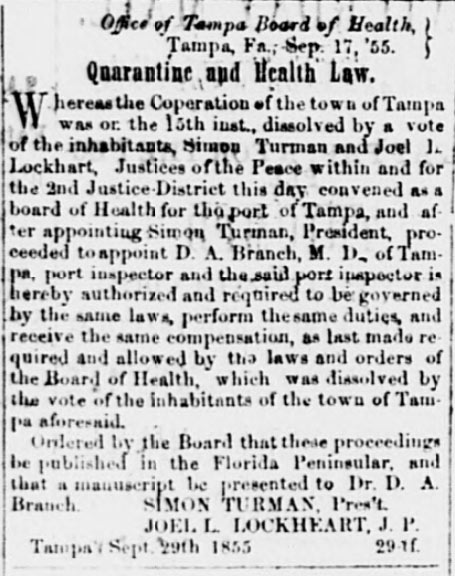 |
|
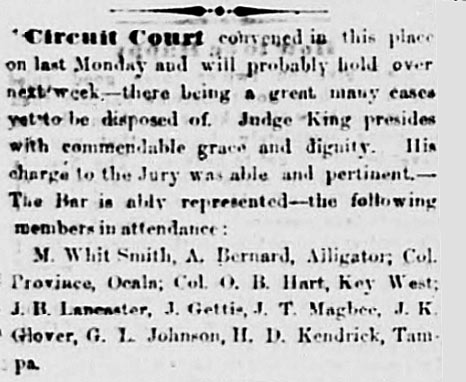 |
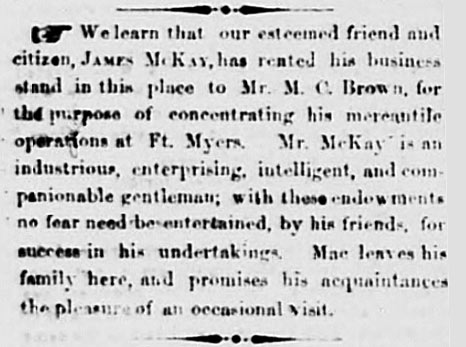 |
|
Sept. 20, 1855 -
Florida Peninsular
Circuit Court convened on Sept. 17. |
Sept. 20, 1855 -
Florida Peninsular
James McKay rents his Tampa store to M.C. Brown
and moves his business to Ft. Myers. |
1855 - December 15
Governor Broome signs a
Special Act of the Florida Legislature granting the
corporation a charter for the City of Tampa.
The Mayors of Tampa 1856 - 2015, A project of the City
of Tampa, City of Tampa: Incorporation Timeline
"This
incorporation was finally made effective by an act of the State
Legislature on December 15, 1855, which date is really the
birthday of the City of Tampa." (E. L. Robinson)
History
of Hillsborough County, Florida, Narrative and
Biographical, 1928 by Ernest L. Robinson,
Director of High Schools of Hillsborough County, Formerly
Principal of Hillsborough
County High School.
The Florida Peninsular - Dec. 29, 1855
"What a difference there may be
twix Twedledum and Twedledee."

|
1855 - "Pep Rally" at the Courthouse Concerning Indian Attack
Political bickering was put on the back-burner in December 1855,
when Tampa received news that
Lt. Hartsuff’s surveying party had been attacked in the Big
Cypress swamp. On December 23, "the court house bell was rung," to
announce a meeting of the citizens. It was called to order just
after 2 p.m. with a committee appointed to draft resolutions
expressing the feeling of the meeting. A traveler in Tampa at the
time wrote in his diary:
"When the committee retired, Col. Magbee, a lawyer of the town,
having his energies all stimulated by an over quantity of
whiskey, rose and addressed the meeting in the most patriotic
language he could use and with such zeal... caused everyone to
feel like fighting for the county, for their homes, the wives of
their houses, and their little children. He decanted at length
on the duties of man, on the horrors of savage warfare, and upon
the treacherous character of the Indian."
Simon Turman, Jr., editor of the local newspaper, the
Florida Peninsular, described the meeting as "very
enthusiastic," stating that "our fellow-townsman, Col. J. T.
Magbee, entertained the meeting very feelingly and eloquently. As
war sentiments dropped from the speaker’s lips, he was heartily
cheered by the assemblage."
[The Dec. 23rd issue is not filmed or online. The Dec. 29th
issue is filmed and online but is very light and has significant
damage. However, much of it is discernable and no mention is
made of this meeting. Issues for Jan. 1856 are also
missing.]
Volunteer militia companies were soon organized and the
Third Seminole War was underway. Magbee was 35.
|
 By James
McKay, Jr. in "Reminiscences
- History of Tampa in the Olden Days" Dec. 18,
1923 By James
McKay, Jr. in "Reminiscences
- History of Tampa in the Olden Days" Dec. 18,
1923
In the month of December,
1855, the Indians again went on the war path and the early
part of 1856 found a number of volunteer companies mustered
into the military service, and also more regular troops sent
to Fort Myers and Tampa. The government sent also two small
steamers from New Orleans named Grey Cloud and Texas Ranger,
to ply between Tampa and Fort Myers. My father also
purchased the schooner** Venice at Mystic, Conn., to freight
goods from New Orleans to Tampa. Things around Tampa began
to be active and quite a lot of money was placed in
circulation.
[**Gov.
records show the Venice was classified as a bark, not a
schooner.]
The Indians burning and massacring settlers near Tampa, the
citizens were organized and performed
picket duty on all the roads entering Tampa. Boys as
well as the men were used in the discharge of this duty. The
stage conveying the mails had a guard of several soldiers
mounted, to protect it. The court house bell was to sound
the alarm in case of a night attack and the citizens were
kept in a state of excitement all the time.
Considerable improvements were made on the reservation. New
barracks and officers’ quarters and store houses were
erected.
|
|
1856 - February 9
In the first election under
the city charter, Judge Joseph B. Lancaster was elected
mayor; Councilmen chosen were Micajah C. Brown, C.Q.
Crawford, R.J. Hagler, and Darwin A. Branch; William Ashley,
clerk; E.N. Lockhart, treasurer; and A. N. Pacetta, marshal.
The Mayors of Tampa 1856 - 2015, A project of the City
of Tampa, City of Tampa: Incorporation Timeline
Feb. 16, 1856 Florida Peninsular newspaper image below
from the
University of Florida digital Newspaper archives
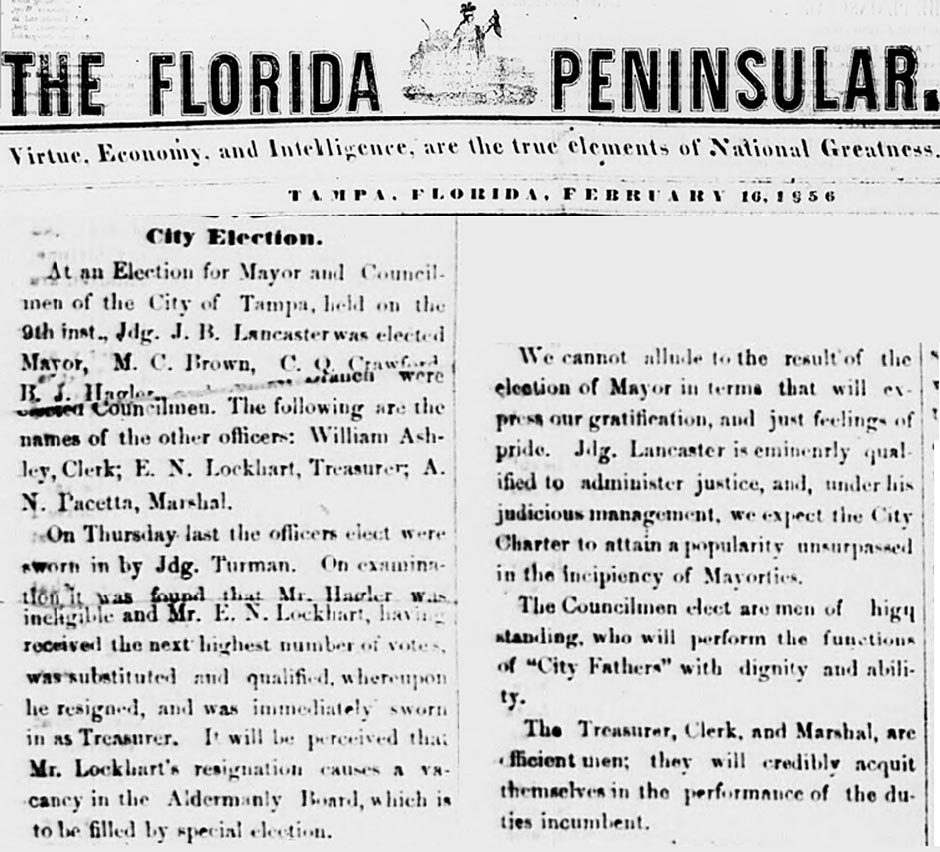 |
|
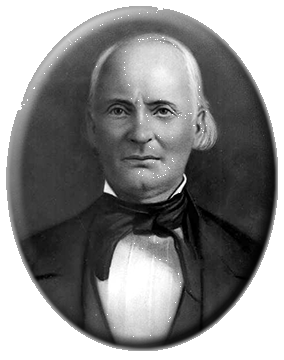 |
|
Supreme Court
Justice
Joseph B. Lancaster
Tallahassee, Florida
Photo from
Florida Memory, State Archives & Library of
Florida
|
Tampa’s 1st Mayor
JOSEPH
BRADFORD LANCASTER
Term: February 14, 1856 – November 25, 1856 (died in office)
Lawyer, Judge, State Representative, and Politician
Born: 1790, Kentucky
Died: November 25, 1856, Tampa, Florida
Joseph B.
Lancaster was a Florida Supreme Court judge (1851), speaker
of the Florida House (1843-1847), and mayor of Jacksonville,
Florida (1846-1847). Lancaster and his wife Annie moved to
Hillsborough County in 1853 with their daughters Laura
Louise and Eliza Caroline. Four years after statehood, on
January 18, 1849, Tampa’s population had increased to
officially incorporate as the “Village of Tampa.” Tampa was
reincorporated as a City on December 15, 1855, and Judge
Joseph B. Lancaster became the first mayor in 1856. He had
served successfully as judge of Alachua County, chief clerk
of the Territorial House of Representatives, a captain of
volunteers during the Second Seminole War (1835-1842), and a
customs collector.
Elected only
months after the beginning of the Third Seminole War (1855 –
1858), Lancaster’s administration dealt almost exclusively
with war-related issues. The constant threat of attack
produced an influx of settlers seeking refuge to a city that
had little means nor funds to feed, shelter, or care for
them. Lancaster sought assistance from the state, which
could provide only limited funds, and was in need of
recruits for the war effort. The City’s financial base
worsened when the Florida Railroad Company chose to extend
the line to Cedar Key instead of Tampa. Lancaster died while
in office, serving less than one year as Tampa’s first
mayor. |
|
The Mayors of Tampa 1856 - 2015, A project of the City
of Tampa, City of Tampa: Incorporation Timeline |
|
In 1856
the Ferris store was moved to the corner of Florida avenue
and Washington street where the building was for many years
after the Civil War an object of much interest because of a
hole which had been torn in its side by a large shell from
the Federal gunboats. The residence was converted by the
government into a hospital for troops and was used for that
purpose for many years.
Included among the other buildings
of that time was J. B. Allen's boarding house, about a
hundred yards east of the commissary, and the Kennedy store,
which stood on the lot next to the Palmer House. A few
hundred feet north of Kennedy's was the place of L. G. Cavacivich. Still further north, along the river, was a
large blockhouse built for a refuge in case of attack by the
Indians. Judge Simon Turman had just completed a double log
house on the ground where the customs house was afterwards
erected, hard by the present site of the Lafayette street
bridge. The blockhouse, Judge Steele's residence and William
Ashley's house were situated near the foot of Lafayette
meet, or between there and Jackson street. Further eastward
from the river stood the original court house, on the site
of the present court house. This building was a wooden
affair having two rooms only, and it served as a school
house also. |
|

History
of Hillsborough County, Florida, Narrative and
Biographical, 1928 by Ernest L. Robinson,
Director of High Schools of Hillsborough County, Formerly
Principal of Hillsborough
County High School.
|
| |
|
Tampa’s 2nd Mayor (Acting)
DARWIN AUSTEN BRANCH
[No photo]
Term: November
25, 1856 – December 6, 1856
Physician Born: November 28, 1832, Vermont
Died: August 16, 1858, Tampa, Florida
Born in
1832, Darwin Branch was trained as a physician. Politically
dynamic, Branch served from 1854 to 1855 as Secretary for
the Florida Know-Nothing Party (also known as the American
Party). The Know-Nothings in Florida and other southern
states were adamant that the national party support a strong
proslavery platform. This platform was adopted at the 1856
Presidential Convention that nominated former President
Millard Fillmore. After Fillmore’s defeat in the
presidential election the Know-Nothing Party’s deteriorated
as a national party.
Darwin
Branch remained politically active in Tampa and served as
President of Tampa’s City Council in 1856. In early
September of 1856, Mayor Lancaster became too ill to perform
his duties and as City Council President, Darwin Branch
became the acting mayor.
Although he
stepped in for Mayor Lancaster at this time, he was not
officially recognized as acting mayor until Joseph Lancaster
died on November 25, 1856. At 24 years old, he was
Tampa’s youngest mayor until James Lipscomb (who was
twenty-three years old when he took office) in August of
1873.
During his
short term, Branch essentially served as a caretaker until
December 6, 1856 when the City Council appointed Alfonso
DeLaunay as acting mayor to complete the remainder of
Lancaster’s term of office.
The Mayors of Tampa 1856 - 2015, A project of the City
of Tampa, City of Tampa: Incorporation Timeline
|
|
Tampa’s 3rd**
Mayor
J. ALFONSO DELAUNAY
(**Or 2nd Mayor, depending on how you consider Austen
Branch's "acting" term.)
Term: December 6, 1856 – February 9, 1857
Lawyer, Hotel Manager, Postmaster
Born: 1810, Virginia
Died: July 28, 1865, Tampa
J. Alfonso DeLaunay was the
son of a Revolutionary War patriot born in France. A
lawyer by profession, he came to Tampa around 1848 in search
of health and operated the Palmer House hotel, and became
active in local politics. DeLaunay was Tampa's first
postmaster and served from December 21, 1852 until April
1861.
Alfonso DeLaunay was
married twice; first to Miss St. Johns of Georgia, and
secondly to Victoria Montes de Oca, daughter of Juan Montes
de Oca, a Spanish gentleman of high family. Juan came
to Tampa from his native country around 1830. Being highly
educated and a master of languages, he acted as interpreter
for the Government at Fort Brooke and the surrounding area.
He was beloved alike by the Americans and the Indians. Juan
wooed and wed a beautiful Indian maiden, lovely of soul as
in person. This girl wife died early in life, leaving their
little daughter, Victoria motherless. Victoria was reared by
Robert and Nancy (Coller) Jackson (of what would later
become Hyde Park). Victoria grew to womanhood and married
Alfonzo Delauney, of French birth, a lawyer by profession,
who came here to be restored to health.
By Victoria, Alfonso had
four children: Pauline, Emma, Harry and Florida.
Victoria, was a woman of noble character and lofty mind, and
their children were very intelligent. Two of them, Pauline
and Emma, were among the most prominent teachers in the
public schools of the early days.
Previous to his marriage to
Victoria, Alfonso DeLaunay was married to a Miss St. John of
Georgia, who died in childbirth of their son, St. John.
The boy was brought up by his uncle, James DeLaunay, in
Columbus, Georgia, coming to live with his father and
step-mother Victoria by 1860.
On December 6, 1856,
DeLaunay was appointed mayor by the council to complete the
remainder of Joseph B. Lancaster's term of office (Tampa's
first mayor). DeLaunay replaced Acting Mayor, Darwin Austin
Branch who had served eleven days immediately after
Lancaster's death, before resigning as mayor. DeLaunay
served as mayor for slightly over two months to complete
Lancaster's term, during which time he attempted to manage
the influx of local settlers coming into Tampa who were
trying to escape attacks by the Seminoles during the Third
Seminole War (1855-1858) and also dealt with the State
Legislature's demand that Tampa supply more recruits for the
war. Concurrently, DeLaunay guided the transition of the
city's administration to conform to the procedures
established by the Legislative Act of December 15, 1855
which provided 160 acres of land to homesteaders.
After losing to Darwin
Branch in the next election, DeLaunay returned to his
position as Postmaster of Tampa. In 1858, he also became
editor for the local newspaper, Florida Peninsular but
resigned in early 1860 to found the Sunny South newspaper
with his brother. The first issue of this newspaper appeared
on January 29, 1861.
A strong supporter of
secession, DeLaunay served as a Hillsborough County delegate
to the Florida Convention which voted overwhelmingly for
secession. He ceased publication of his newspaper when the
Civil War began and hid the presses and other related
equipment in the interior of Florida to prevent their
confiscation by Union troops. In April 1861, the Confederate
government appointed DeLaunay Confederate States postmaster
and deputy inspector of customs for the Port of Tampa,
serving in both capacities throughout the Civil War.
He later served as a private in the Confederate Army and was
mustered out on April 26, 1865 and returned to Tampa, where
he died on July 28, 1865
Tampa
historian Tony Pizzo, in his book Tampa Town 1824-1886:
The Cracker Village With a Latin Accent (Tampa, 1968),
states that Alfonso DeLauney, Tampa’s second mayor, brewed
the first beer in the area -- Spruce Beer "a delicious and
healthful drink." p. 76. |
|
The Mayors of Tampa 1856 - 2015, A project of the City
of Tampa, City of Tampa: Incorporation Timeline
**The information above about Juan Montes de Oca, Alfonso's
family, marriages, and first son comes from "The
Blue Book and History of Pioneers, Tampa, Fla, by Pauline
Brown-Hazen, 1914. She gives the details of St. John's
upbringing by his uncle.
In Grismers's biographies section of his book
Tampa, A History of the City and the Tampa Bay Region of
Florida, by Karl H. Grismer, edited by D. B. McKay, 1950. he
also mentions St. John of Alfonso's first wife, in his
biographies section, but in the narrative history of
Tampa, Grismer says St. John was Alfonso's brother: "After
leaving the PENINSULAR, DeLaunay immediately started to get
backing for a new paper. O. C. Drew and St. John DeLaunay,
brother of Alfonso, advanced money and became publishers. The
first issue of the paper, called the SUNNY SOUTH, appeared
January 29, 1861."
Alfonso appears alone on Tampa's 1850 census in Tampa.

On his 1860 census he's married to Victoria. He has a
19-year-old [son] named John, born in Georgia, even though
Victoria and the rest of the children were born and raised in
Florida. This would support the story by Pauline
Brown-Hazen that "St." John was his son from a prior marriage
before coming to Florida.

|
 In
1857 the Florida Congress authorized land grants to
subsidize construction of railroads, and it was believed
that the action, as one newspaper put it, "doubtless will
operate as a stimulus to effect an immediate practical
commencement of that portion of the road (to Tampa.)"
Everyone expected that from Gainesville the road would
head south to Tampa. By April, 1858, seventy miles had
been completed from Fernandina and thirty additional miles
to Gainesville had been graded. In
1857 the Florida Congress authorized land grants to
subsidize construction of railroads, and it was believed
that the action, as one newspaper put it, "doubtless will
operate as a stimulus to effect an immediate practical
commencement of that portion of the road (to Tampa.)"
Everyone expected that from Gainesville the road would
head south to Tampa. By April, 1858, seventy miles had
been completed from Fernandina and thirty additional miles
to Gainesville had been graded.
Tampa, A History of the City and the Tampa Bay Region of
Florida, by Karl H. Grismer, editor D. B. McKay, 1950.
Tampa and the
Coming of the Railroad, 1853-1884, by Canter Brown, Jr,
in The Sunland Tribune, Volume XVII November, 1991 Journal
of the Tampa Historical Society. |
| |
By James
McKay, Jr. in "Reminiscences
- History of Tampa in the Olden Days" Dec. 18,
1923
 In
1857 during the summer, Tampa was visited by an epidemic of
yellow fever, but it being very late in the summer and cold
weather coming on, there were not many cases and but few
deaths, but in 1858 it started early in the season and
spread rapidly over the town. All that could move to the
country did so but there were many deaths, some of our best
citizens passing away. I was stricken with the disease and
only for my mother and grandmother, being most excellent
nurses, they having passed through an epidemic in Mobile
sometime previous, I would not be here today writing this
article. In
1857 during the summer, Tampa was visited by an epidemic of
yellow fever, but it being very late in the summer and cold
weather coming on, there were not many cases and but few
deaths, but in 1858 it started early in the season and
spread rapidly over the town. All that could move to the
country did so but there were many deaths, some of our best
citizens passing away. I was stricken with the disease and
only for my mother and grandmother, being most excellent
nurses, they having passed through an epidemic in Mobile
sometime previous, I would not be here today writing this
article.
There were many theories advanced from what source came the
disease. Some stated that it was introduced from New Orleans
by schooner. Others claimed it originated from filth in the
town. Any way there was a campaign of cleanliness and
sanitary measures were adopted in the winter of ’58 and
early ’59. These measures were rigidly enforced and before
the summer of ’59 came in, the town was placed in fine
shape. But it gave the town a setback from which it did not
recover for two years.
|
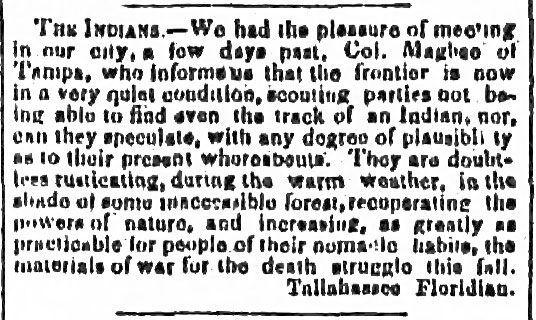
Savannah Daily Republican, Jul. 30, 1857 -- page 2
1858 - Tampa's Two-Year Flirtation With Violence and Tragedy - The
Regulators
(Read more about it at
Politics, Greed, Regulator Violence, and Race in Tampa, 1858-1859
By Canter Brown, Jr.)
Magbee continued a leadership role in local Democratic politics in
1856 and 1857. His law practice continued to prosper and he took
on a law partner, John L. Tatum
(possibly his brother-in-law.)
But the following year Magbee was to experience political defeat
and humiliation.
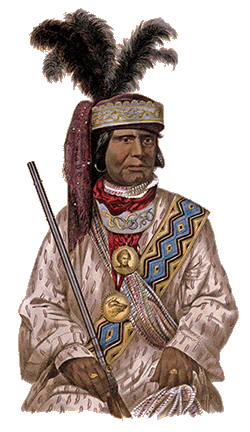 |
|
Billy
Bowlegs, or Billy Bolek (Holata Micco, Halpatter-Micco,
Halbutta Micco, and Halpuda Mikko in Seminole, meaning
"Alligator Chief")
Image from Wikipedia
|
1858 was one of the strangest years in Tampa’s history. After over
three years of fighting, the Indian war was winding down in early
1858. In March, Billy Bowlegs agreed to leave Florida and many of
the volunteer companies which had fought the Seminoles were
mustered out and discharged at Fort Brooke.
|
 The government finding it difficult to drive the Indians out
of the country or capture them, concluded to enter into
negotiations with them and with this plan in view sent Major
Rector, with 50 civilized Indians from Arkansas, into the
Everglades some distance below Fort Myers, in [1858]. These
Indians scouted around until they got in conference with
Billy Bowlegs and Sam Jones, the Seminole Chiefs and at a
meeting induced Bowlegs to leave them and emigrate to
Arkansas with his band. They were concentrated on Egmont Key
and when all reached that point were embarked on the
Steamship [Grey
Cloud], for New Orleans. Sam Jones declined to leave the
state, but this ended the Seminole war. The government finding it difficult to drive the Indians out
of the country or capture them, concluded to enter into
negotiations with them and with this plan in view sent Major
Rector, with 50 civilized Indians from Arkansas, into the
Everglades some distance below Fort Myers, in [1858]. These
Indians scouted around until they got in conference with
Billy Bowlegs and Sam Jones, the Seminole Chiefs and at a
meeting induced Bowlegs to leave them and emigrate to
Arkansas with his band. They were concentrated on Egmont Key
and when all reached that point were embarked on the
Steamship [Grey
Cloud], for New Orleans. Sam Jones declined to leave the
state, but this ended the Seminole war.
by James McKay,
Jr. in "Reminiscences
- History of Tampa in the Olden Days" Dec. 18,
1923
|
One soldier, writing years later, said:
"When we went to Tampa to be mustered out we found ten other
companies there for the same purpose. The paymaster was off
somewhere and there was unusual growling because he didn’t show
up. He got delayed somewhere and a great many of the men had to
sell their discharge certificates to get funds to reach home.
These discharge papers** had a transfer blank attached and could
be readily made payable to anyone. The merchants of Tampa had a
regular picnic. The soldiers were at their mercy and the
discharges were bartered at big discounts. Many, however,
concluded to wait until the paymaster came and among them was
myself.
The worst element of these volunteers took the town by storm and
made a veritable hell of it. There was no law and no order. They
traveled in marauding bands at night and didn’t even stop at
highway robbery and murder. After awhile they got to be so
desperate that it wasn’t safe for a lady to be on the streets
either day or night.
It was thought that the arrival of the paymaster and the paying
off of those to whom anything was due would rid the town, but it
did not. In fact, lawlessness filled the very air. The citizens,
coming to the conclusion that something must be done, organized
themselves into a vigilance committee resolved to do desperate
things if necessary."
**When soldiers enlisted in military service, they were promised a
pension, monetary payment or free land, or both, upon completion
of their service. Their discharge certificate stated the
amounts and could be sold at whatever price they wished by
completing the transfer blank on their discharge papers.
See Military Records at National Archives and
State Archives of Florida.
Army and Navy Pension
Laws, and Bounty Land Laws of the United States: From 1776 to 1854
Inclusive
Active in the vigilante or regulator organization were some of
Tampa’s leading citizens: Henry Crane, who had served in the
Indian War and was then acting editor of the Florida Peninsular,
as well as Mayor Madison Post, Dr. Franklin Branch and a young
future lawyer, John A. Henderson. The regulators were active "from
Tampa to Fort Meade and to Brooksville in Hernando County.”
By early April of 1858, the Tampa contingent of regulators was
making itself known. Whipping and banishment were utilized and
eventually, lynching. The situation was so bad that the County
Commission decided on April 6 not to make "any arrangements for
public schools this year" because "of the unsettled condition of
our county.”
1858 - Magbee does battle with the regulators
Magbee now entered the
fray against the regulators. The hard drinking, outspoken but
successful lawyer and Federal office holder was a formidable
target for the ascendant regulators but he began to feel their
wrath in April 1858. Almost from the time of his arrival at Tampa,
twelve years earlier, Magbee had been the leading political figure
in Hillsborough County. With the disintegration of the American or
Know Nothing Party in 1857, many of its members shifted to the
Democratic Party. With no organized opposition the Democrats were
factionalized and divided.
1858 - Magbee speaks out against the regulators
The campaign against Magbee had begun. On May 11, 1858, the City
Council denied his application for a "remittance of a portion of
the City Tax upon his property." Magbee began to speak out
against the Regulators. He blamed "the violent opposition
against him... to his steady condemnation of the acts of a secret
sworn band of men who had recently taken the law into their own
hands.”
|
 Mustering out of the
[Seminole War]
volunteers threw a lot of disreputable men on the town and they became so bad
that the citizens organized themselves as a band of regulators, whipping some
and driving them out of town and in one or two instances hung some. This broke
up lawlessness and the town was restored to quiet and order. Mustering out of the
[Seminole War]
volunteers threw a lot of disreputable men on the town and they became so bad
that the citizens organized themselves as a band of regulators, whipping some
and driving them out of town and in one or two instances hung some. This broke
up lawlessness and the town was restored to quiet and order.
After the excitement of
mustering out of volunteers was over and the unruly element driven out of town,
business began to improve and all citizens co-operated in making improvements to
their property and others locating in the town, adding to the population, Tampa
put on city airs. There was not an over plus of skilled mechanics "out
sufficient to carry on all building and construction work. These mechanics were
experts in their lines of work. None better could be had in the state. Houses
were built to last a lifetime.
by James McKay, Jr. in "Reminiscences
- History of Tampa in the Olden Days" Dec. 18,
1923
|
1858 - Magbee Not Present at Town Hall Meeting
Due
to Altercation
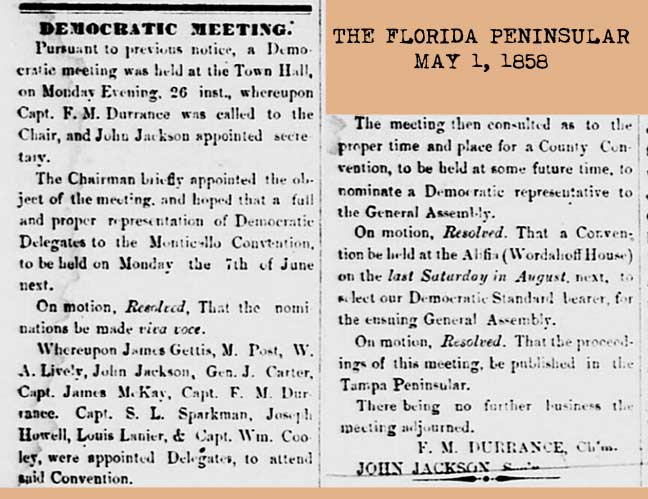 There
was a political meeting held at the Tampa Town Hall on the evening
of April 26, for the purpose of appointing delegates to the
Democratic State Convention. Mayor, regulator and former
Know-Nothing Madison Post was chosen along with Jesse Carter,
James Gettis, James McKay and others. Magbee was not chosen and
apparently was not present. There
was a political meeting held at the Tampa Town Hall on the evening
of April 26, for the purpose of appointing delegates to the
Democratic State Convention. Mayor, regulator and former
Know-Nothing Madison Post was chosen along with Jesse Carter,
James Gettis, James McKay and others. Magbee was not chosen and
apparently was not present.
On that evening, Magbee became intoxicated and was involved in an
altercation with a young man named James Hays.
According to Hays:
Magbee, being stupidly drunk, became incensed at my declining
the honor--honor, forsooth!!** --of walking him to his
residence. After many threats of personal violence,
holding a cane over my head in a menacing manner, accompanied by
the vilest epithets, he struck at me and brandished his knife,
then, and not till then, was he assaulted.
**for·sooth
- adverb archaic humorous:
indeed (often used ironically or to express surprise or
indignation). "forsooth, there is no one I trust more"
Magbee claimed that "during some business transaction" Hays had
been "insulted without just cause." Later that evening, Magbee,
reportedly "came to the store of Capt. James McKay with the avowed
intention of taking [Hayes'] life.” Magbee unsuccessfully
attempted to enter the store but was refused by the City Patrol
and sent away. On the following morning, on his way to a steamer
at the port, Magbee was assaulted by Hayes.
But it was Magbee, not Hayes, who was brought before the Mayor's
Court. He pleaded "not guilty," and upon the hearing of the
evidence, was adjudged guilty and fined $25 and costs. He was also
ordered to be placed in prison under the custody of the Marshal
until the fine was paid.
[VanLandingham's
account of what happened next separates this incident from a "June
15" incident where Magbee was fined and jailed for "Violating the
5th Ordinance." This apparently is not the situation, as the
rebuttal by Crane in the Peninsular and a spokesperson for Mayor
Duff Post shows it was all related to the same incident.
Magbee pled guilty, and said "Fine me, fine me!" according
to "Fair play" below.]
|
To the Editor
Peninsular:
As the Mayor
of the City of Tampa is absent, I beg leave to make a few
remarks, in relation to a statement made by James T.
Magbee which, unless properly explained, is calculated to
convey a false impression, with regard to the "facts of
the case," manifestly to the injury of the reputation of
the absent Mayor, and to the credit of the Citizens of
Tampa. He says: "we were arrested by the
Marshal, and carried before the Mayor, who, without
hearing any evidence, that we are apprised of, ordered us
to jail." The above is James T. Magbee's statement.
I will now give you the Mayor's version, and pledge
myself, that he will verify it, nearly word for word, on
his return to Tampa.
"When Col.
Magbee was brought before me, scarcely waiting being
interrogated he said, 'I don't want any witnesses, I am
guilty--I am guilty--fine me--fine me!' In addition to Mr.
Magbee's confession of guilt, the Mayor told me, he was an
eye witness himself to the commencement of Magbee's
disgraceful row [fight] at James McKay's store. The Mayor
has given a certificate now in the possession of the
Collector at St. Marks, that Mr. Magbee was sent to jail
for an infraction of the 5th Ordinance, of the city of
Tampa. You will oblige several other Citizens
besides myself, by publishing the aforesaid Ordinance.
Ordinance
No. 5
Any person or persons who shall commit a riot, or an
affray, or who shall make loud noise, or vociferation,
or shall do malicious injury to private or public
property, or shall do any other act or acts having
tendency to disturb the peace of the inhabitants within
the incorporation, shall be deemed guilty of disorderly
conduct, and on conviction thereof before the Mayor
shall suffer punishment at his discretion."
My reason for
this communication is to defend M. Post as Mayor of the
City of Tampa from the charge of having fined and
imprisoned one of his fellow citizens without any
testimony to convict him of the infraction of any
Ordinance, which would subject him to the penalties
thereunto appended.
[Signed] FAIR PLAY
|
|
 |
1858 - The Campaign to Remove Magbee
Henry Crane, Madison Post and their friends
[James McKay**]
wanted Magbee removed from his position as Deputy Collector at the
port. Magbee's frequent drunken behavior and his recent conviction
in the Mayor's Court were the basis of their charges.
**It has been asserted that James McKay and his cattlemen
associates were behind the effort to oust Magbee from his position
as Collector and Inspector at the port.
|
Henry A. Crane had a modest but successful military
career in the 2nd and 3rd Seminole Wars. He was a man
of moderate means, but his literary abilities provided him
with the opportunity to serve in many minor political
positions.
Crane was born in New Jersey in 1811 and worked as a clerk
in Washington DC. He came to Florida during the 2nd
Seminole War where he engaged for the first time in fighting
for his country. After his enlistment expired, he
settled in St. Augustine where he met and married Sophia
Allen. Their only son, Henry Lafayette Crane, was born
in 1838.
In the 1840s he
staked out a claim in Orange County, near Fort Mellon, now
part of Sanford. He was a Clerk of the Circuit Court
and in 1844, Gov. Moseley nominated him for judge of probate
at Orange Co. In 1852 he brought his family to Tampa,
gave up farming, and worked full time as the printer of the
Tampa Herald newspaper.
He was intelligent and inquisitive enough to profit from his
readings about new inventions elsewhere in the world.
He became interested in photography during its early
development, and 6 years after ambrotype photography was
introduced, he listed his occupation as an ambrotype artist.
Read more about Henry A. Crane further
down in this feature.
Blockaders, Refugees, & Contrabands - Civil War on Florida's
Gulf Coast, 1861-1865 by George E. Buker, "Henry Crane -
Unionist" |
Petitions were drawn up by Magbee and by his opponents and
sent to Sen. Mallory. Former State Senator Hamlin V. Snell
and Postmaster Alfonso DeLaunay were put forward as
replacements for Magbee.
The legal system was being attacked in the Peninsular and lawyers
like Magbee were charged with misleading juries.
On June 5, 1858, the embattled Magbee set forth his case in a
four-page letter to the Peninsular. He denied that he had
"neglected any of our official or professional business on account
of drink" and also attacked the Regulators.
(Unfortunately, the issues of the Peninsular online from May 1,
1858 to June 12, 1858 are missing.)
The following week (June 12) the Peninsular responded with this.
Included in the response are details of Magbee's "violation of the
5th ordinance" stemming from the April altercation with Hays:
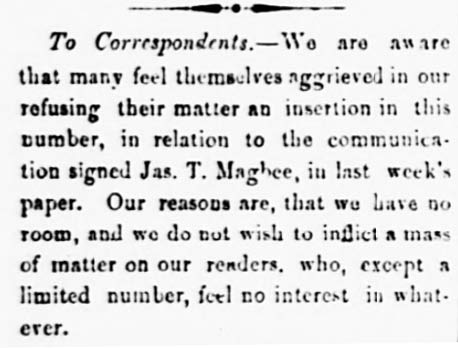

|
|
Parts of the rest of
the Peninsular's response:
-
Mr. Magbee may not be
apprised of the fact, but over and over again he has
apprised the community of this fact by his drunken brawls
in the streets.
-
With a modesty that ill
becomes the
poltroon, Magbee inquires...
-
He is guilty of deliberate
falsehood, for it is fact well know to our citizens..
-
...is worthy of the man who
quotes from Virgil--an author he cannot read in the
original, nor understand by means of his translation.
-
He is undeniably a
blackguard. Yet his chances of success at the outset
of his career in this County, were great and manifold.
Our delegation in Congress took him by the hand, bestowing
upon him an office, the duties of which he did not
understand, and would not perform. Fortune favored
him, a frontier education and society--expanded and
polished his natural love of liquor, and improved his
manner into the insinuating and the irresistible address
of the drunken loafer. He early became popular with
that class, and might have erected a laudable reputation
in their midst, had he possessed ordinary meanness.
His moral stamen was weak, and instead of seeking the
comparatively bracing and healthy society of dock loafers,
he preferred the impurer airs, and gave way readily to
lower and more...[illegible] of his descent, after many
warnings.
-
His tendency has always been
downwards. He has been cautioned, punished and
forgiven.
-
Competency, love,
friendship, reputation all were neglected and
forfeited--abandoned under the detestable passion for
drink and ignoble company.
-
...He became a vagabond, the
slanderer of honest men--the delirious drunken vagabond of
the lowest shops--hated by some--despised by others, and
avoided by all respectable men.
-
He has attained the lowest
abyss of moral imbecility, and disrepute...
-
Aside from his gross
intemperance, his character is jealous, irritable and weak
altogether, wanting in honesty of purpose in all that is
frank, manly and generous. Add this to his moral
depravity and you have a picture of the man--one that
every resident of this City will recognize and confirm.
-
His address is a
disconnected mass of falsehood--known to be such by our
community--intended to be used abroad and among strangers.
-
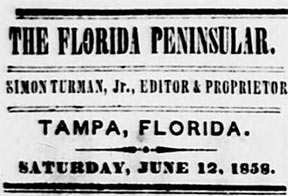 Before
our next issue he will be supplanted in office by an
honorable and high-minded gentleman. This will give
an impetus to the cause of Democracy that cannot be
shaken. In fact, our party will hang out her ensign,
inscribed, "Redeemed, regenerated and disenthralled." Before
our next issue he will be supplanted in office by an
honorable and high-minded gentleman. This will give
an impetus to the cause of Democracy that cannot be
shaken. In fact, our party will hang out her ensign,
inscribed, "Redeemed, regenerated and disenthralled."
-
"We are done with Col. Magbee, -- so has the party!!"
See the
entire response
VanLandingham refers to it as Henry Crane's "diatribe."]
|
|
In the June 12, 1858 issue
Crane published an exposé of a supposed "Mystic Circle of
Alchemy," which he claimed was now in Hillsborough County.
This was part of the campaign against Magbee.
Crane, in the June 26, 1858 issue, (seen below) is
quoted as referring to Magbee as a T-R-I-U-Q-S, or "squirt"
spelled backwards.
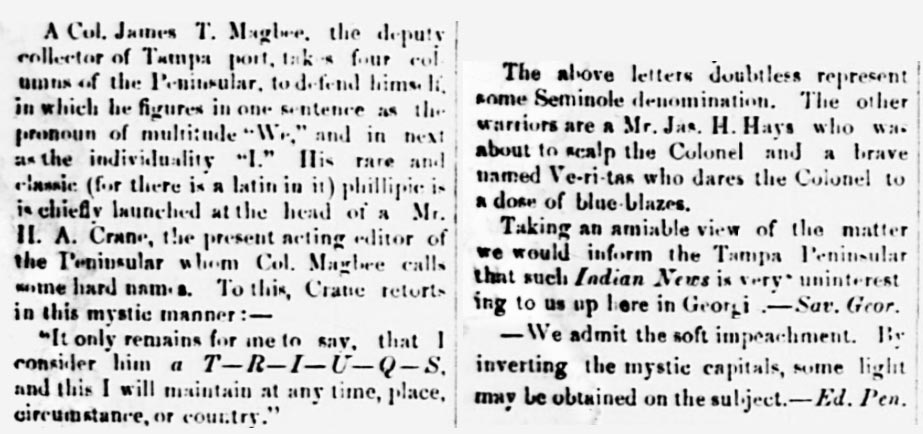
Crane criticizes Magbee's English grammar and his Latin,
then hints at how to decipher TRIUQS. He also makes
reference to James Hays, with whom Magbee had his last
altercation, and Veritas, Latin for "Truth."
See the entire
June 12, 1858 Crane exposé on the Mystic Society in
Hillsborough County.
It starts at the top of column 2, on the front page. |
| |
 |
| |
A posthumous portrait of
Hamlin Valentine Snell by artist Ruth Finney Horney. Snell
was one of the early settlers of the Village of Manatee. As
president of the Florida Senate, he introduced the bill that
created Manatee County in 1854. He was Tampa's
8th mayor, though only from Feb. 2 to May 1861. On hearing
the news that Confederate guns had fired on Fort Sumter,
Mayor Snell proclaimed a day of celebration. On April 21,
1861, the 20th Florida Regiment took over the abandoned Fort
Brooke and declared Tampa under martial law. About three
weeks later, Snell resigned as Mayor and hurriedly left
Tampa after selling his properties. Photo from the
Manatee Co. Public Library System. Info from the same
and
City of Tampa.
|
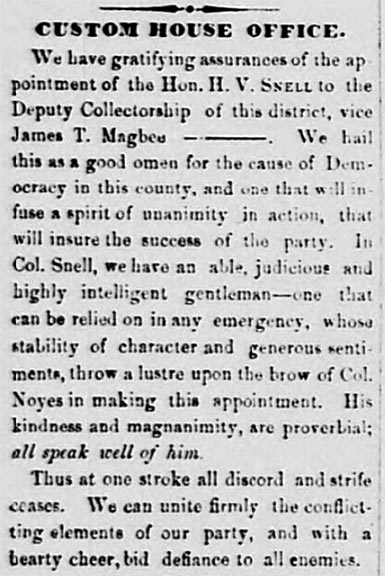 On
June 19, 1858, the Peninsular announced the appointment of Hamlin
V. Snell as Deputy Collector at the port. On
June 19, 1858, the Peninsular announced the appointment of Hamlin
V. Snell as Deputy Collector at the port.
Magbee retired to nurse his wounds and prepared to fight another
day. He was around 38 years old.
James McKay's Motive to Remove Magbee
The cattle trade to Cuba
was being initiated and McKay intended to bring back certain items
such as cigars, rum and sugar. In order for McKay and the other
cattlemen to avoid the national tariff laws, Magbee would have to
be removed and replaced by a “more amenable collector."
As McKay's prosperity boomed with the cattle business, he took an
increasingly strong role in Tampa business and political affairs.
In
both he associated closely with a group of men that included,
among others, William Brinton Hooker, merchant Madison Post, and
lawyers Joseph M. Taylor and James Gettis.
Politically, they battled the regular Hillsborough County
Democratic party which loosely was centered upon lawyer and
former legislator James T. Magbee. McKay’s faction in
1858 ousted Magbee from his important federal position as
collector of the port of Tampa, and the following year McKay
was elected to a one year term as mayor.
By James
McKay, Jr. in "Reminiscences
- History of Tampa in the Olden Days" Dec. 18,
1923
 In 1858 my father came
to the conclusion the country would be benefited from the exportation of cattle
to Havana, Cuba, so he purchased the brig Huntress, fitted her up with cattle
pens and contracted with the Morgan Steamship Line to load their decks twice
each month, paying $1,500 per trip, whether he loaded the decks or not. He
constructed a small dock at Ballast Point and lightered the cattle out of these
vessels. Through this source quite a sum of money was placed in circulation in
south Florida. In fact after the military left this part of the country the
shipment of cattle was the only source of obtaining money. There was only a
small amount of sea island cotton made in this section and some potatoes, sugar
and hides. These were brought to town and sold in trade, for other goods. In 1858 my father came
to the conclusion the country would be benefited from the exportation of cattle
to Havana, Cuba, so he purchased the brig Huntress, fitted her up with cattle
pens and contracted with the Morgan Steamship Line to load their decks twice
each month, paying $1,500 per trip, whether he loaded the decks or not. He
constructed a small dock at Ballast Point and lightered the cattle out of these
vessels. Through this source quite a sum of money was placed in circulation in
south Florida. In fact after the military left this part of the country the
shipment of cattle was the only source of obtaining money. There was only a
small amount of sea island cotton made in this section and some potatoes, sugar
and hides. These were brought to town and sold in trade, for other goods.
|
 Faced with what they
considered to be Sen. David Yulee's treachery, the
Tampa area residents
decided to build their own railroad line. In the
summer of 1858 these men-including future governors Ossian
Hart and Henry Mitchell-organized the Florida Peninsula
Railroad. Bragged Tampa's newspaper, "This movement is the
very thing we needed, and we heartily rejoice at it. A yellow fever epidemic devastated the
community, however, and no progress was made. Another
effort was launched in 1859 under the chairmanship of
Capt. James McKay.17 Before financing could be
secured, the Civil War extinguished any chance of
construction. Faced with what they
considered to be Sen. David Yulee's treachery, the
Tampa area residents
decided to build their own railroad line. In the
summer of 1858 these men-including future governors Ossian
Hart and Henry Mitchell-organized the Florida Peninsula
Railroad. Bragged Tampa's newspaper, "This movement is the
very thing we needed, and we heartily rejoice at it. A yellow fever epidemic devastated the
community, however, and no progress was made. Another
effort was launched in 1859 under the chairmanship of
Capt. James McKay.17 Before financing could be
secured, the Civil War extinguished any chance of
construction.
Tampa and the
Coming of the Railroad, 1853-1884, by Canter Brown, Jr,
in The Sunland Tribune, Volume XVII November, 1991 Journal
of the Tampa Historical Society.

The Floridian & Journal, July 3, 1858
|
| |
|
By James
McKay, Jr. in "Reminiscences
- History of Tampa in the Olden Days" Dec. 18,
1923
 During the winter of
1859 the young men of the town organized the Tampa Cornet band, employing J. A.
Butterfield as leader. This band was composed of some 14 members and when, after
practicing a few weeks, it ventured in giving promenade concerts and dances,
charging a nominal sum for admittance, it gave the young people many evenings of
pleasure and enjoyment. There are only two of this band now living. Henry Crane
and myself. During the winter of
1859 the young men of the town organized the Tampa Cornet band, employing J. A.
Butterfield as leader. This band was composed of some 14 members and when, after
practicing a few weeks, it ventured in giving promenade concerts and dances,
charging a nominal sum for admittance, it gave the young people many evenings of
pleasure and enjoyment. There are only two of this band now living. Henry Crane
and myself.
[Butterfield
was listed in McKay Sr's. household on the 1860 Census.]
|
|
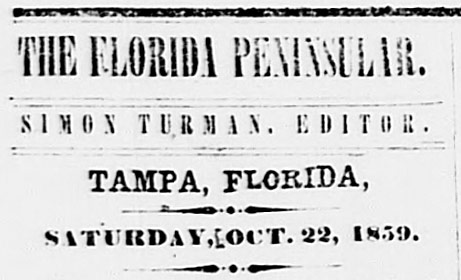 |
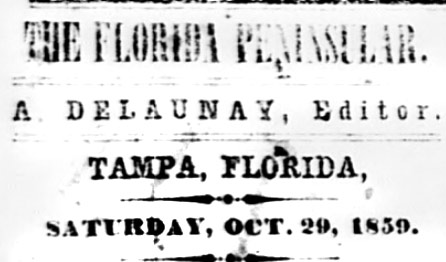 |
|
Former mayor and former postmaster Alfonso DeLaunay joins
Turman as editor of the Peninsular in late Oct. of 1859.
In a long article on
page 2, titled "A Parting Word", Turman describes the
duties of an editor as "irksome." |
 In November, 1858,
reports were received and rumors circulated that Sen. Yulee
had no intention of building to Tampa-he was going
to extend the road to Cedar Keys, carrying it through
a section where he had vast real estate holdings.
Verification of the reports soon were received and
Tampa was stunned. The people were so angry that an
effigy of Yulee was hastily made and hung from an oak
tree in the courthouse grounds. And then it was set
afire. But the burning of the effigy did not bring
the railroad-and as a result of the change in Yulee's
plan, Tampa was destined to suffer for many years,
its growth being greatly hindered. In November, 1858,
reports were received and rumors circulated that Sen. Yulee
had no intention of building to Tampa-he was going
to extend the road to Cedar Keys, carrying it through
a section where he had vast real estate holdings.
Verification of the reports soon were received and
Tampa was stunned. The people were so angry that an
effigy of Yulee was hastily made and hung from an oak
tree in the courthouse grounds. And then it was set
afire. But the burning of the effigy did not bring
the railroad-and as a result of the change in Yulee's
plan, Tampa was destined to suffer for many years,
its growth being greatly hindered. |
| |
|
1859-1860 James
McKay, Sr. becomes Tampa's 6th mayor, the Scottish Chief
steamer makes its debut
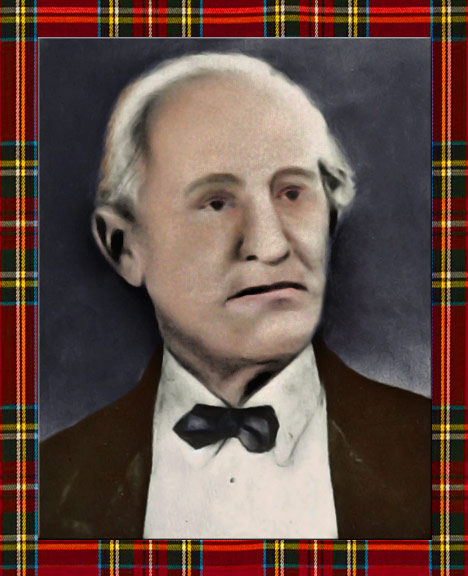 While
deeply involved in his varied enterprises, in 1859, Captain
McKay, Sr. was elected Mayor of Tampa. He served as Tampa's
6th mayor, from February 12, 1859 to Feb. 1, 1860, the
only non-U.S. citizen to ever do so. While
deeply involved in his varied enterprises, in 1859, Captain
McKay, Sr. was elected Mayor of Tampa. He served as Tampa's
6th mayor, from February 12, 1859 to Feb. 1, 1860, the
only non-U.S. citizen to ever do so.
Read more about James
McKay on this separate page at TampaPix.
The Scottish Chief, the celebrated side wheeler steamship in
Tampa's history, arrived in the Hillsborough River for the
first time on July 26, 1859; her owner was William G.
Ferris. "Her arrival was announced by the booming of
cannon, the flourish of trumpets, and the hearty huzzas of
the entire population. The Tampa cornet band boarded her,
with a few citizens and she steamed up the river a short
distance and returned to the delight and entire satisfaction
of all concerned."
[The above information about the debut of the Scottish Chief
is from Tony Pizzo's "James McKay The Scottish Chief"
article. He does not cite the source but it sounds
like a newspaper article. The July 30, 1859 Peninsular makes
no mention of this event, neither does the Aug. 6 issue or
the July 16 issue. or the July 9 issue.]
In 1860, as mayor,
McKay sought to purchase the entire Fort Brooke military
property for the city since the Fort was no longer needed
for military purposes. Unsuccessful in purchasing it, he was
able to lease it from the government. The City held
the property until the Civil War broke out and the
Confederate Army occupied the garrison.
The flag of the
Confederacy was then unfurled by the citizens with
appropriate ceremonies. Captain McKay raised his flag in
front of his store, followed by Charlie Brown's clothing
establishment. Mr. Ferris and son, not to be outdone,
hoisted the U.S. flag in front of their store--upside down.
The Civil War
brought an end to McKay's lucrative cattle trade with
Havana. A few weeks before the war, McKay had purchased
10,000 head of cattle for transport to Cuba, but most of
these were driven to Tennessee for the Confederate Army. |
THE SUNLAND TRIBUNE, Journal of the TAMPA HISTORICAL
SOCIETY, Volume VIII Number 1 November, 1982 - JAMES McKAY,
I, THE SCOTTISH CHIEF OF TAMPA BAY By Tony Pizzo |
|
By James
McKay, Jr. in "Reminiscences
- History of Tampa in the Olden Days" Dec. 18,
1923
 In January, 1860, there
was constructed a pasture fence, beginning on Hillsborough Bay just near the
present site of the Spanish sanitarium, extending across the peninsula about two
miles north of Port Tampa, to old Tampa bay, for the purpose of concentrating
cattle. In January, 1860, there
was constructed a pasture fence, beginning on Hillsborough Bay just near the
present site of the Spanish sanitarium, extending across the peninsula about two
miles north of Port Tampa, to old Tampa bay, for the purpose of concentrating
cattle.
The demand for cattle
had increased to such an extent that my father in the spring of this year went
north to purchase a steamer suitable for the trade and after searching the
eastern ports, not finding a suitable vessel, went to Chicago and there
purchased the steamer Salvor. She was not of sufficient size for the trade, so
he took her to New York, cut her in two, putting 70 feet in the middle of her.
Before leaving Tampa he
purchased from Captain L. G. Lesley, his entire stock of the S. V. brand of
cattle, as well as 2,000 head of beef cattle from other parties. These cattle
were all delivered to this pasture by June 5. The steamer should have arrived
here by June 1, but owing to the slow manner of completing the work on her, she
did not reach Tampa until the middle of July.
In the meantime the
pasture went dry, not a drop of water for cattle and many died before the rains
began. There were only about some 3,500 head that were in a condition to stand
shipping, and those that were left alive, we altered the marks and brands and
drove to Manatee county. The pen where I received all this number of cattle,
some 8,000 head, was situated some 200 yards from where I am now living. At that
time there was but one house within one mile of the pens. What wonderful
improvements have I witnessed since that time. |
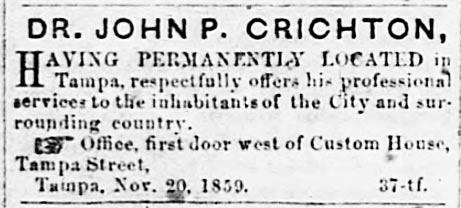 Tampa’s 7th Mayor Tampa’s 7th Mayor
JOHN P.
CRICHTON
Physician
Term: February 1, 1860 – February 2, 1861
Born: September 7, 1821, St. Mary’s, GA.
Died: November 8, 1893, Tampa
John Crichton attended
New York State Medical College before he arrived in Tampa,
and began a successful medical practice here. He was a
member of the Board of Health, and soon committed to
politics. Crichton married Adelaide Christy Kennedy, the
widow of Thomas P. Kennedy, a local merchant. Crichton and
his wife had three children--one daughter, Mary, married
James McKay, Jr. with whom she had nine children.
As with many southerners,
Crichton was afraid and angry over the anti-slavery violence
in Kansas and growing abolitionist movement in the northern
states. Only months before his election, on October 16,
1859, John Brown, with 22 men, captured the federal arsenal
at Harper’s Ferry, Virginia. In Tampa, there was fear that
abolitionists would attempt a widespread uprising. With the
unofficial support of the mayor, residents took it upon
themselves to expel anyone suspected of abolitionist
sentiments and, in some cases, those that were northern
born.
The State of Florida passed
an ordinance of secession on January 10, 1861, and soon
became one of the states of the “Confederate States of
America.” In September 1861, the “Sunny South Guards,” a
local company commanded by Captain John T. Lesley, was
mustered into service. The official response of Mayor
Crichton and the City Council was to establish a “City
Watch.” Under the auspices of the city marshal, local men,
between the ages of 18 to 45, patrolled the streets and
outskirts of Tampa. While they never found any signs of
insurrection, the “City Watch” did arrest citizens for drunk
and disorderly behavior, petty theft, and alerted residents
of fires. |
|
The Mayors of Tampa 1856 - 2015,
A project of the City of Tampa, City of Tampa
|
|
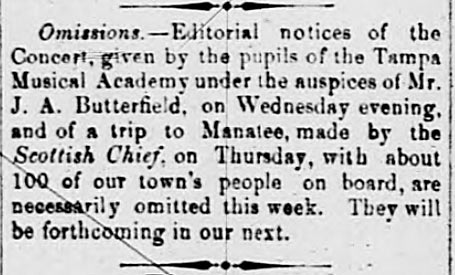 |
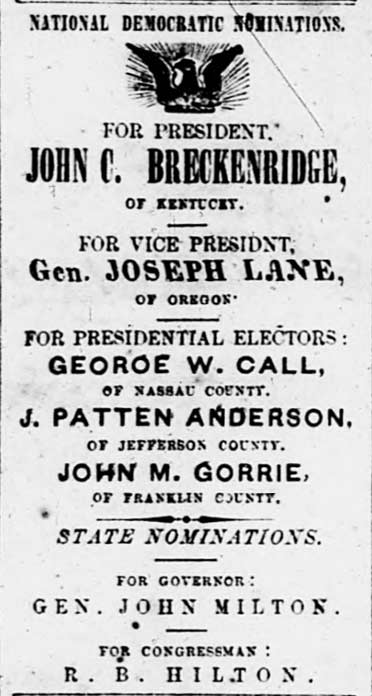 |
|
Aug. 4,
1860 Florida Peninsular references a trip to the Manatee
made by the Scottish Chief on the previous Thursday, which
would have been on Aug. 2nd. |
| |
Aug 4, 1860
Peninsular's endorsements for the upcoming election. |
|
Aug. 11, 1860 Florida Peninsular
An account of the Aug. 2, 1860 pleasure cruise to Manatee
on the Scottish Chief
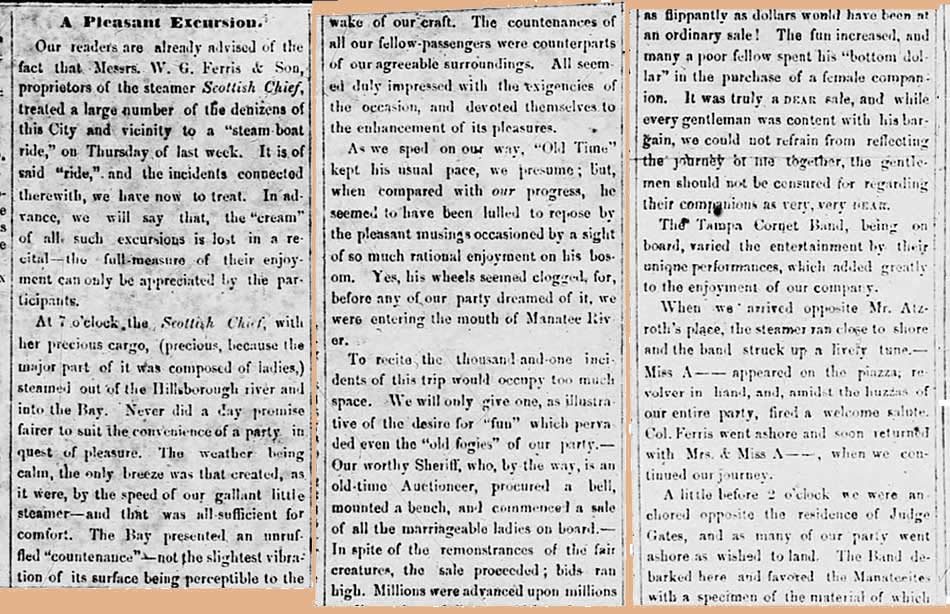
Column 3 above continues on Column 1
below.
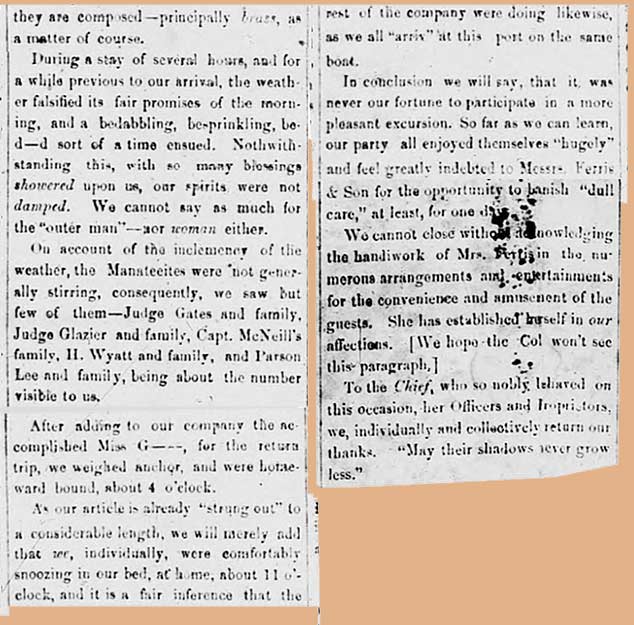 |
|
Aug. 11, 1860 Florida Peninsular
A report on the Salvor's activity
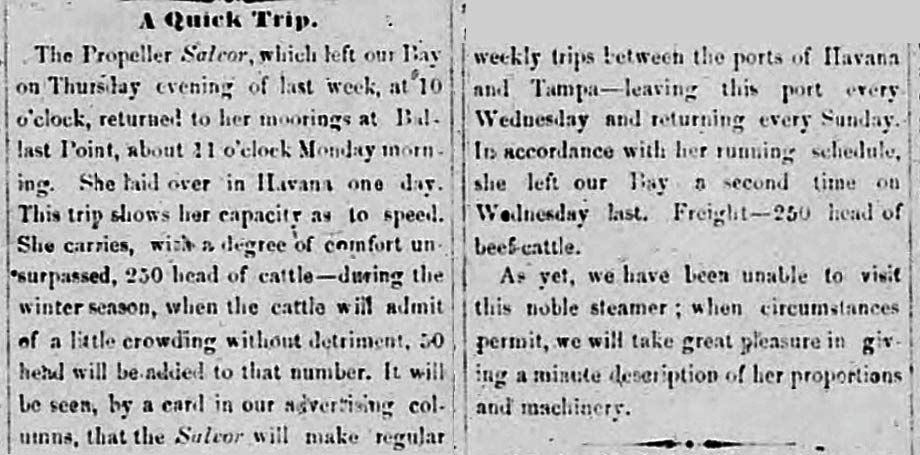 |
|
|
1860 - Magbee Wins a Senate Seat at age 40
In 1860
the political tides turned, and during the election year, a
bitter election season, with a little serendipity, two
pro-frontier candidates attained legislative seats -- Magbee
managed a comeback by defeating William B. Hooker’s
son-in-law, Benjamin Hagler, for election as southwest
Florida’s state senator, and Joseph Howell was victorious in
the House.
|
|
|
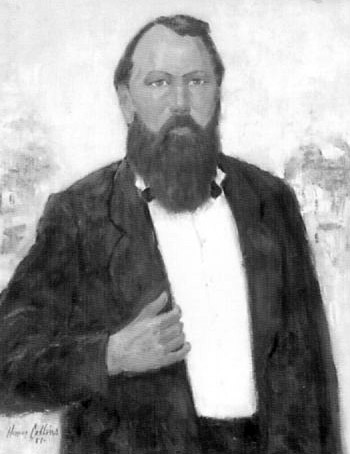
William B. Hooker
Photo
from LaMartin.com |
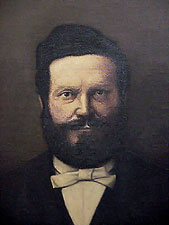
Madison Post
Tampa's 5th mayor
Photo from City of Tampa |
|
Benjamin Hagler, who became Wm. B.
Hooker's son-in-law in 1851, succeeded Hooker’s brother John as
sheriff in 1849 and remained in office as Sheriff until 1853. John
Parker (who had married the widow of Hooker's brother Stephen) was
elected to the county commission in 1849 for a two-year term. Thus
Hooker’s position and power were enhanced by the presence of his
relatives in high positions. Hooker and his wife Mary were
concerned that their children marry well and live comfortably.
They gave $2,000 a year to each son-in-law. Capt. Hooker was
opposed to his daughter, Martha, marrying Benjamin Hagler, whom he
considered an "old fogy" with an irritating speech impediment. He
preferred that she marry her suitor, George G. Keen, from Columbia
County. But Mrs. Hooker prevailed, believing Sheriff Hagler to be
a wealthy match for her daughter. As it turned out, Martha married
Hagler in 1851, but the marriage ended in divorce in 1866.
|
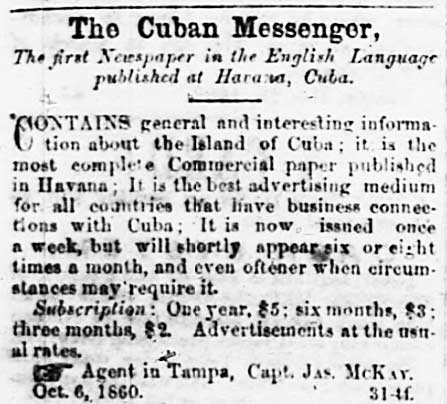 |
|
|
|
|
1860 Federal Census: Magbee a Wealthy Man
At the end of 1860, James T. Magbee was a wealthy man. He had 760
acres of land and improvements valued at $3,000 and 14 slaves
worth $8,500.
The
census reported his household in the city of Tampa
and the value of his personal property, including slaves, at
$13,700.
He
was listed as 40 years old, which is consistent with an 1820 birth
year. His wife, Susan (Tatum) was 29--an 11-year age
difference. Living a few households away was William B. Hooker and
his famil
|
1860 U.S. Census of J. T. Magbee and first wife Susan in Tampa.

|
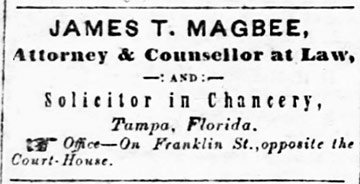 |
|
Magbee ad in May 1861
Peninsular newspaper--an ad he had been running since at
least Feb. 1855. |
Magbee had a successful law practice and some years in the past,
before 1858, had represented such prominent clients as William B.
Hooker, James McKay and Francis A. Hendry before the State Supreme
Court. Occasionally, he worked with fellow attorneys James Gettis
or Ossian B. Hart to jointly represent a client. Magbee and Hart
had become good friends. In the fall of 1857, they and their wives
took a vacation to "the north," and after almost eleven years of
marriage to Susan Tatum, the Magbees had no children.
|
 |
|
Nov. 10, 1860 Peninsular - The Tampa Cornet Band gave a
concert on Nov. 8 to an appreciative audience. The
band is "an institution of which our citizens justly feel
proud. Long may it--blow!" |
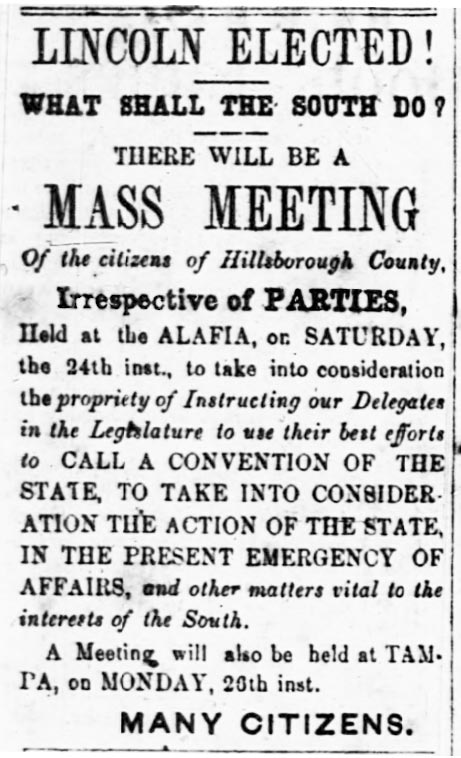 |
Nov. 17, 1860 Florida Peninsular
This subject and
election results by state fills just about the entire page
2 of this issue.
At the right and
below is only the beginning. The article goes on to
attempt to invalidate the election of President Lincoln in
several individual numbered statements.
Such were were the
Southern Democrats of the era, who were considered to be
the conservatives, with the anti-slavery Republicans
labeled as "radical."
The article is
racist but is presented here as a matter of historical
fact. This was the ugly history of Tampa.
The opinions in the article are
definitely not the opinions of this website.
 |
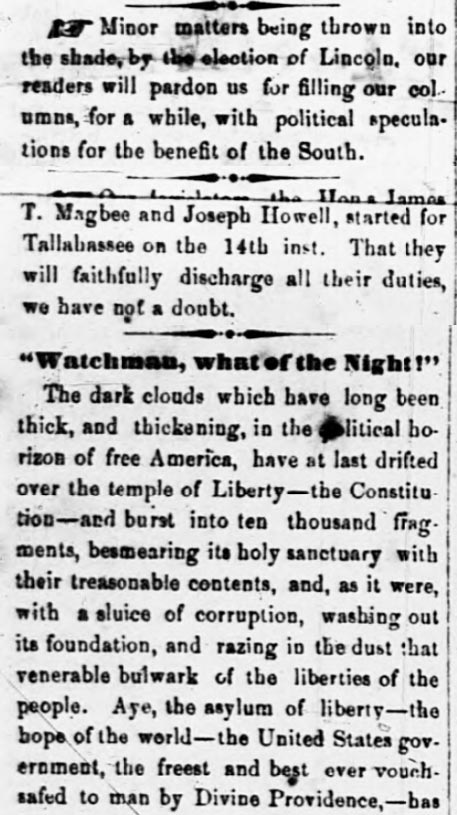 |
|
The right-side
column above continues below on the left. |
|
|
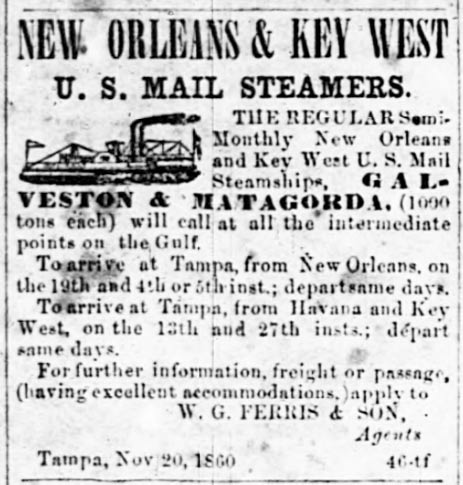 |
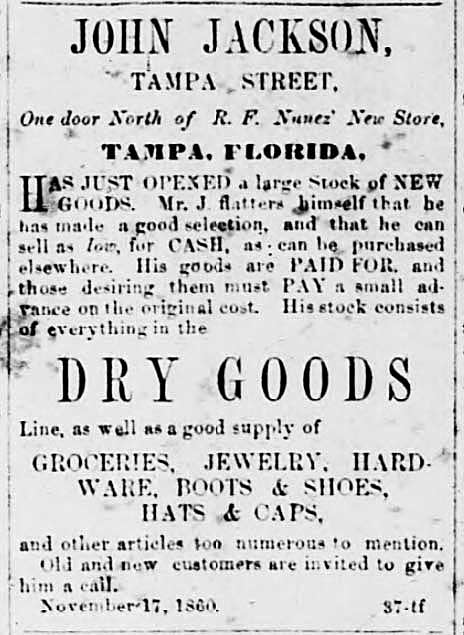 |
|
Notices
such as this one advising of the US Mail steamers schedule appeared in
every issue of the Peninsular (weekly). |
John
Jackson dry goods ad running since Nov. 17, 1860 from May 11, 1861
Peninsular. |
|
Page 1 - 1846 Magbee's arrival to 1860
Lincoln elected
SOURCES
(For this feature and the Magbee/Ulele Springs history feature.)
-
Beck Group, Architects, Constructors, website
-
Bureau of
Land Management, Government Land Office records
-
Biographical Directory of the United States Congress, 1774 -
Present
-
Biographical Sketches of Circuit Judges, Florida's 10th Judicial
Circuit - James T. Magbee
-
Blockaders, Refugees, & Contrabands - Civil War on Florida's
Gulf Coast, 1861-1865 by George E. Buker, "Henry Crane -
Unionist"
-
City of Tampa Local Historic Landmarks
-
City of Tampa Parks & Recreation Dept., Oaklawn Cemetery
-
City of Tampa website, Previous Tampa Mayors
-
Civilwaralbum.com, Courthouse Civil War Monument
-
Ecosphere Restoration Institute
-
Exploring Florida, Maps ETC.
-
Exploring Florida, Capt. James McKay, I, historic marker
-
Familysearch.org, census records, marriage records
-
Florida Civil War Blockades: Battling for the Coast By Nick Wynne,
Joe Crankshaw
-
FLORIDA HISTORICAL QUARTERLY, Vol. 70, No. 4, April 1992 -
TAMPA’S JAMES MCKAY AND THE FRUSTRATION OF CONFEDERATE
CATTLE-SUPPLY OPERATIONS IN SOUTH FLORIDA by CANTER BROWN, JR.
-
Florida Memory, State Library & Archives of Florida, Photographs
-
FLORIDA STATE UNIVERSITY LAW REVIEW, Vol. 6, Issue 1, Winter
1978, Frederick B. Karl Marguerite Davis - Impeachment in
Florida
-
Genealogy Trails, Old Guardianships
-
Hillsborough Lodge No. 25, F. & A.M.
-
Historium.com American History blog
-
History
of Hillsborough County, Florida, Narrative and
Biographical, 1928" by Ernest L. Robinson,
Director of High Schools of Hillsborough County, Formerly
Principal of Hillsborough
County High School.
-
Internet Archive, THE LIFE OF FERDINAND DE SOTO, DISCOVERER OF
THE MISSISSIPPI (Images)
-
Jean Street Shipyard
-
Journal of Civil War Era, Paradise Lost - Egmont Key
-
KEY WEST: THE OLD AND THE NEW,
by Jefferson Beale Browne, pub. 1912.
-
LaMartin.com, William B. Hooker, Orange Grove Hotel
-
Maps, Etc. Johnson's Florida, 1860 Johnson, A.J., Johnson's
New Illustrated Family Atlas (New York, NY: Johnson and
Browning, 1860)
-
Maps Etc., Asher & Adams, Florida,
1871
-
MEMOIRS OF GEORGIA, VOL 1. By the Southern Historical
Assoc., 1895.
-
National Fish Habitat Partnership
-
None Can Have Richer Memories: Polk County, Florida, 1940-2000.
Brown, Canter, Jr. Published by Tampa, FL: University of Tampa
Press, Polk County Historical Association, (2005). First
Edition. (2005)
-
Naval History and Heritage Command
-
Old Florida Ephemera and Musings - Tampa's Urban Springs
March 2, 2013
-
Old Florida blog - Ulele Spring 2.0 - April 2014 photos of the
spring construction and restoration
-
Ossian Bingley Hart: Florida's Loyalist Reconstruction Governor
By Special Assistant and Counsel to the President Canter Brown,
Jr, 1997
-
Pioneer Florida, Volume 2, Chapter 10, "A Self-Made
Scalawag" by Donald Brenham McKay Southern Publishing
Company, 1959
-
Scholar Commons, University of South Florida, SUNLAND
TRIBUNE, Nov. 1, 1994 - Politics, Greed, Regulator Violence, and
Race in Tampa, 1858-1859 By Canter Brown, Jr.)
-
States in the Senate: Florida
-
Tampa, A History of the City and the Tampa Bay Region of
Florida, by Karl H. Grismer, edited by D. B. McKay, 1950.
-
Tampa Bay History
Magazine, Vol. 19, No. 2- Fall/Winter 1997 Bringing Justice
to the Frontier: Crime and Punishment
in Antebellum Hillsborough County by James M. Denham.
-
Tampa-Hillsborough County Public Library, Burgert Brothers
digital collection
-
Tampa Riverwalk Monument Trail
-
Tampa Seeks Developers to Turn Historic Water works building
into Cafe Sept. 2011, Tampa Bay Times, Richard
Danielson
-
Tampa Tribune TBO.COM
Princess Ulele is local history
mystery, May 31, 2014, by Paul Guzzo, Times Staff Writer.
-
TAMPA'S HISTORIC CEMETERIES, by Shelby Jean Roberson Bender
& Elizabeth Laramie Dunham- Grave site of the Magbee family.
-
The American Battlefield Protection Program
-
The Florida Historical Society, Governor William Dunn Moseley
-
The Hillsborough River Raid and Battle of Ballast Point
by Lewis Zerfas, America's Civil War magazine.
-
The Mayors of Tampa 1856 - 2015
-
The New York Times, 1862 News
-
The Robles Family During the Civil War in Tampa, by Karen
Lucibello
-
The Scalawags: Southern Dissenters in the Civil War and
Reconstruction, by James Alex Baggett
-
The South Florida Rifles, Officers Biographies
-
THE SUNLAND TRIBUNE, Journal of the TAMPA HISTORICAL
SOCIETY, Volume XX November, 1994,
JAMES T. MAGBEE:
“Union Man, Undoubted Secessionist, and High Priest in the
Radical Synagogue” By Kyle S. VanLandingham, Editor in Chief
-
THE SUNLAND TRIBUNE, Journal of the TAMPA HISTORICAL SOCIETY,
Volume VIII Number 1 November, 1982 - JAMES McKAY, I, THE
SCOTTISH CHIEF OF TAMPA BAY By Tony Pizzo
-
THE SUNLAND TRIBUNE, Journal of the TAMPA HISTORICAL SOCIETY,
Volume XVII November, 1991 Journal
of the Tampa Historical Society
-
TAMPA AND THE
COMING OF THE RAILROAD, 1853-1884, by Canter Brown, Jr.
-
THE SUNLAND TRIBUNE, Journal of the TAMPA HISTORICAL SOCIETY ,
Vol. 10 December, 1984- TURN TO GREATNESS - Dr. John P. Wall, By
Hampton Dunn
-
THE SUNLAND TRIBUNE, Journal of the TAMPA HISTORICAL SOCIETY,
Volume XIV November, 1988 - FORT BROOKE: THE FIRST TEN YEARS By
Tony Pizzo
-
THE SUNLAND TRIBUNE, Journal of the TAMPA HISTORICAL SOCIETY,
Volume XVIII November, 1992 - THE TAMPA FLORIDA BREWERY, INC.
FLORIDA’S FIRST BREWERY By CLIFFORD C. (KIP) SHARPE
-
THE SUNLAND TRIBUNE, Journal of the TAMPA HISTORICAL SOCIETY,
Volume VI Number 1 November, 1980 - THOSE HELL-RAISIN’ TAMPA
NEWSPAPERS By Hampton Dunn - James T. Magbee
-
THE SUNLAND
TRIBUNE, Journal of the TAMPA HISTORICAL SOCIETY, Volume XXIII
November, 1997 - TO FAITHFULLY DISCHARGE MY DUTY: THE LIFE AND
CAREER OF PERRY GREEN WALL By Kyle S. VanLandingham, and JAMES
GETTIS: TAMPA PIONEER LAWYER By KYLE S. VanLANDINGHAM.
-
THE SUNLAND TRIBUNE, Journal of the TAMPA HISTORICAL
SOCIETY, Volume XIX, Nov. 1993, THE KNOW-NOTHINGS OF
HILLSBOROUGH COUNTY, by Spessard Stone
-
THE SUNLAND TRIBUNE,
Journal of the TAMPA HISTORICAL SOCIETY, Volume XXII, Nov. 1996,
CAPTAIN WILLIAM B. HOOKER: FLORIDA CATTLE KING, By Kyle
VanLandingham, and TAMPA IS THE PLACE OF PLACES: The William G.
Ferris Family Collection, by Kyle S. VanLandingham
-
The War of the Rebellion:
v. 1-53 Formal reports, both Union and Confederate, of
the first seizures of United States property in the southern
states, and of all military operations in the field, with the
correspondence, orders and returns relating specially thereto.
1880-98.
-
ST. PETE TIMES, Feb. 21, 2014 -
Ulele Spring will soon will be a feature in Water Works Park, a
stop along the Tampa Riverwalk. A defender of freshwater
springs restores one in Tampa - by Elisabeth Parker, photo by
Skip O'Rourke
-
Ulele Restaurant
website
-
Ulele, a restaurant for the next century, by Tribune Staff
writer/photographer Jeff Houck, Aug. 10, 2014
-
University of
Florida, George A. Smathers Libraries, Digital Map Collections,
Sanborn Fire Insurance Maps of Tampa
-
University of Minnesota Library, Clarence Darrow digital collection
-
U.S. Naval History, Heritage Command, Photograph Collection
Saving Fairyland
Page 1
Page 2
Page 3
Page 4
Page 5
Page 6
Page 7 (Fairyland at Ulele - A History of
Magbee/Ulele Spring & Tampa's Waterworks)
Lowry Park/Fairyland History
Herman - King of the Zoo
Safety Village
Fantasia Golf
TampaPix Home |


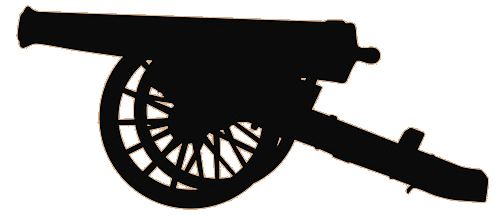
 TampaPix
is grateful to the Judges of the
TampaPix
is grateful to the Judges of the






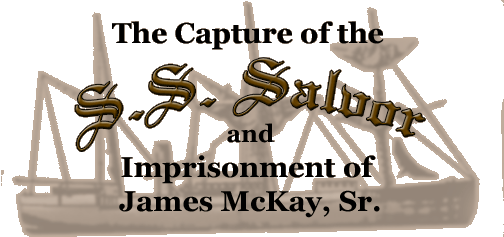
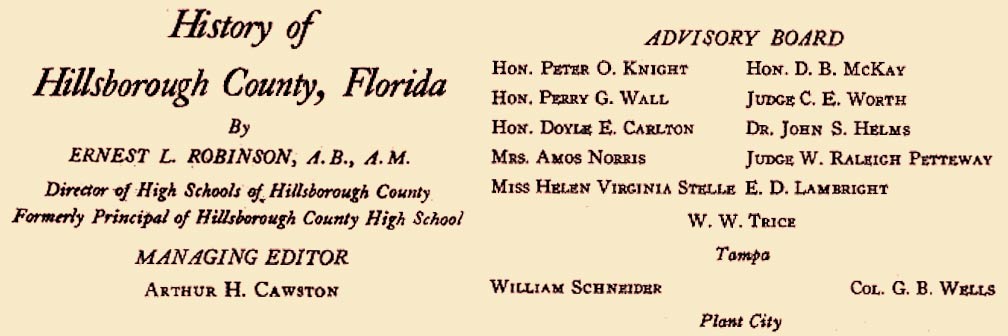
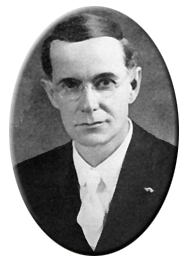
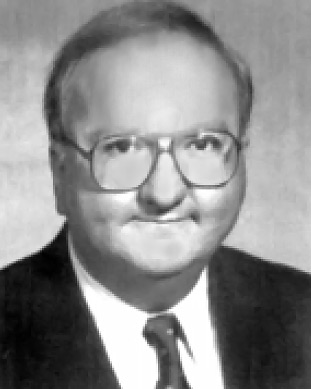






























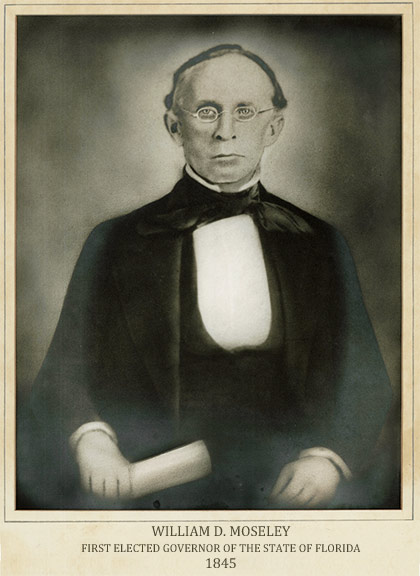

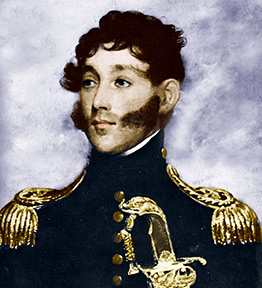






 Born
in County Monaghan, Ireland, Jackson immigrated with his
brother Thomas to the United States in 1841. The brothers
traveled to New Orleans where John worked as an Assistant
City Engineer for two years.
Born
in County Monaghan, Ireland, Jackson immigrated with his
brother Thomas to the United States in 1841. The brothers
traveled to New Orleans where John worked as an Assistant
City Engineer for two years. 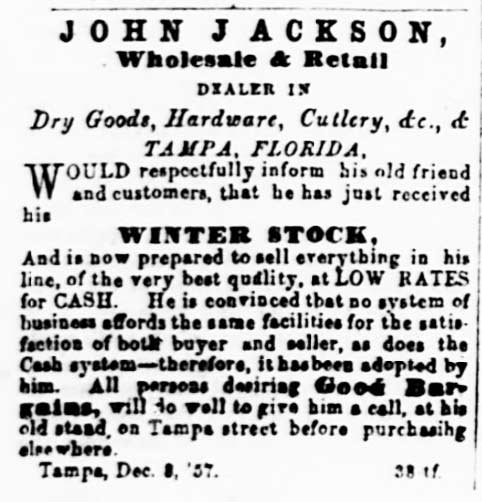
 At
this time the government was commanded by Lt. Col.
Charles Jarvis Whiting, who aided in the initial survey
work, and the first street laid out was named in his honor.
Jackson named most of the other streets after presidents,
also one for Franklin, one for Lafayette and
one for his friend, Tampa's first City Clerk William
Ashley who settled in Tampa in 1830, and whose residence
was located on the west half of the block on the southwest
corner of Lafayette and Tampa streets. The blocks were laid
out in one-acre squares. Those between Franklin street and
the river front were each divided into six lots 70 feet by
106. The blocks east of Franklin street were divided into
four lots. each, 106 feet square. The streets were given a
width of eighty feet.
At
this time the government was commanded by Lt. Col.
Charles Jarvis Whiting, who aided in the initial survey
work, and the first street laid out was named in his honor.
Jackson named most of the other streets after presidents,
also one for Franklin, one for Lafayette and
one for his friend, Tampa's first City Clerk William
Ashley who settled in Tampa in 1830, and whose residence
was located on the west half of the block on the southwest
corner of Lafayette and Tampa streets. The blocks were laid
out in one-acre squares. Those between Franklin street and
the river front were each divided into six lots 70 feet by
106. The blocks east of Franklin street were divided into
four lots. each, 106 feet square. The streets were given a
width of eighty feet.

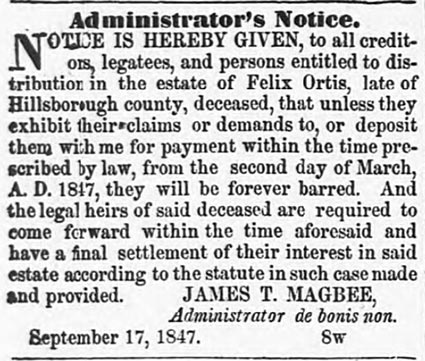
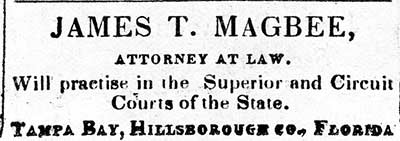









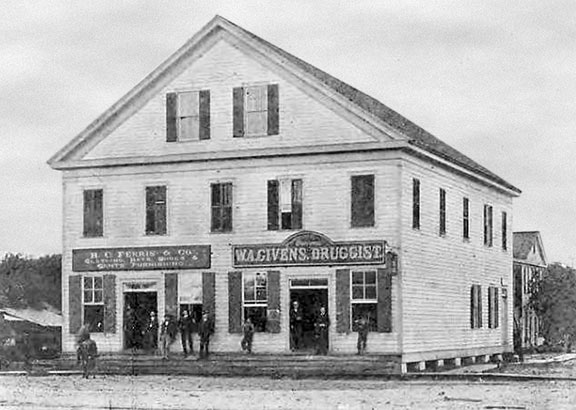



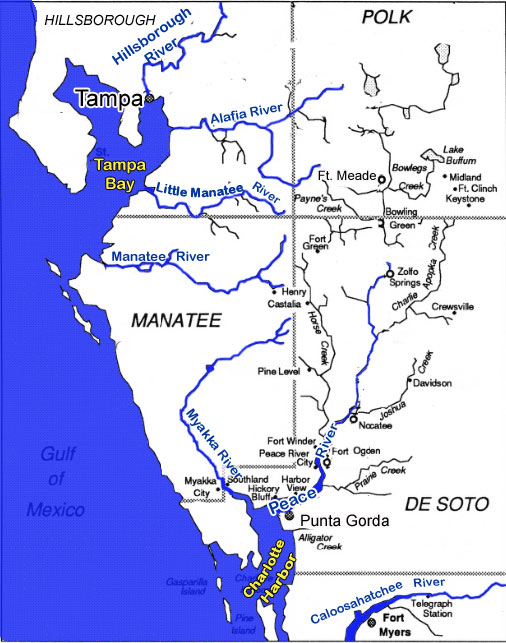


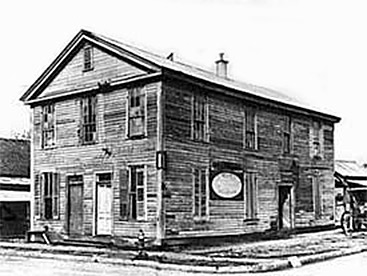





 I
am under the impression that my father was one of the
charter members of this lodge, and had as much if not more
than any other citizen in its organization and construction
but later on had a difficulty with one of the members,
withdrawing from the lodge, saying he would never enter it
again as long as this party was a member, and I do not think
that he ever attended a lodge meeting after that.
I
am under the impression that my father was one of the
charter members of this lodge, and had as much if not more
than any other citizen in its organization and construction
but later on had a difficulty with one of the members,
withdrawing from the lodge, saying he would never enter it
again as long as this party was a member, and I do not think
that he ever attended a lodge meeting after that.


 An
angry Dr. Lucius Rogers followed Magbee to Tallahassee to contest
the election. In spite of some "slight irregularities," the
Assembly declared Magbee the winner by a vote of 92 to 88. Rogers
received "$33 for eleven days attendance, and $70 for his
traveling expenses from Hillsborough Co. to this place, a distance
of three hundred and fifty miles."
An
angry Dr. Lucius Rogers followed Magbee to Tallahassee to contest
the election. In spite of some "slight irregularities," the
Assembly declared Magbee the winner by a vote of 92 to 88. Rogers
received "$33 for eleven days attendance, and $70 for his
traveling expenses from Hillsborough Co. to this place, a distance
of three hundred and fifty miles." 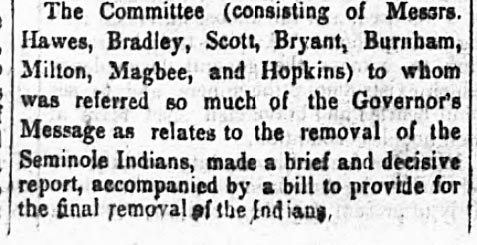



 These
two Sanborn fire insurance maps from the University of
Florida Sanborn Maps collection show the sawmill area when
it was Tampa Steam Ways (left) and close up (right) in 1915.
It was located just south of the Magbee Spring and Tampa
Waterworks in the Tampa Heights area along the river.
Today, the area formerly occupied by McKay's sawmill is the
southern tip of Tampa Waterworks Park and part of the
I-275
ramp system downtown.
These
two Sanborn fire insurance maps from the University of
Florida Sanborn Maps collection show the sawmill area when
it was Tampa Steam Ways (left) and close up (right) in 1915.
It was located just south of the Magbee Spring and Tampa
Waterworks in the Tampa Heights area along the river.
Today, the area formerly occupied by McKay's sawmill is the
southern tip of Tampa Waterworks Park and part of the
I-275
ramp system downtown.












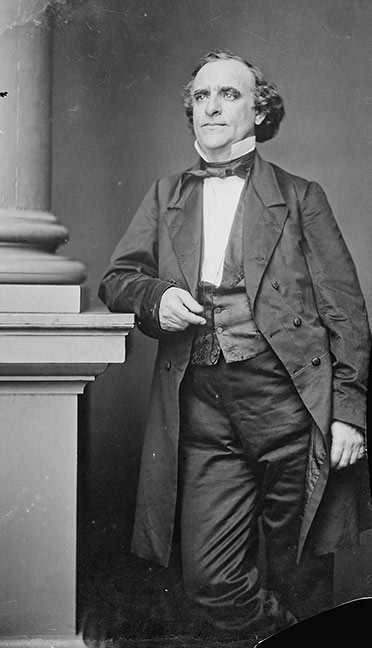





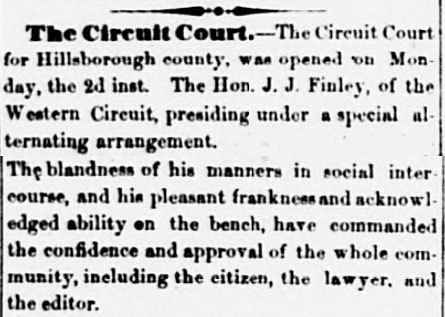
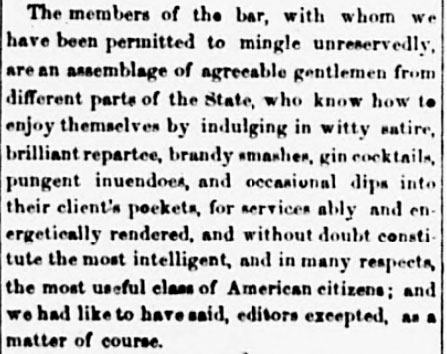






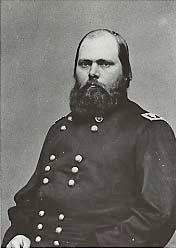


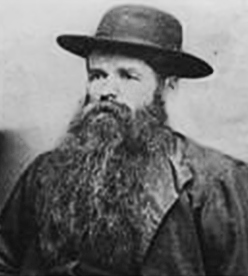

 In
1857 the Florida Congress authorized land grants to
subsidize construction of railroads, and it was believed
that the action, as one newspaper put it, "doubtless will
operate as a stimulus to effect an immediate practical
commencement of that portion of the road (to Tampa.)"
Everyone expected that from Gainesville the road would
head south to Tampa. By April, 1858, seventy miles had
been completed from Fernandina and thirty additional miles
to Gainesville had been graded.
In
1857 the Florida Congress authorized land grants to
subsidize construction of railroads, and it was believed
that the action, as one newspaper put it, "doubtless will
operate as a stimulus to effect an immediate practical
commencement of that portion of the road (to Tampa.)"
Everyone expected that from Gainesville the road would
head south to Tampa. By April, 1858, seventy miles had
been completed from Fernandina and thirty additional miles
to Gainesville had been graded.


 There
was a political meeting held at the Tampa Town Hall on the evening
of April 26, for the purpose of appointing delegates to the
Democratic State Convention. Mayor, regulator and former
Know-Nothing Madison Post was chosen along with Jesse Carter,
James Gettis, James McKay and others. Magbee was not chosen and
apparently was not present.
There
was a political meeting held at the Tampa Town Hall on the evening
of April 26, for the purpose of appointing delegates to the
Democratic State Convention. Mayor, regulator and former
Know-Nothing Madison Post was chosen along with Jesse Carter,
James Gettis, James McKay and others. Magbee was not chosen and
apparently was not present. 





 On
June 19, 1858, the Peninsular announced the appointment of Hamlin
V. Snell as Deputy Collector at the port.
On
June 19, 1858, the Peninsular announced the appointment of Hamlin
V. Snell as Deputy Collector at the port.
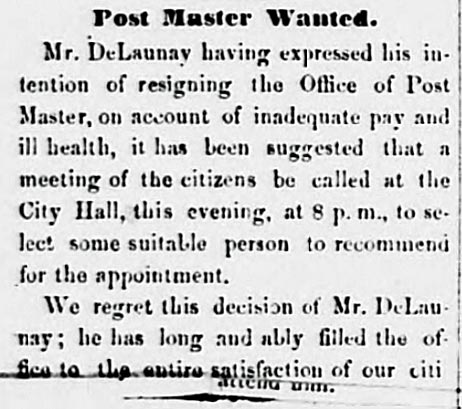



 While
deeply involved in his varied enterprises, in 1859, Captain
McKay, Sr. was elected Mayor of Tampa. He served as Tampa's
6th mayor, from February 12, 1859 to Feb. 1, 1860, the
only non-U.S. citizen to ever do so.
While
deeply involved in his varied enterprises, in 1859, Captain
McKay, Sr. was elected Mayor of Tampa. He served as Tampa's
6th mayor, from February 12, 1859 to Feb. 1, 1860, the
only non-U.S. citizen to ever do so.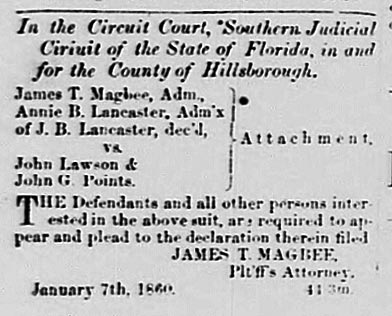
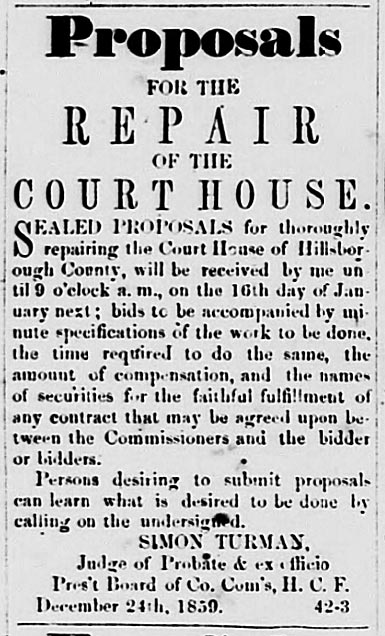
 Tampa’s 7th Mayor
Tampa’s 7th Mayor













